I am sharing here an idea for dog lovers. A basket for keeping foods of dogs. Let’s start..
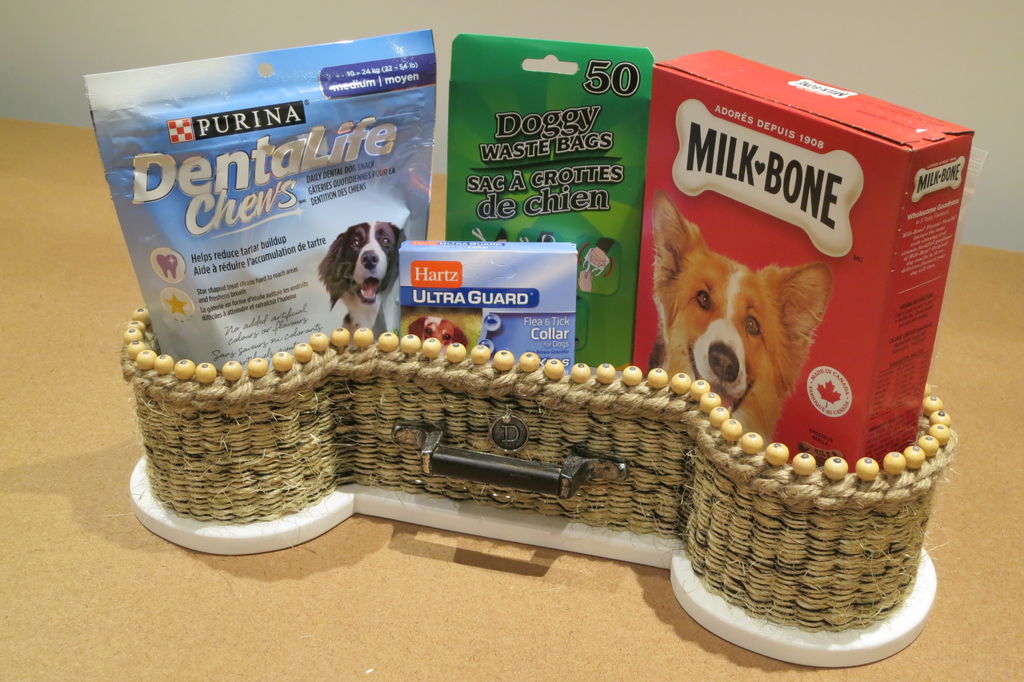
Required Material:
- Mini dowels
- Glue (white glue and hot glue)
- Wooden beads
- Twine
- Sisal rope
- Yarn
- MDF
- Door pulls (upcycled preferable)
- Charm (optional)
- Permanent marker – black
- Black acrylic paint
Draw Your Image and Cut Base:
I started by drawing out the bone shape on paper. By folding the paper in half and only drawing out half the bone, you’ll get a more even shape once it’s cut out. I taped the paper pattern to a scrap piece of MDF and my husband cut around it with a jigsaw. He rounded the top edges perimeter with sandpaper to smooth the sharp edges and then painted it white. I marked the holes at 1/2″ increments about ½” in from the edge. My husband drilled out the holes with a drill press so I could insert wooden dowels into the holes. Using a drill press is a real time saver and each hole can be drilled to the same depth for consistency. The dowels act as the ‘ribs’ of the basket to support the weaving.
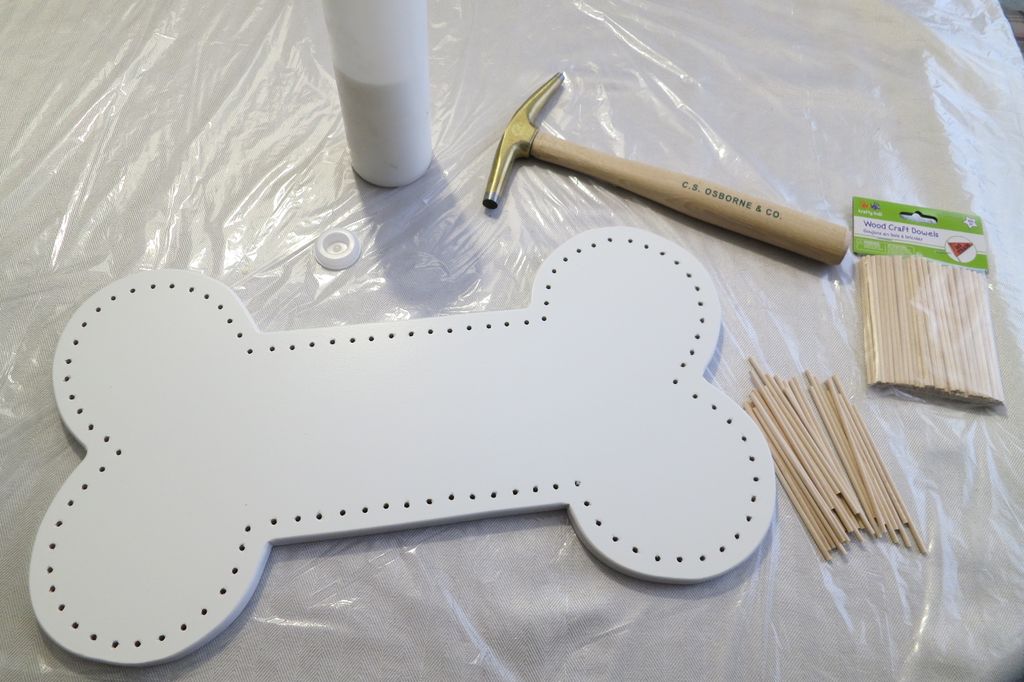
Glue Dowels:
I dabbed one end of each dowel into a bit of glue before inserting them into the holes.
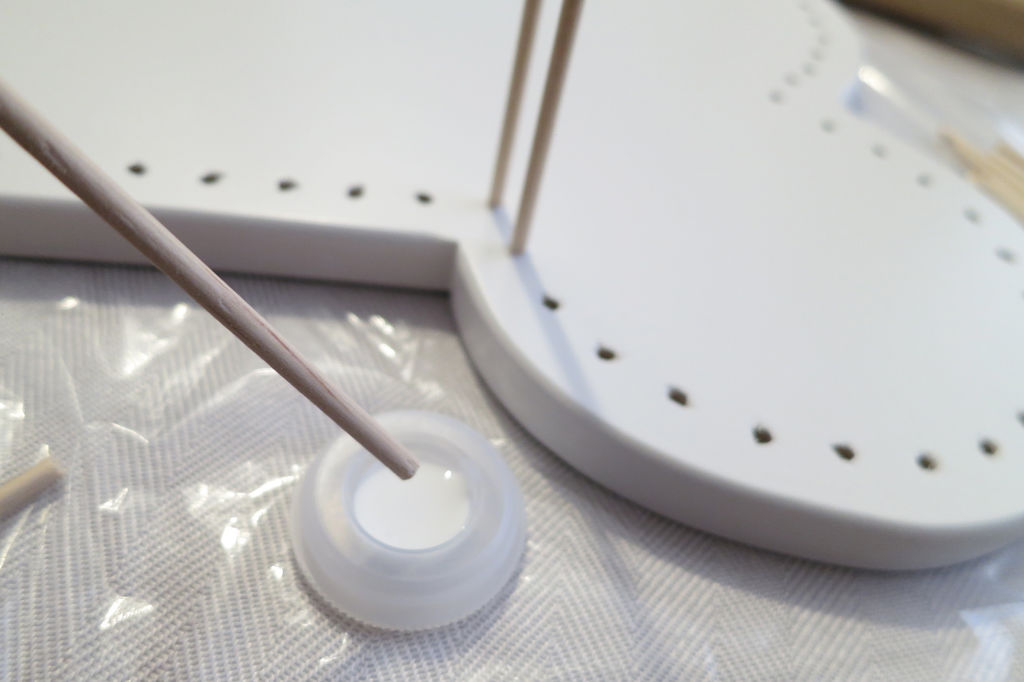
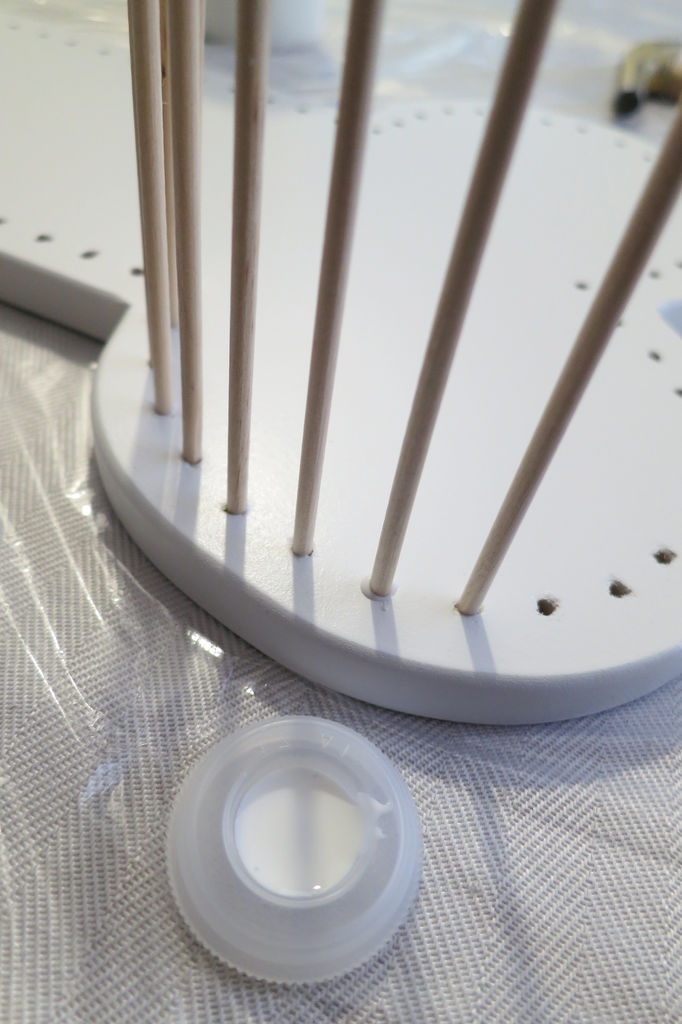
Let Dry:
Once all the dowels were glued, I let it dry 24 hours. Then it’s time to start weaving!
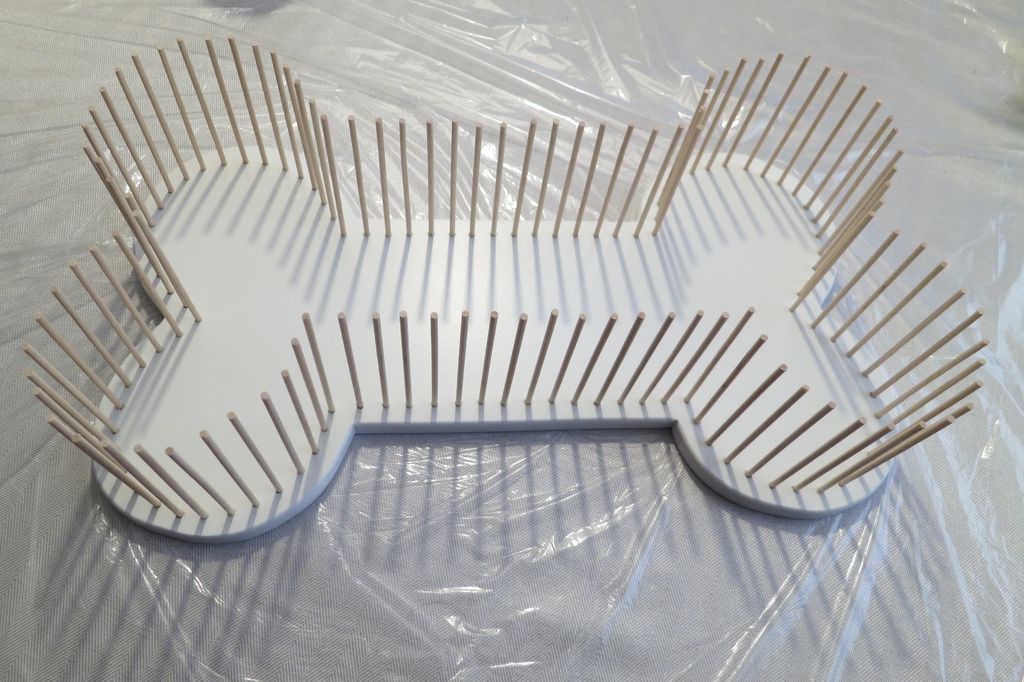
Coordinate Colors:
Our friend’s new pup is tan and black, so I thought I’d match up the colour of the basket by combining the dollar store twine with some black yarn I had leftover from a knitting project.
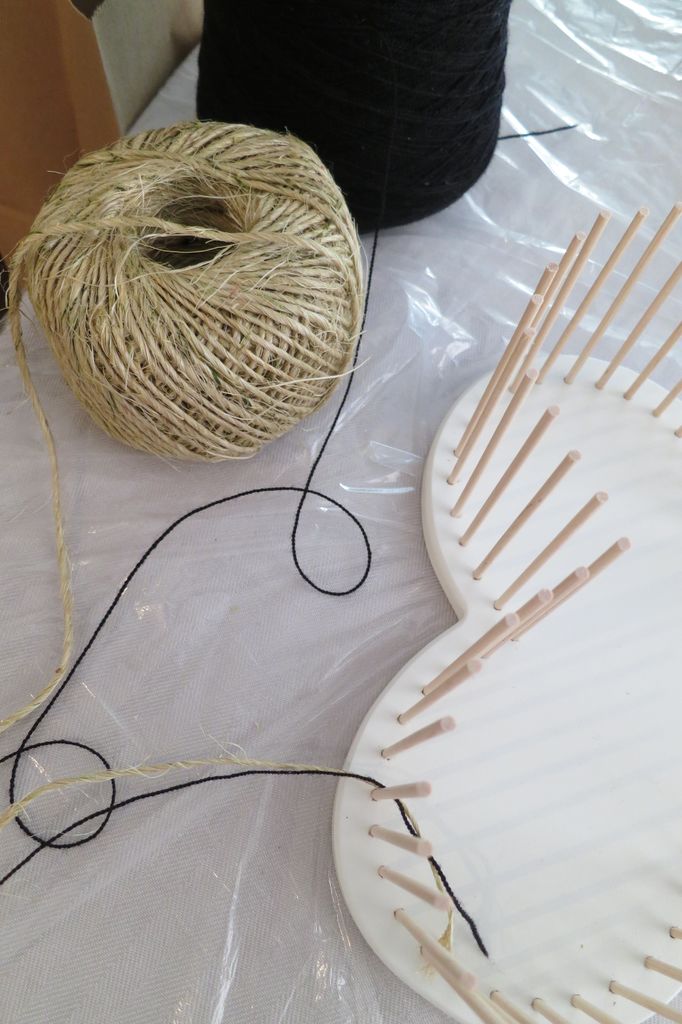
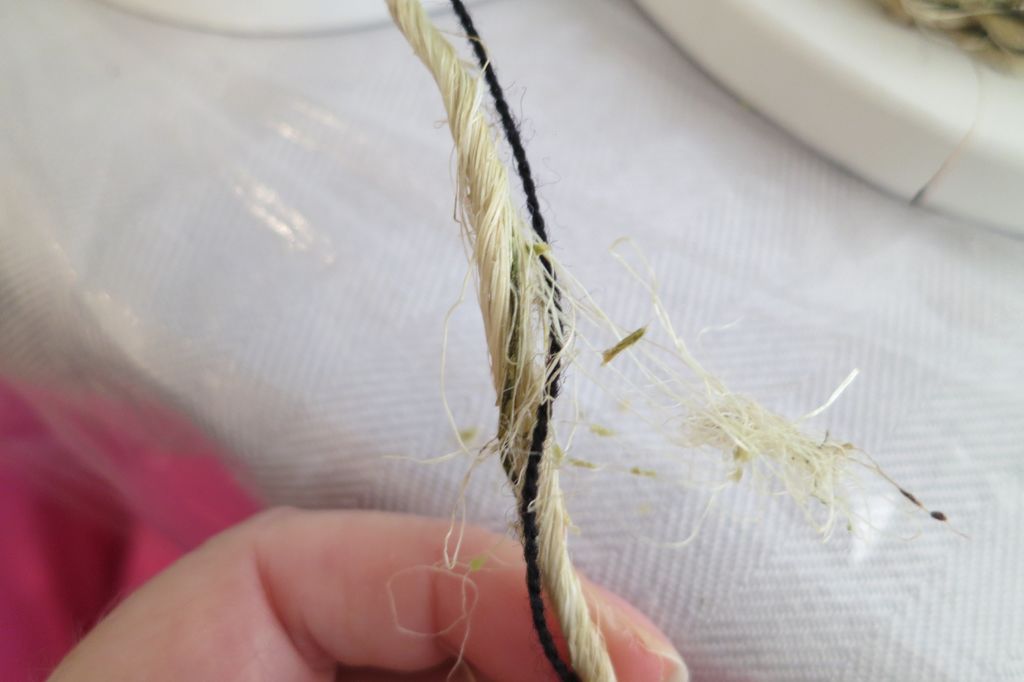
Start at One End:
Tie a knot and attach the combined twine and yarn to the middle dowel at one end of the bone.
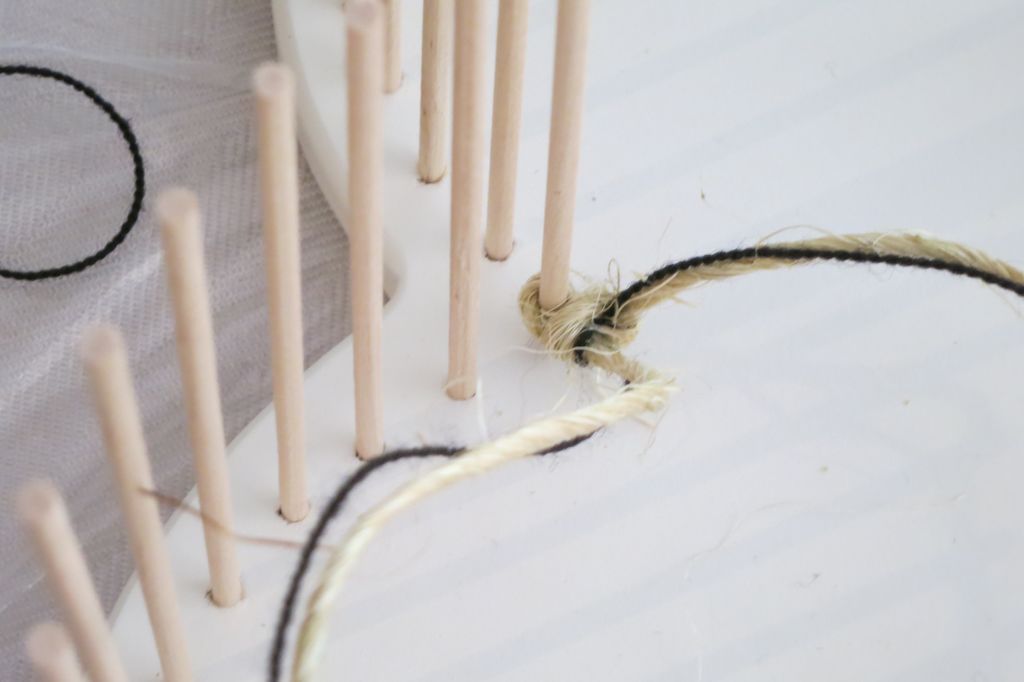
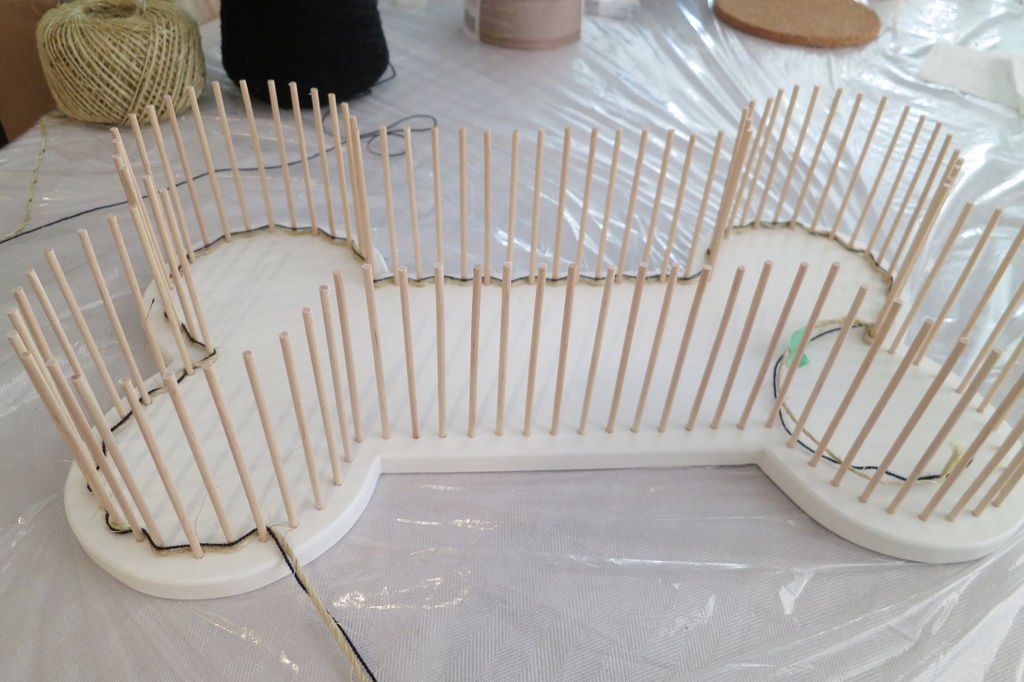
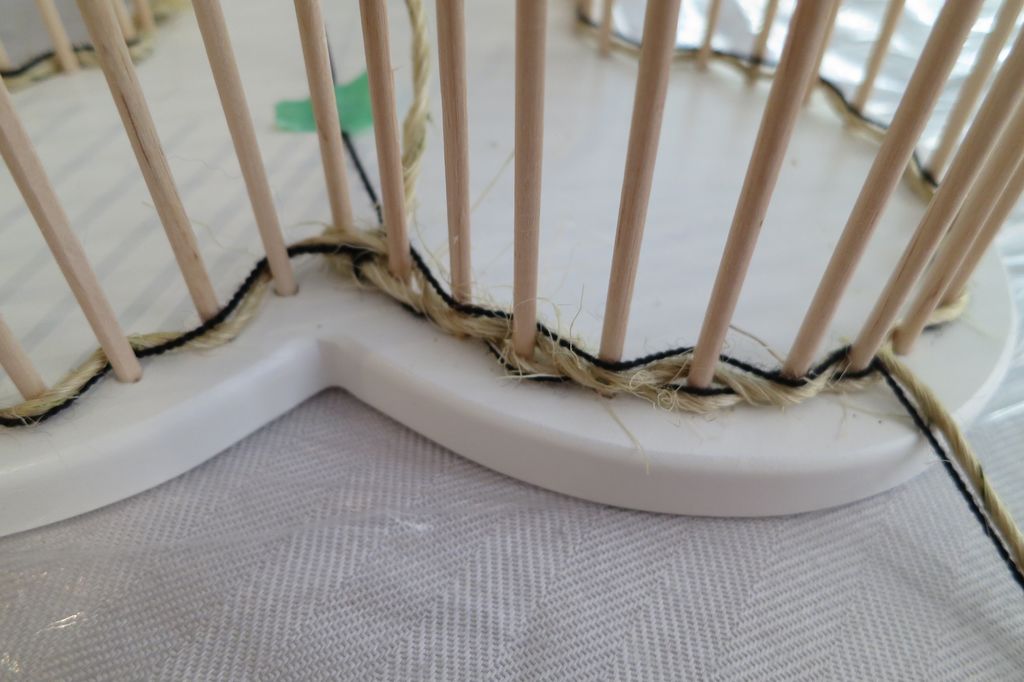
Start to Weave:
Begin weaving in and out around the entire shape.
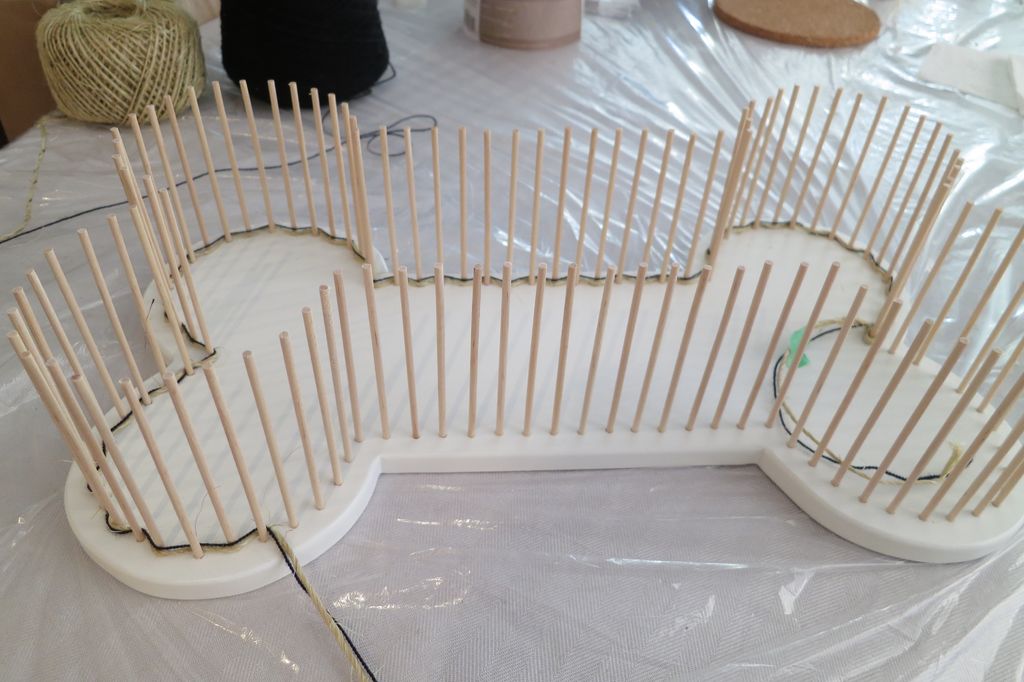
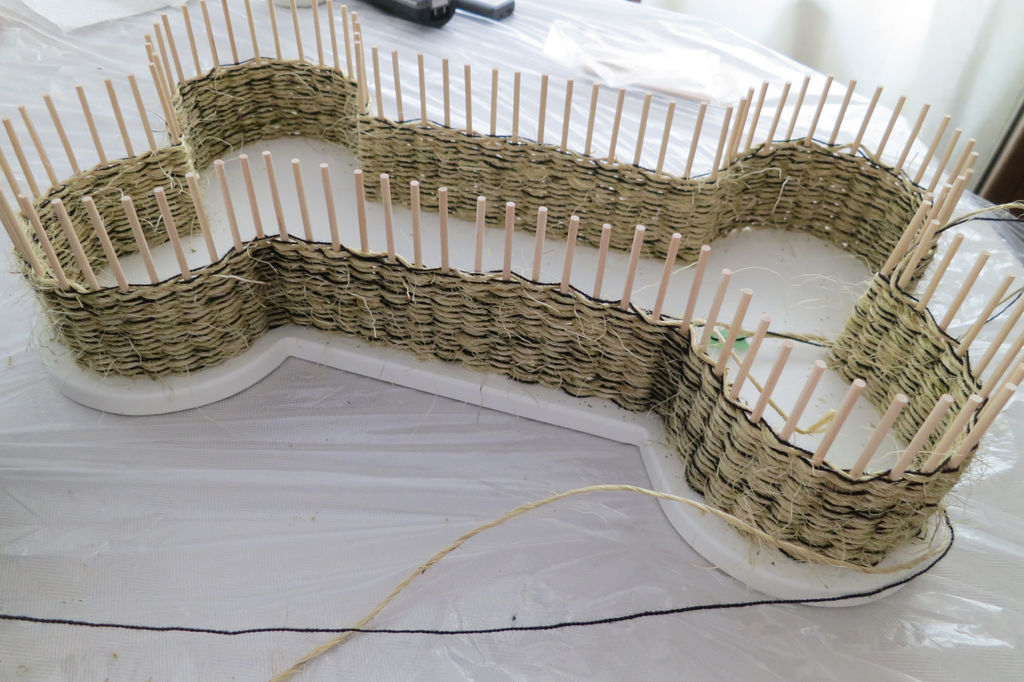
Odd or Even: Determine If You Need to Change Direction:
When I got back to where I started, I continued in the same direction. Note that if you have an odd number of dowels, you’ll be able to keep going around and around. However, if you end up with an even amount of dowels, you’ll have to double back and turn around when you reach where you started. Have a look at the picture showing another basket that I made previously to see how to ‘double back’. You can see that towards the top, I looped around both dowels just to stabilize and hold the corner together.
Add a Decorative Element:
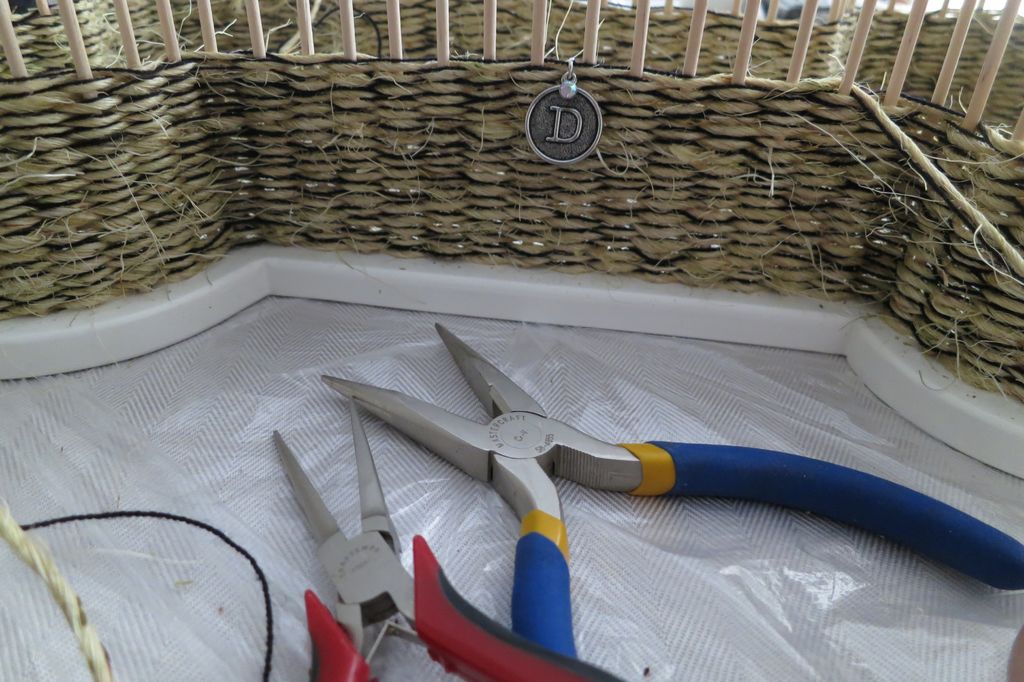
Our friend named the new pup Dot, so I added a charm with the letter ‘D’ to the front of the basket. At the exact centre of the basket, I opened up the link of the charm using two needle nose pliers and then squeezed it closed again around the twine and continued weaving.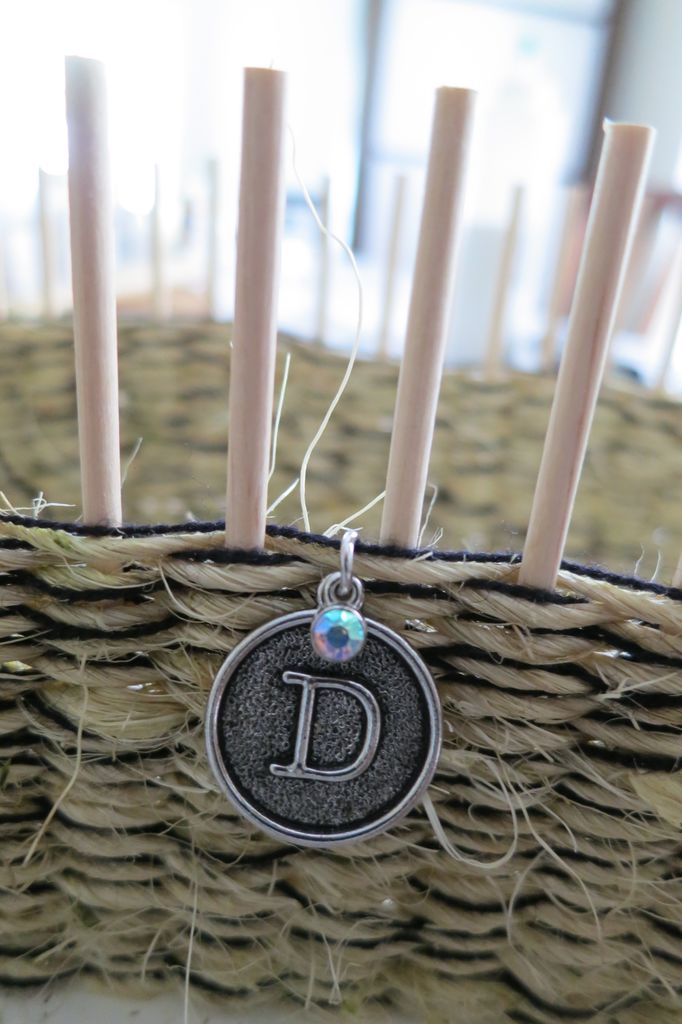
Finish the Top Edge:
When you’re about an inch from the top of the dowels and you’re back to where you started, bring the end of the twine to the inside of the basket, but don’t cut it off. To finish off the top and create a nice edging, use a thicker piece of rope: fold it in half and loop it around the same dowel.
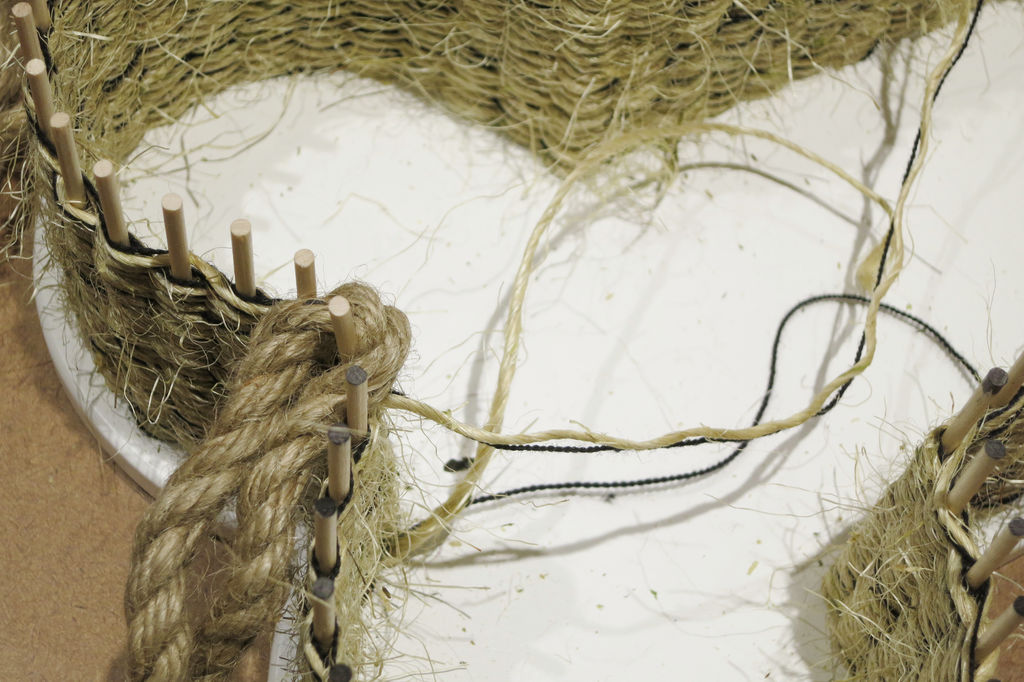
Add Thicker Rope:
Crisscross the rope around the dowels all the way around the perimeter of the bone until you’re back at the beginning again.
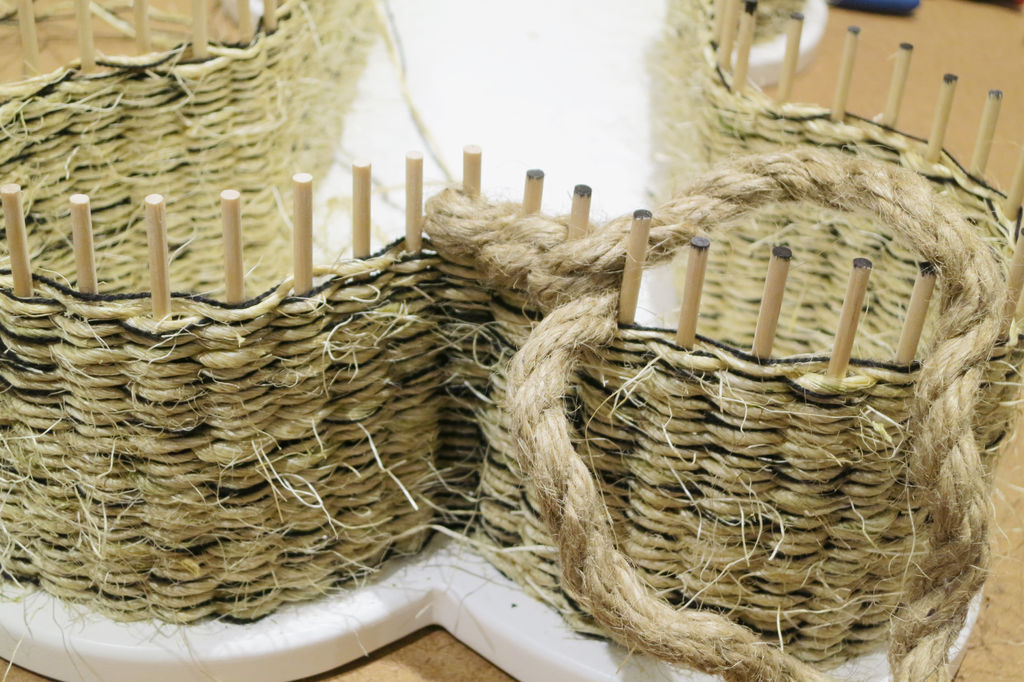
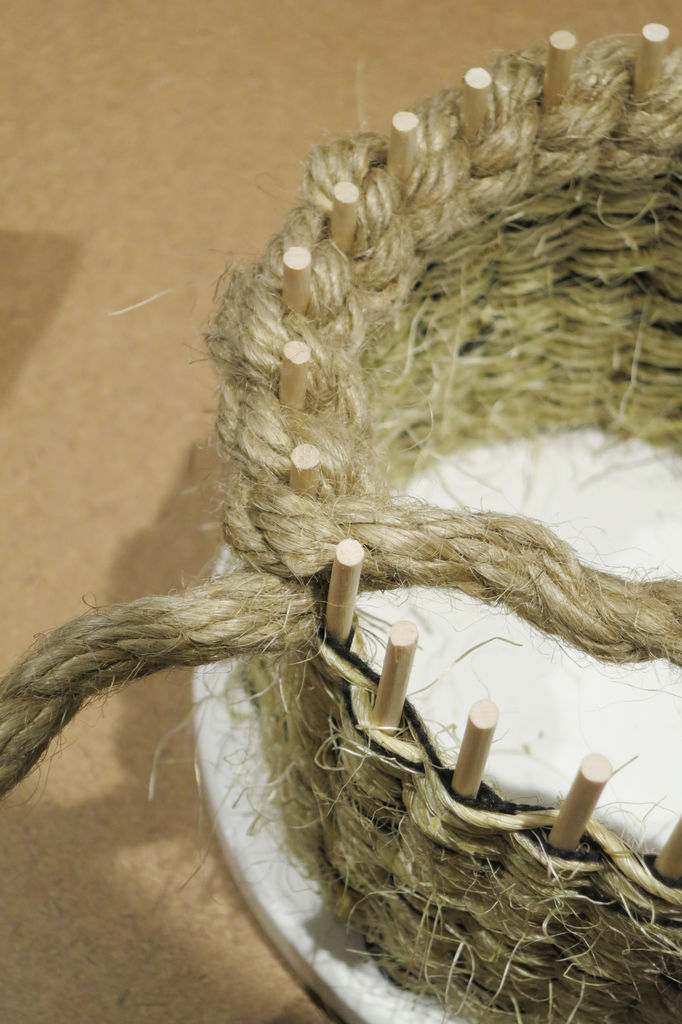
End the Edging:
To end the edging, bring both pieces of rope to the inside of the basket. You’ll use the end of the twine to wrap around the rope and finish it off.
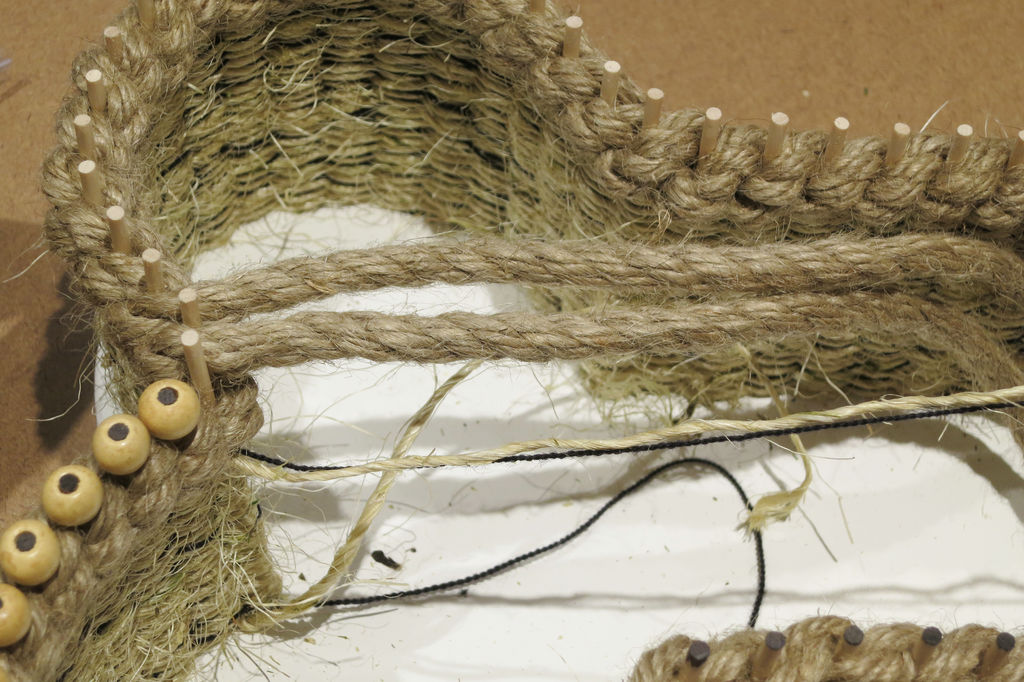
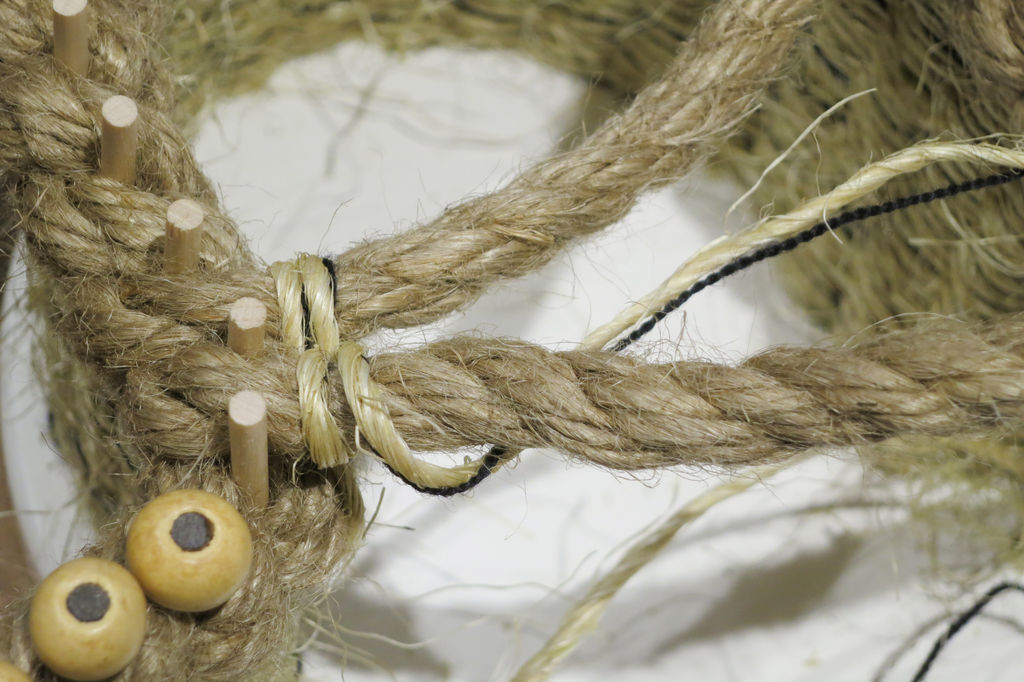
Wrap Twine Around Rope:
Wrap the twine around the rope ends in a figure eight until it’s the length of the inside wall of the basket.
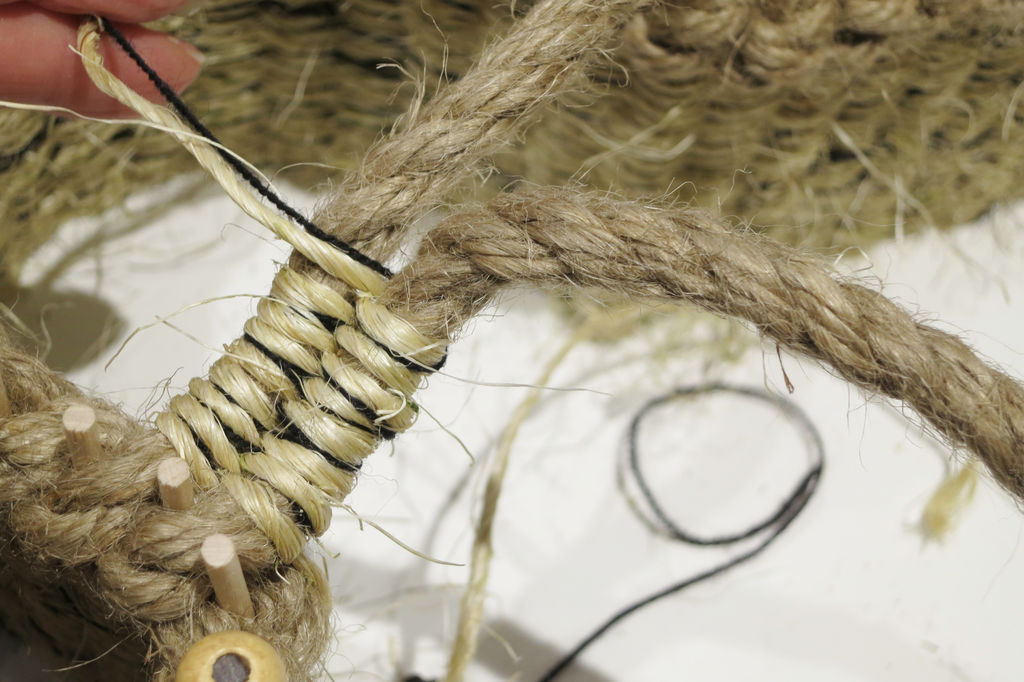
Glue Down to Inside of Basket:
Knot the twine and add some hot glue to secure the end to the back of the rope where it won’t be seen. Cut the end of the twine and the rope, then use hot glue to secure the rope to the inside of the basket so it blends in seamlessly. You can glue down the edge of the rope as well as putting a dollop on the base of the basket to keep the ends from lifting.
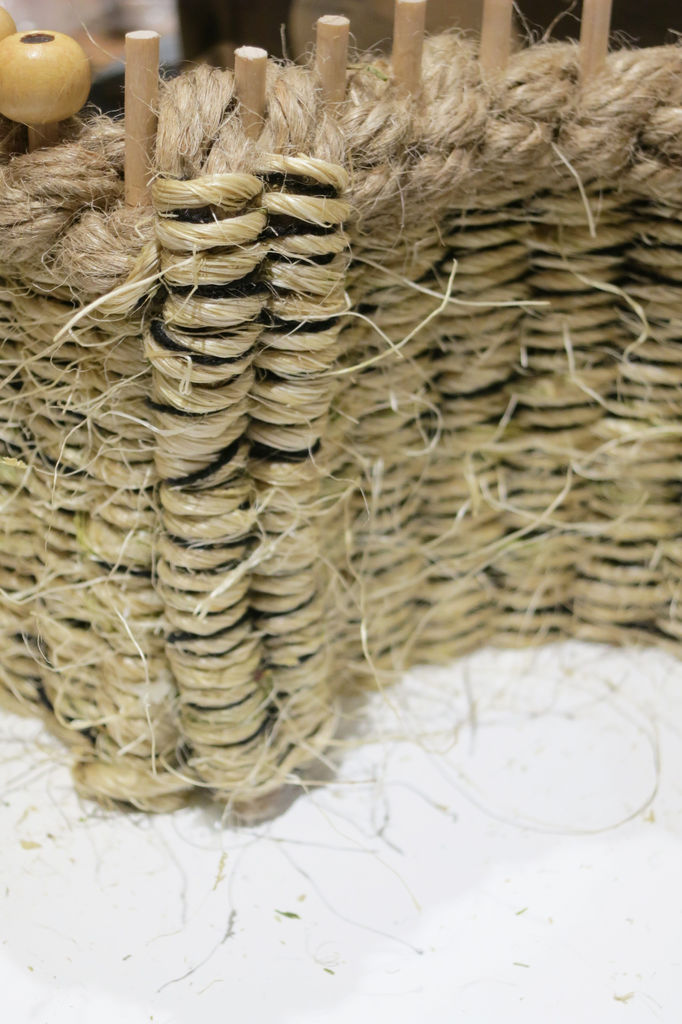
Top Dowels With Beads:
To finish off the top of the dowels, I blackened the ends with black marker then glued on some wooden beads.
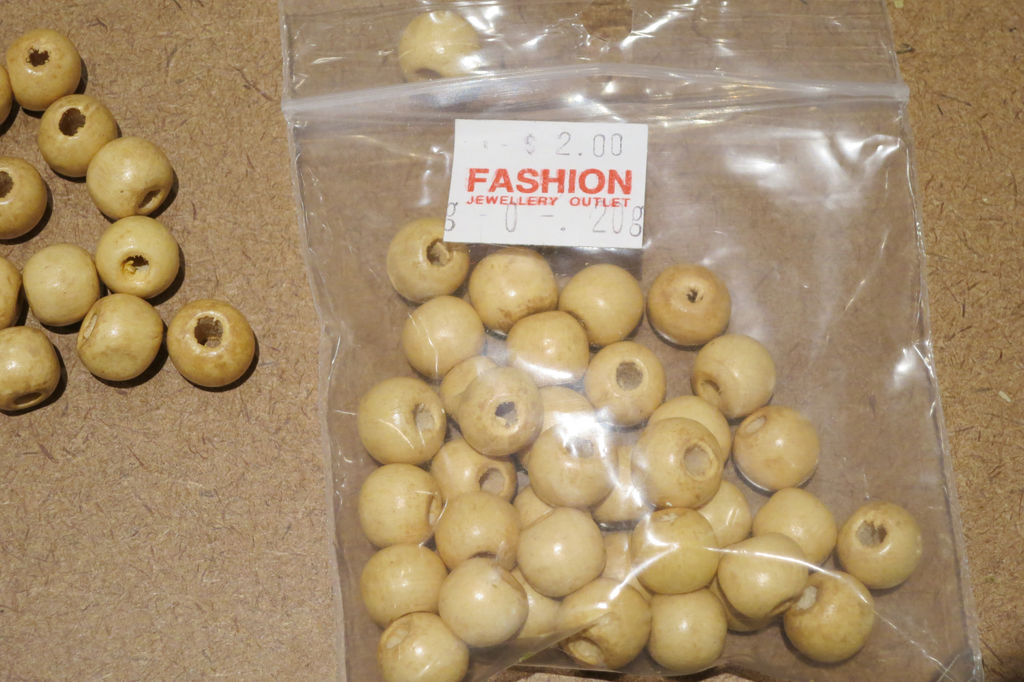 The holes in the dollar store beads tend to be very inconsistent so I used my thin needle nose pliers to ream out the holes, making sure they would fit onto each dowel before I glued them in place. If you want to be picky about it, you can use a tiny wire brush to clear any debris from the holes before gluing on the beads.
The holes in the dollar store beads tend to be very inconsistent so I used my thin needle nose pliers to ream out the holes, making sure they would fit onto each dowel before I glued them in place. If you want to be picky about it, you can use a tiny wire brush to clear any debris from the holes before gluing on the beads.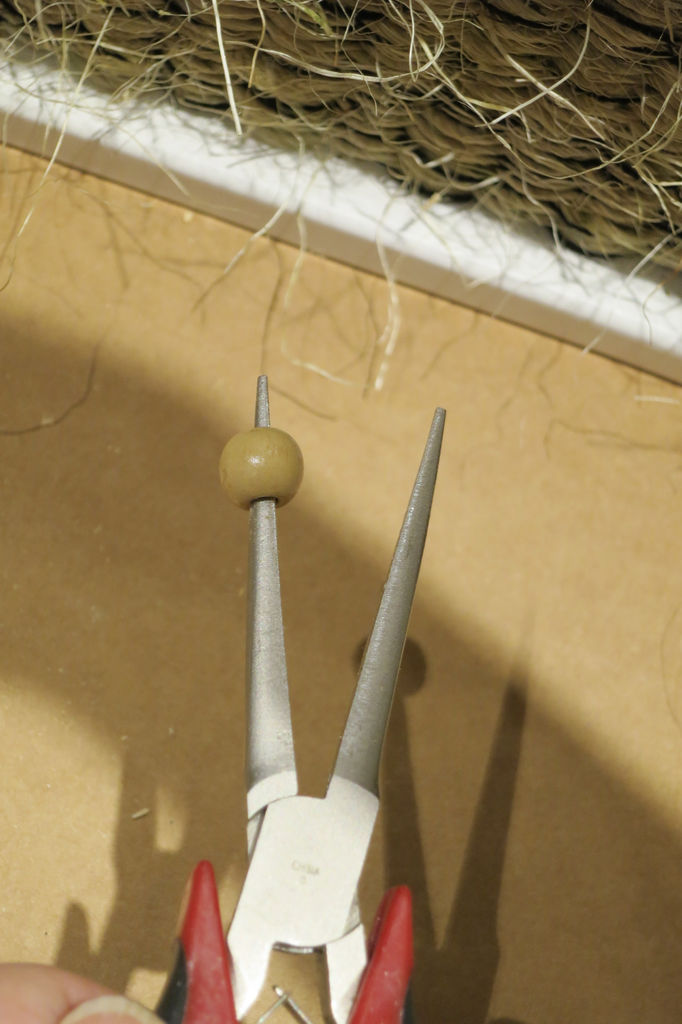 I added a dab of hot glue to the underside of a bead and then threaded it onto the dowel, continuing around until all the dowels were capped.
I added a dab of hot glue to the underside of a bead and then threaded it onto the dowel, continuing around until all the dowels were capped.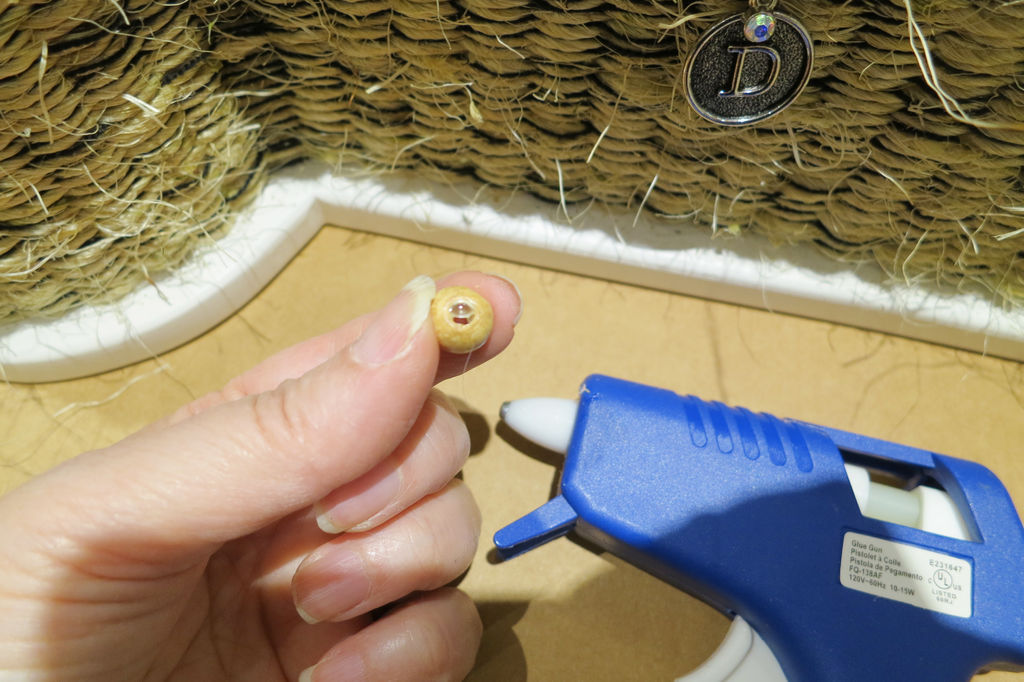
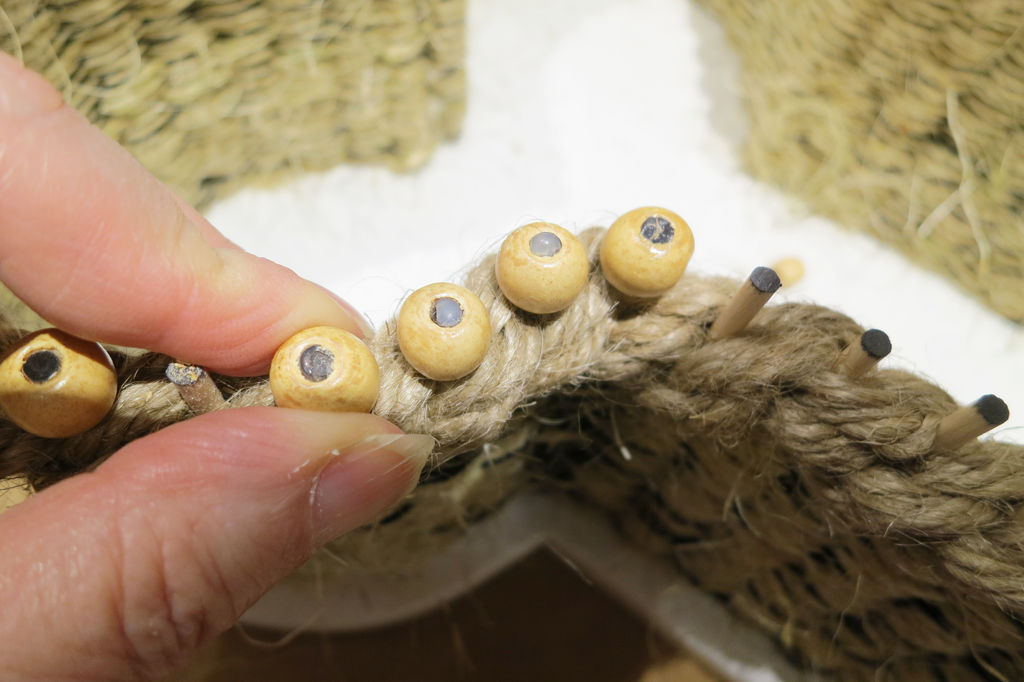
Add Grab Handles to Lift It:
In the planter basket I showed you above, I incorporated rope handles into that one so it could be lifted. Since this basket is much larger and heavier, I decided to repurpose some door pulls instead. They were originally saved from our old cabinets.
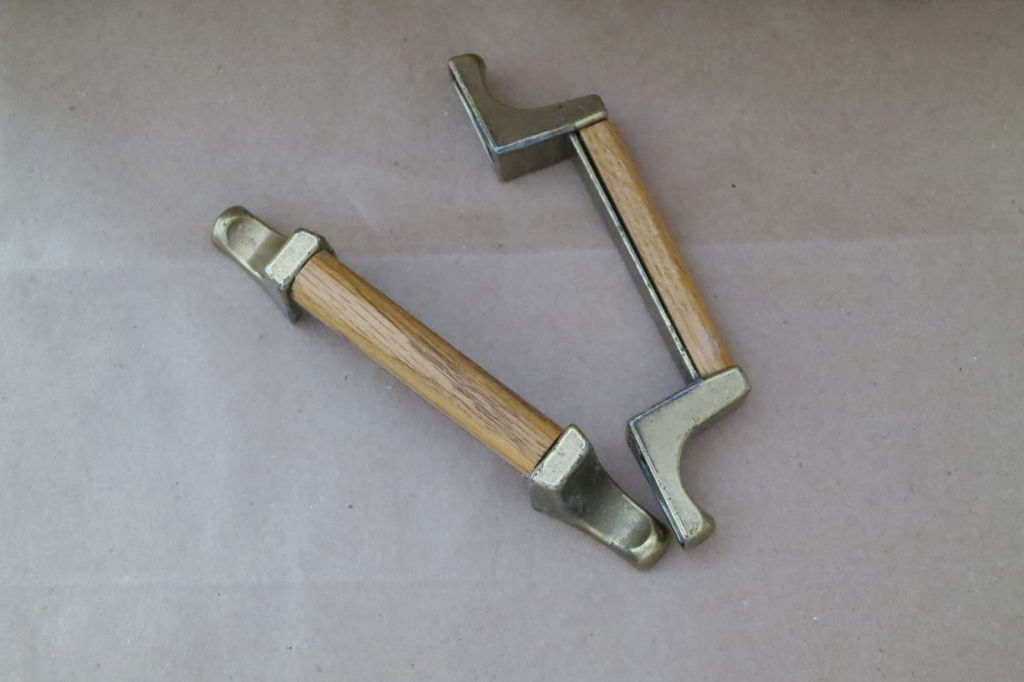
Upcycle Some Old Door Pulls:
The yellow oak with gold metal wasn’t going to work with my colour scheme, so I painted the handles to coordinate with the charm (I painted the oak black, then silver leafed and distressed the metal with more black). My husband gave them a quick spray coat of varnish in the garage, which we let dry, before I mounted them onto the basket.
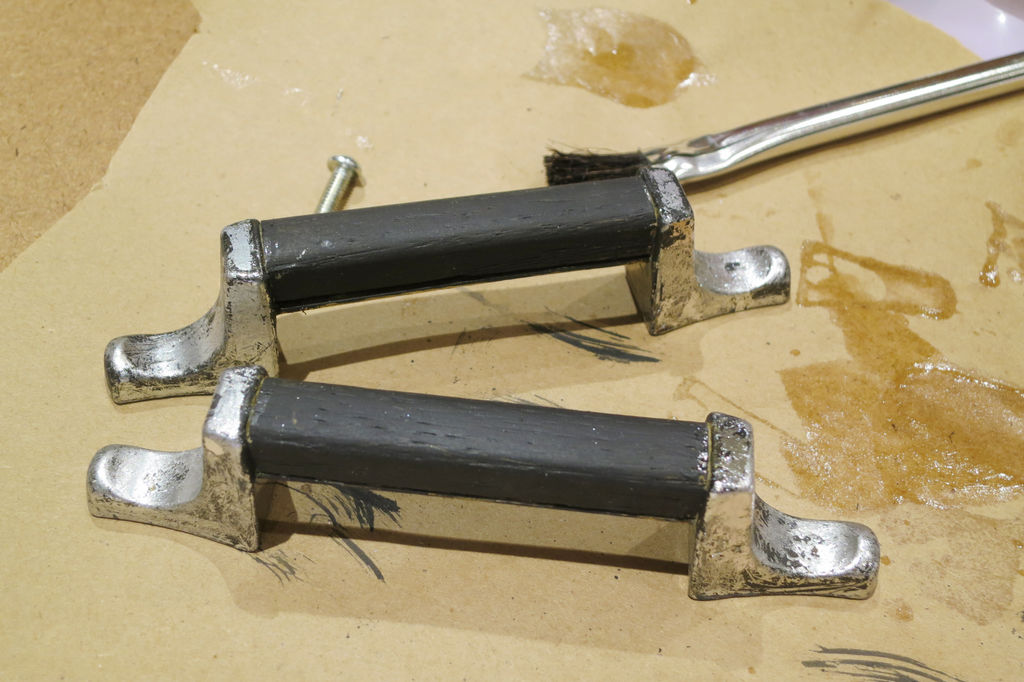
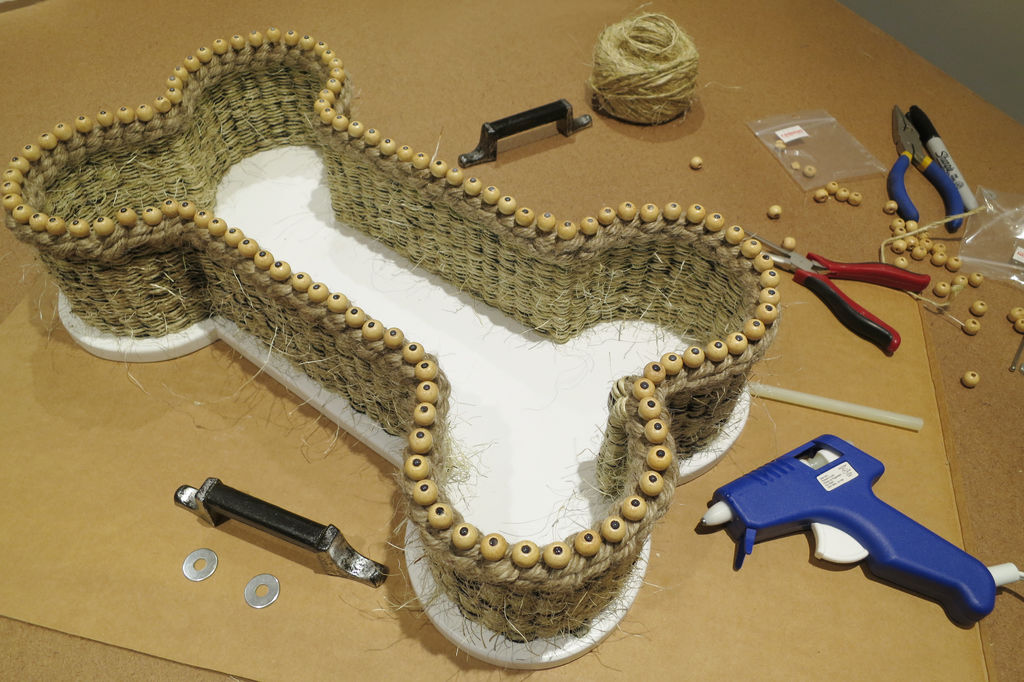
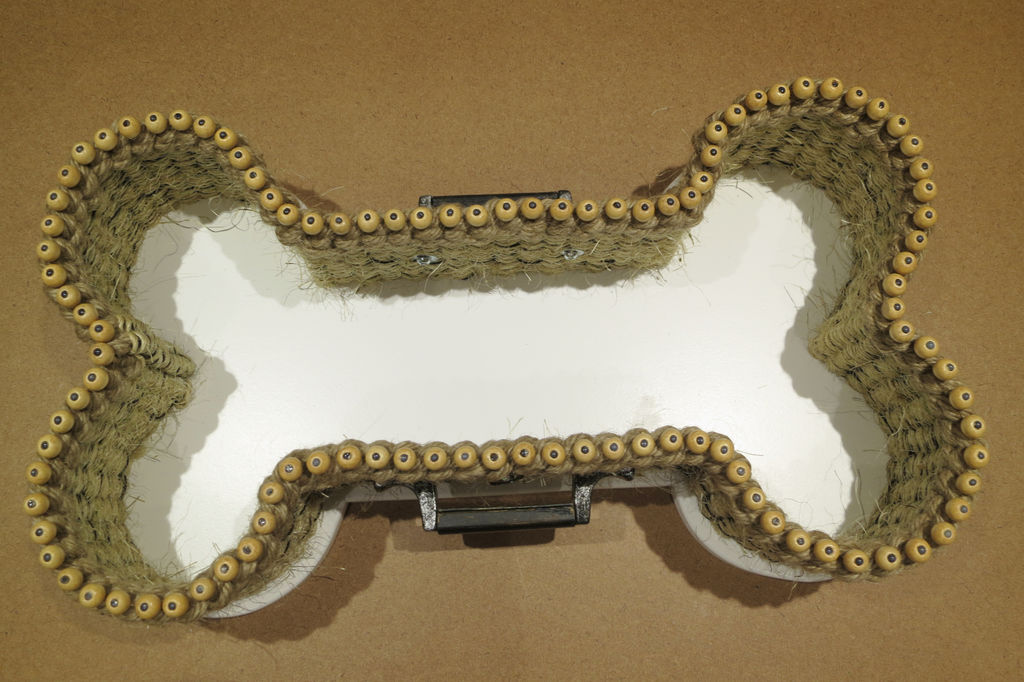
Position Handles and Attach:
Measure to get both handles evenly positioned on each side the basket, ensuring you don’t cover up the charm on the front! You can insert toothpicks where you want the screws placed. I used some washers on the inside of the basket before feeding the screws through the weave of the basket. Use the toothpicks or thin needle nosed pliers to guide the screws through the weave and position the handles on each side. You’ll need a short screwdriver to attach the screws to the handles as the width is pretty narrow in the centre.
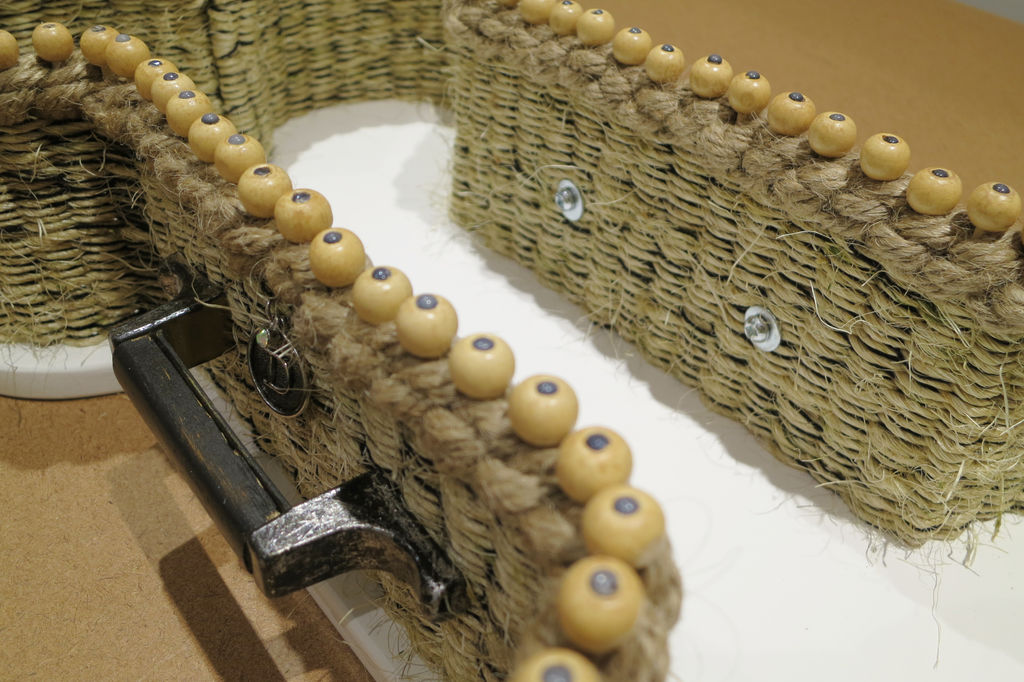
Finesse:
As a last step, shave off some of the longer sisal strands with scissors to neaten it up.
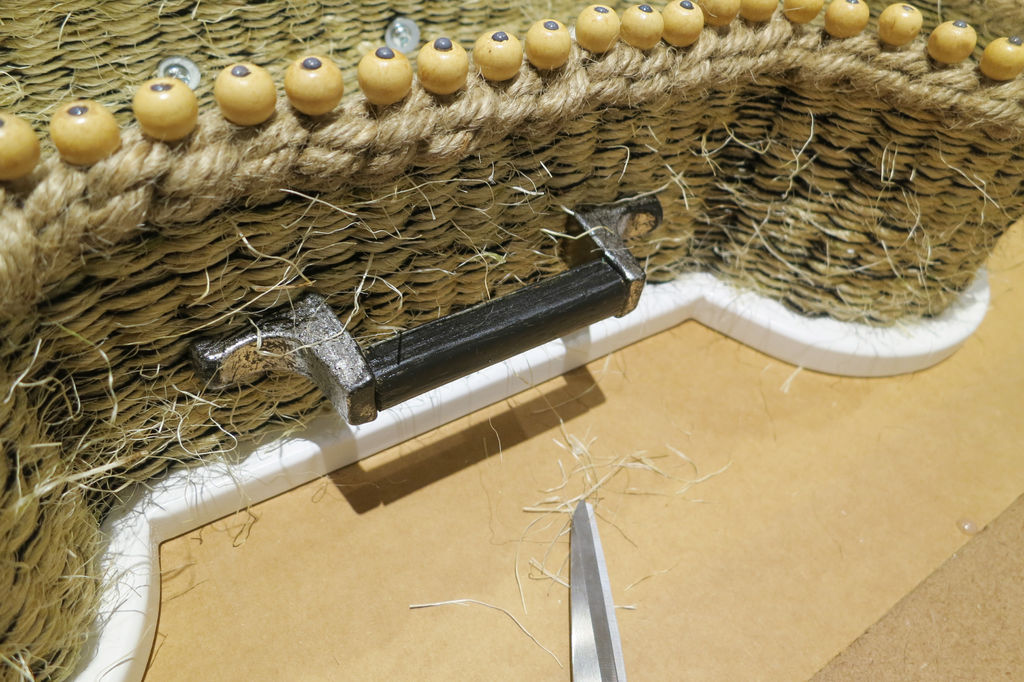
Fill With Dog Treats; Don’t Forget the Tick Collar:
The basket is now done and ready to fill with dog treats – and of course a flea and tick collar to protect the pup and keep her safe!
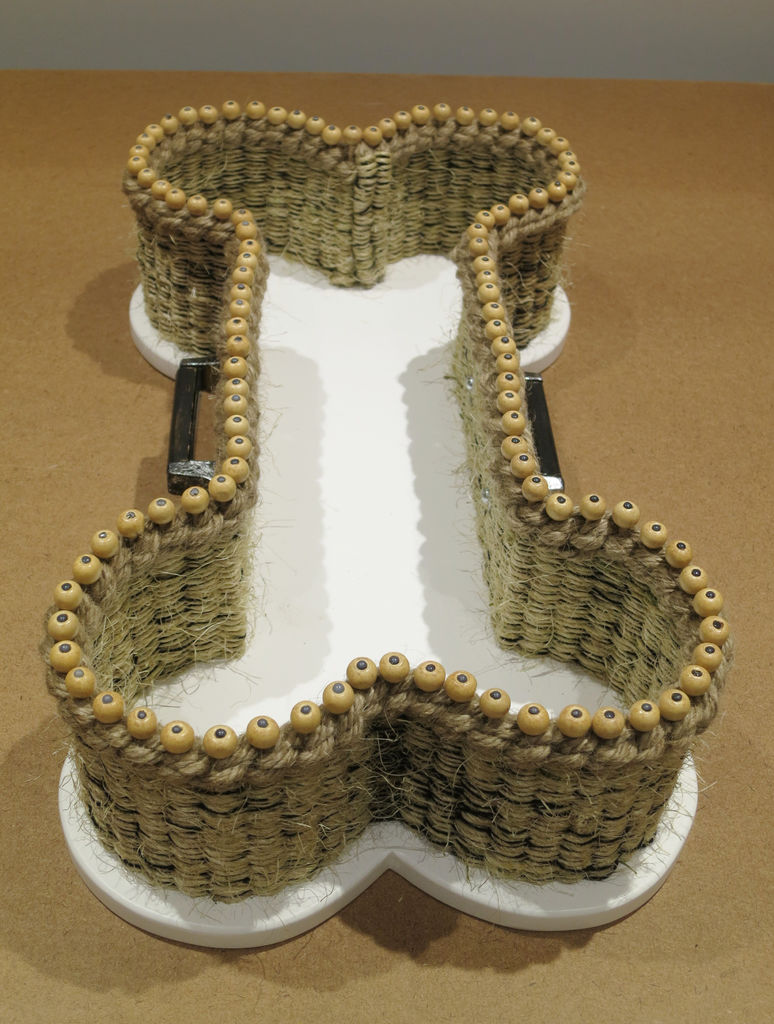
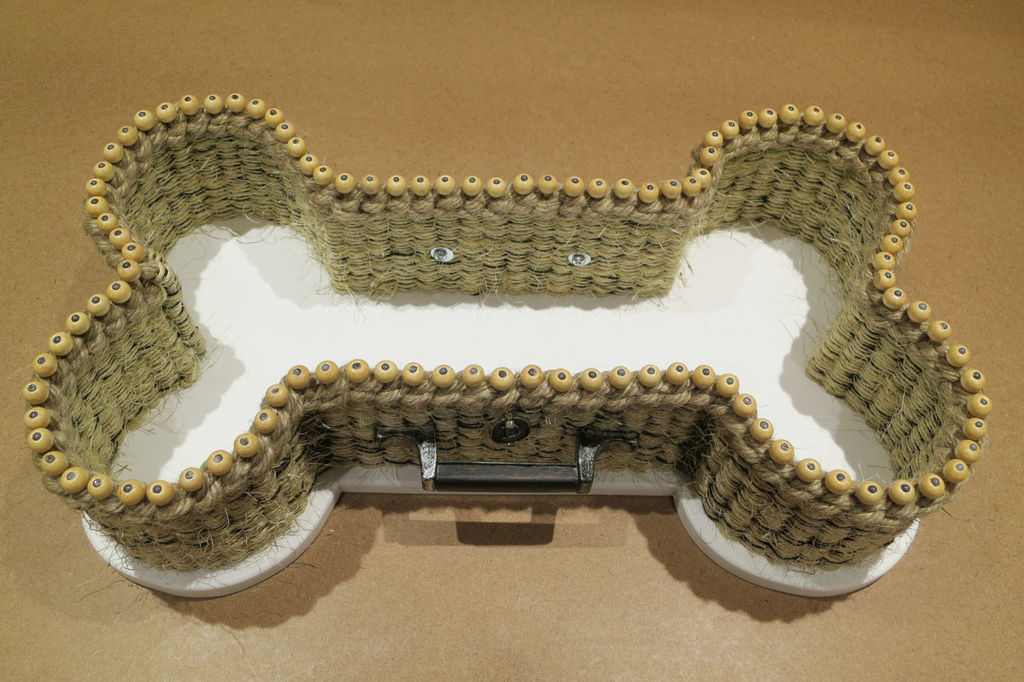
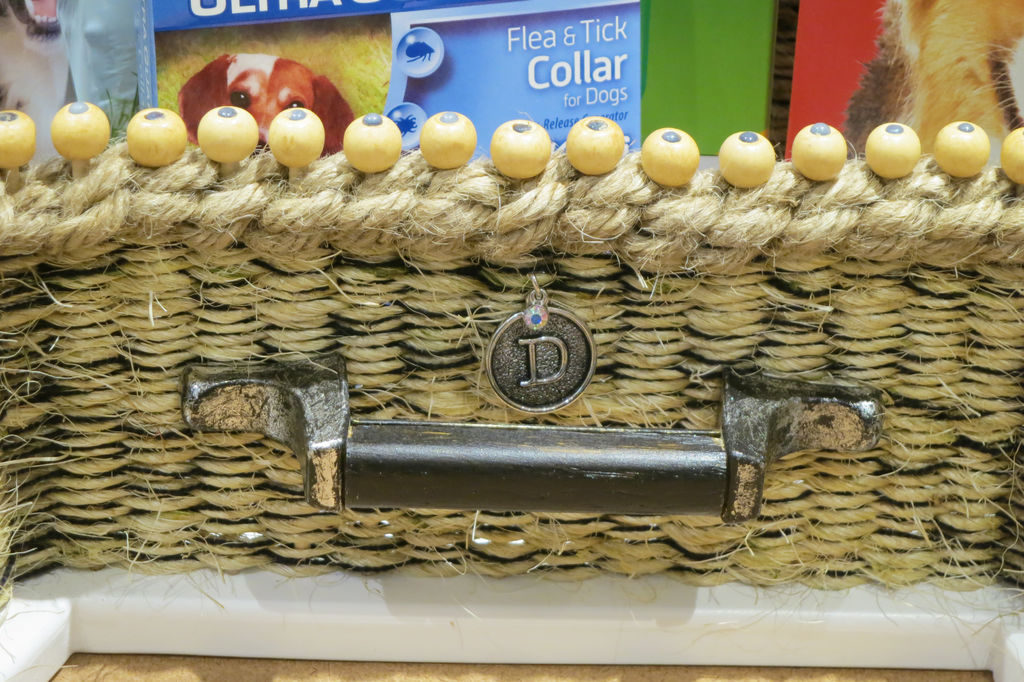
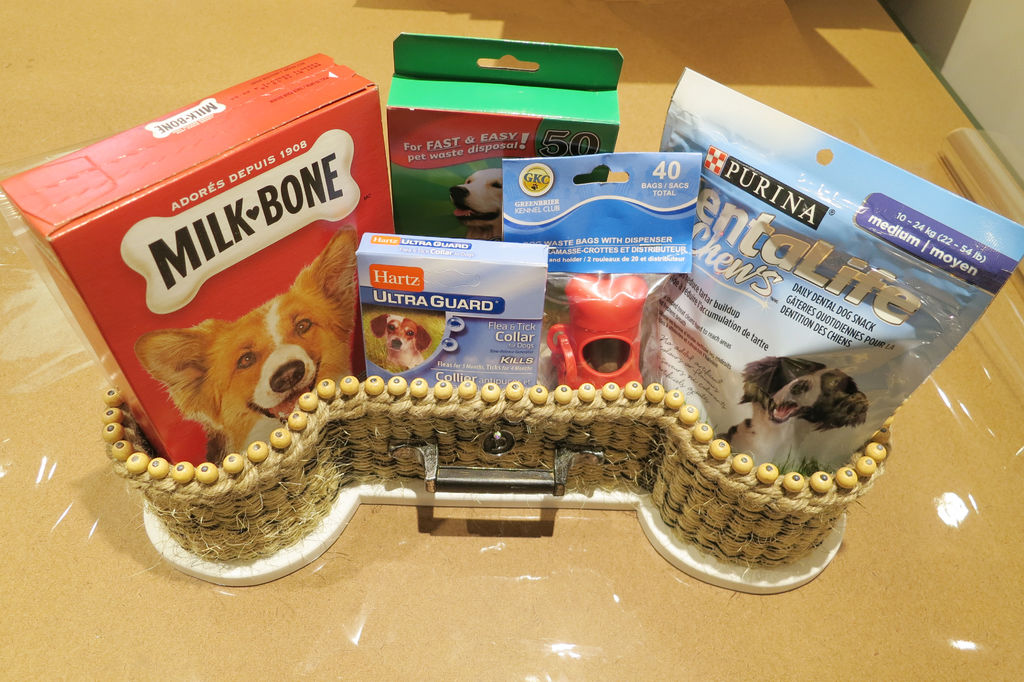
Give As a Gift or Keep for Yourself As a Dog Toy Organizer.
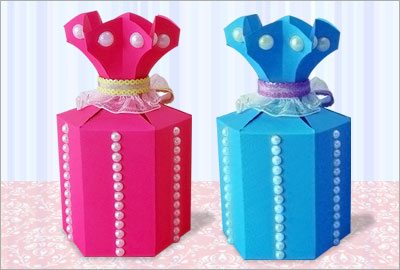
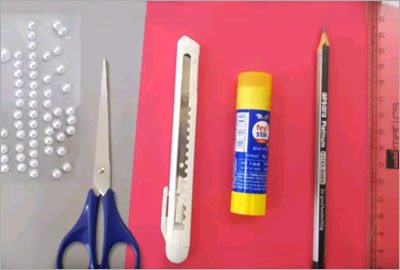
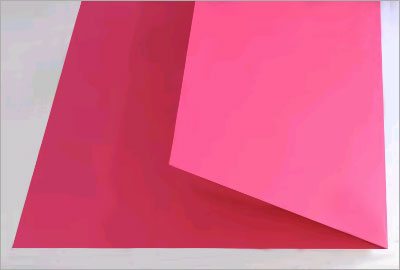
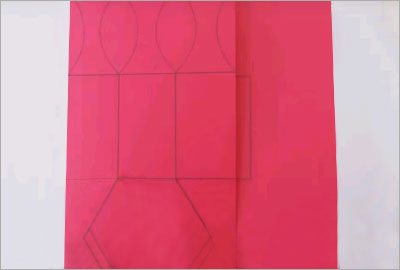
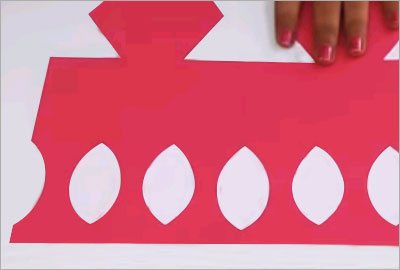
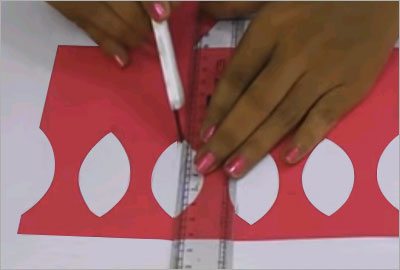
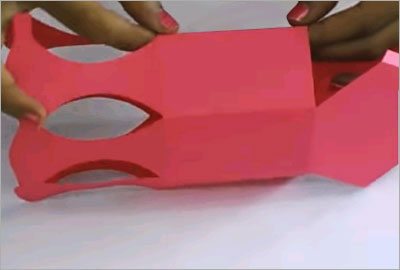
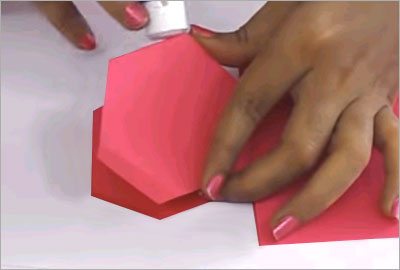
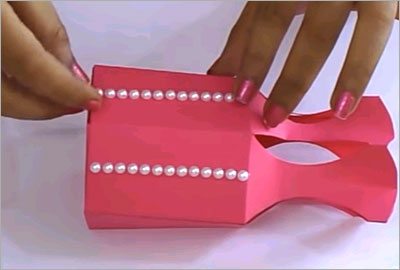
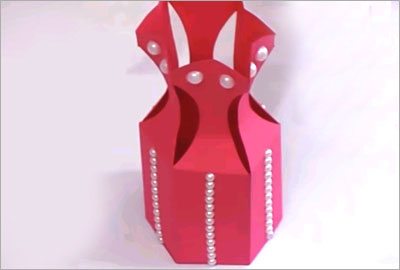

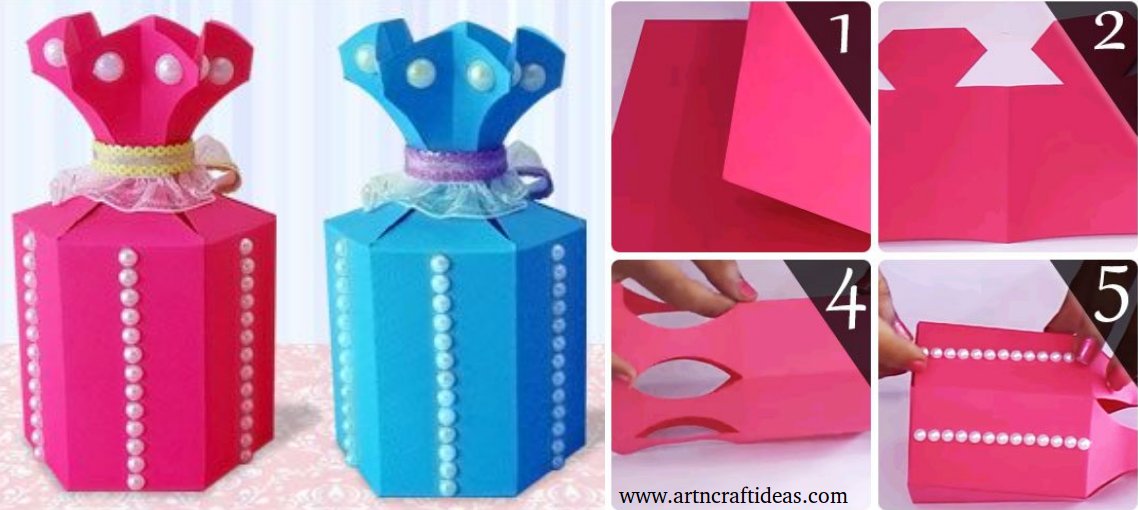
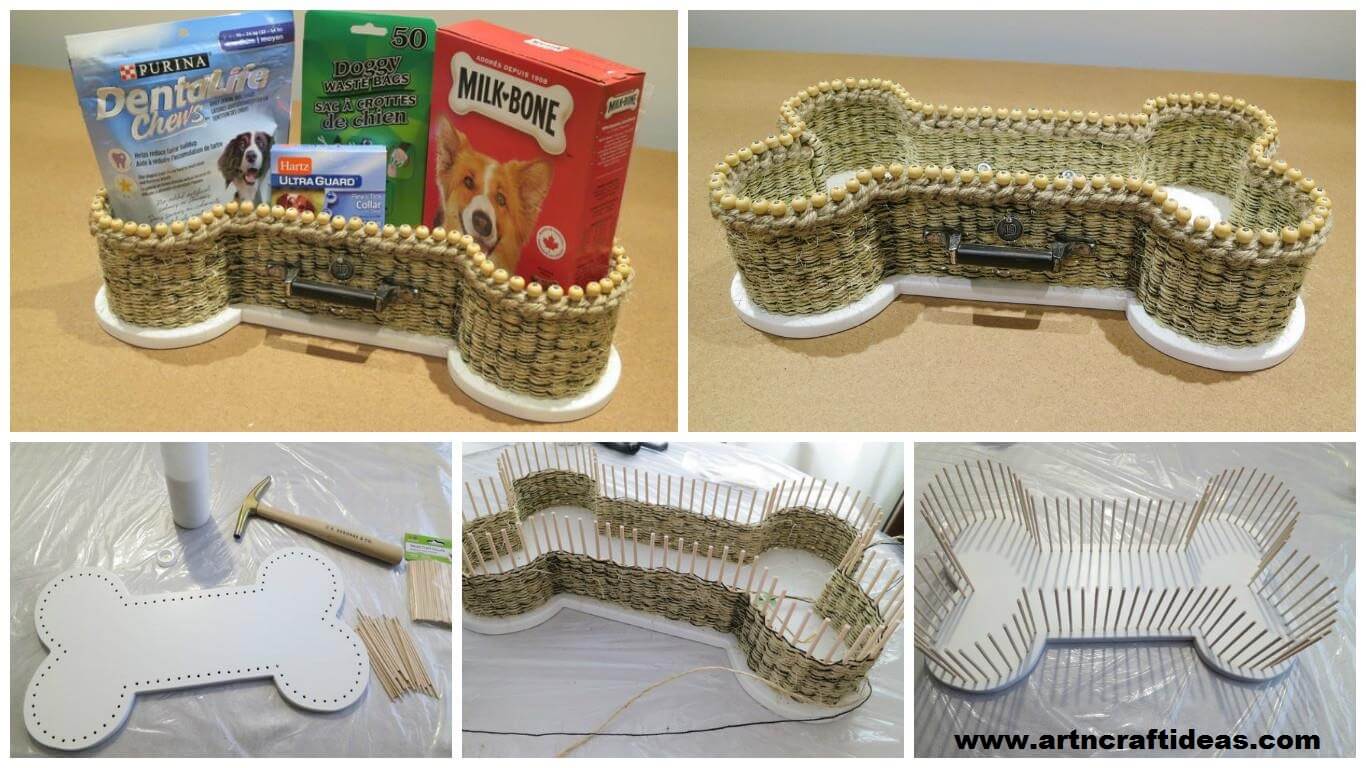





















 The holes in the dollar store beads tend to be very inconsistent so I used my thin needle nose pliers to ream out the holes, making sure they would fit onto each dowel before I glued them in place. If you want to be picky about it, you can use a tiny wire brush to clear any debris from the holes before gluing on the beads.
The holes in the dollar store beads tend to be very inconsistent so I used my thin needle nose pliers to ream out the holes, making sure they would fit onto each dowel before I glued them in place. If you want to be picky about it, you can use a tiny wire brush to clear any debris from the holes before gluing on the beads. I added a dab of hot glue to the underside of a bead and then threaded it onto the dowel, continuing around until all the dowels were capped.
I added a dab of hot glue to the underside of a bead and then threaded it onto the dowel, continuing around until all the dowels were capped.











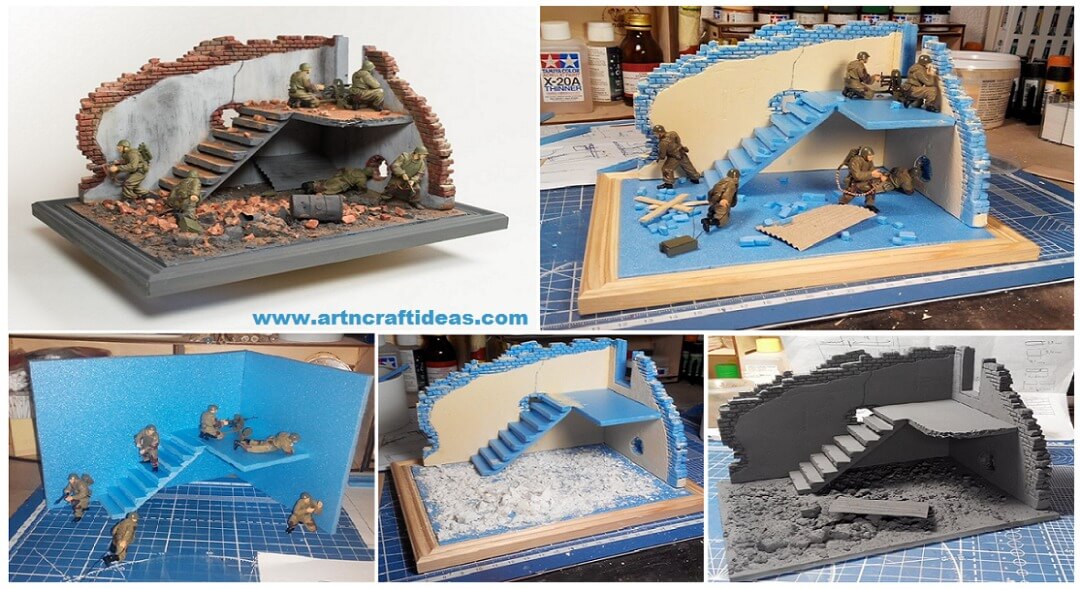
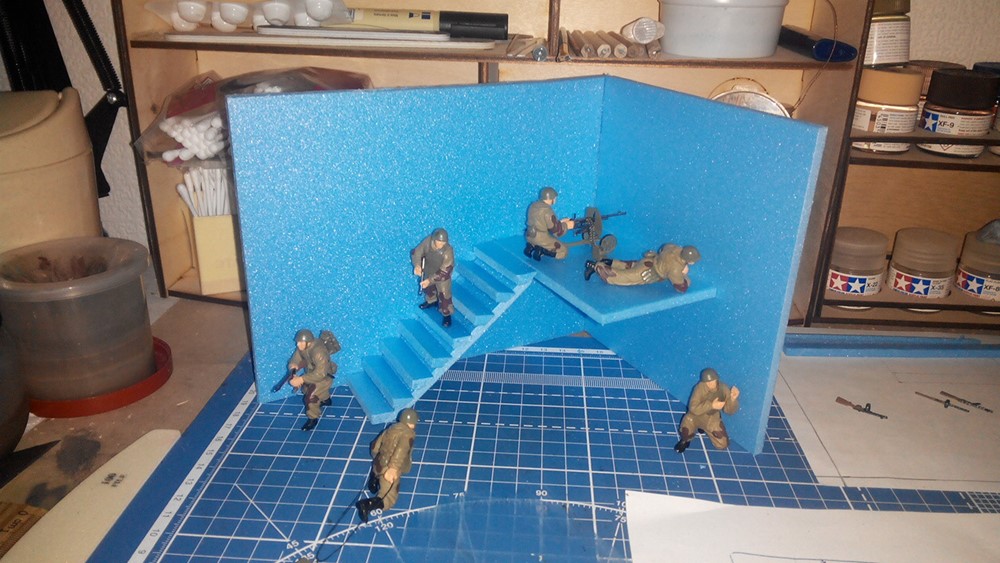 There already are lined walls, the plaster is applied and scattered debris.
There already are lined walls, the plaster is applied and scattered debris.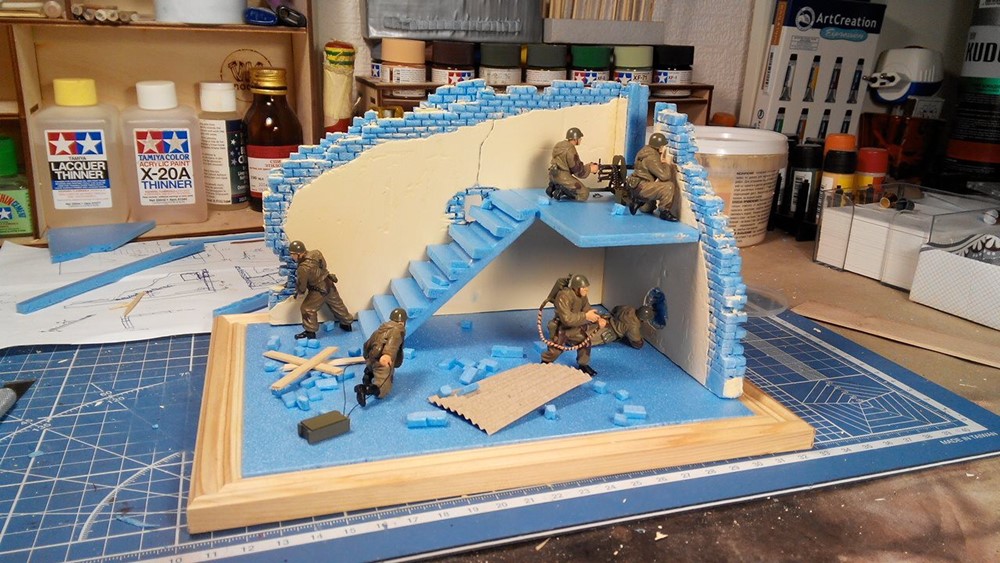 To «land» was not as flat, crumbled plaster. And secure it with the white glue (liquid PVA).
To «land» was not as flat, crumbled plaster. And secure it with the white glue (liquid PVA).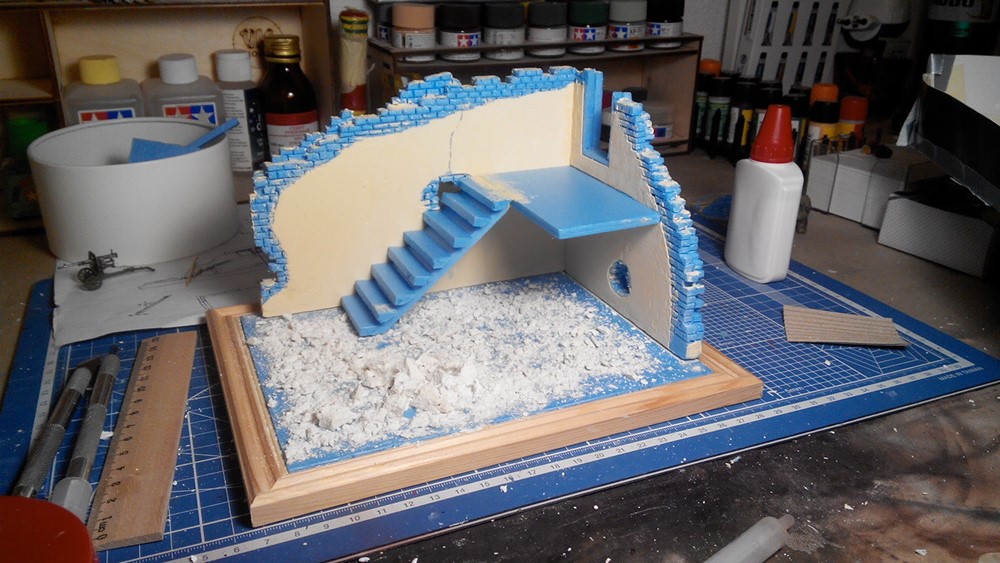 For the base color used Tamiya paints. It also plays the role of a primer.
For the base color used Tamiya paints. It also plays the role of a primer.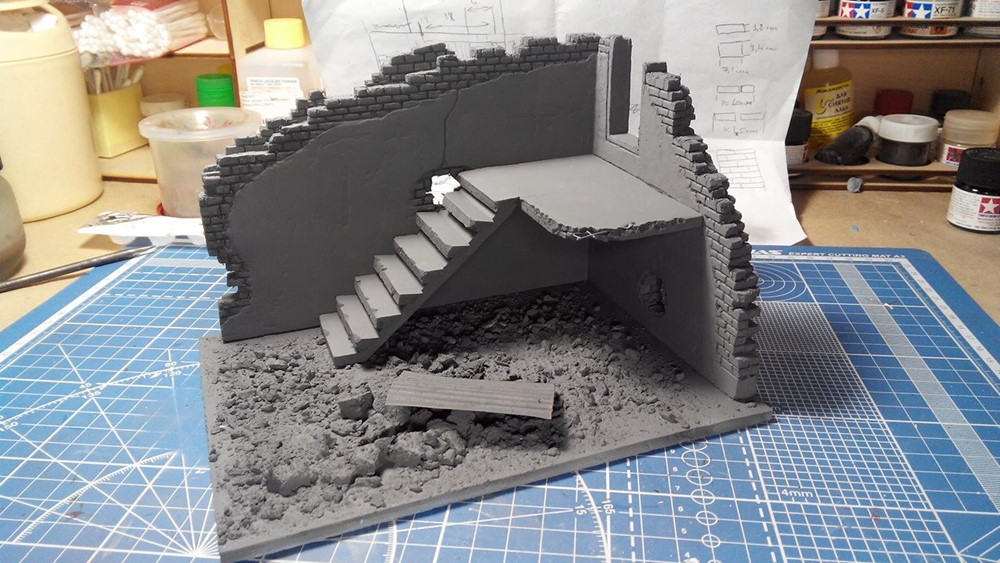 The walls are already painted in their colors, but without the effects. Self-made barrel appears in the frame)))
The walls are already painted in their colors, but without the effects. Self-made barrel appears in the frame)))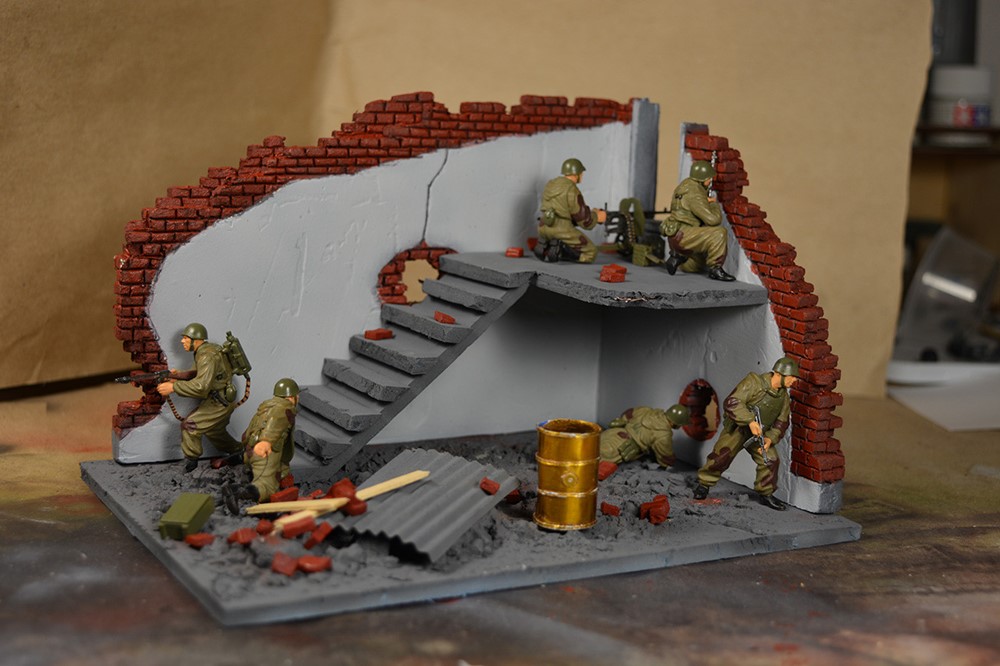
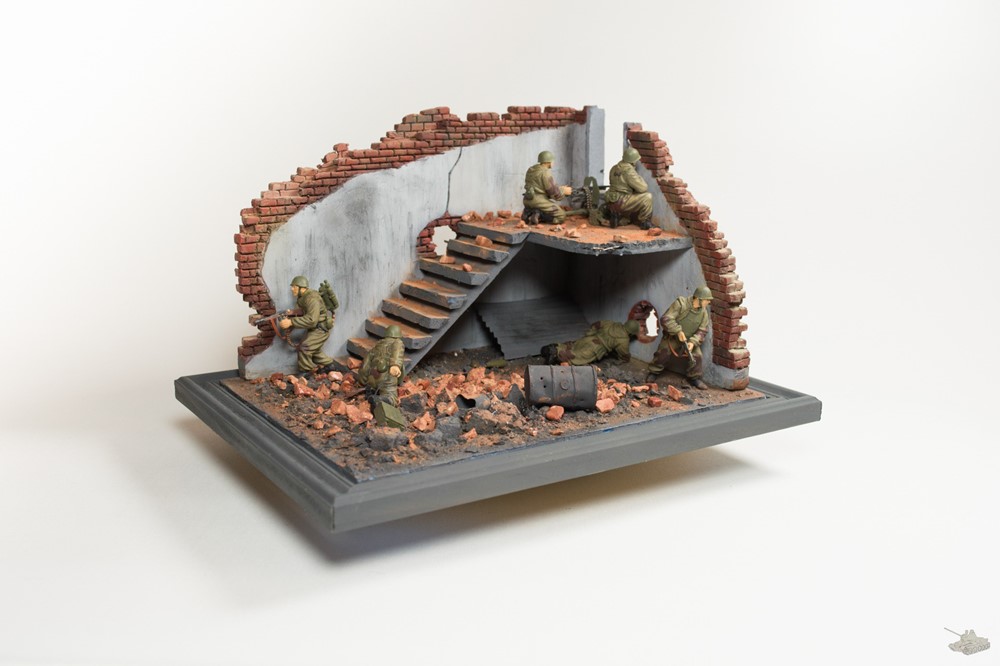
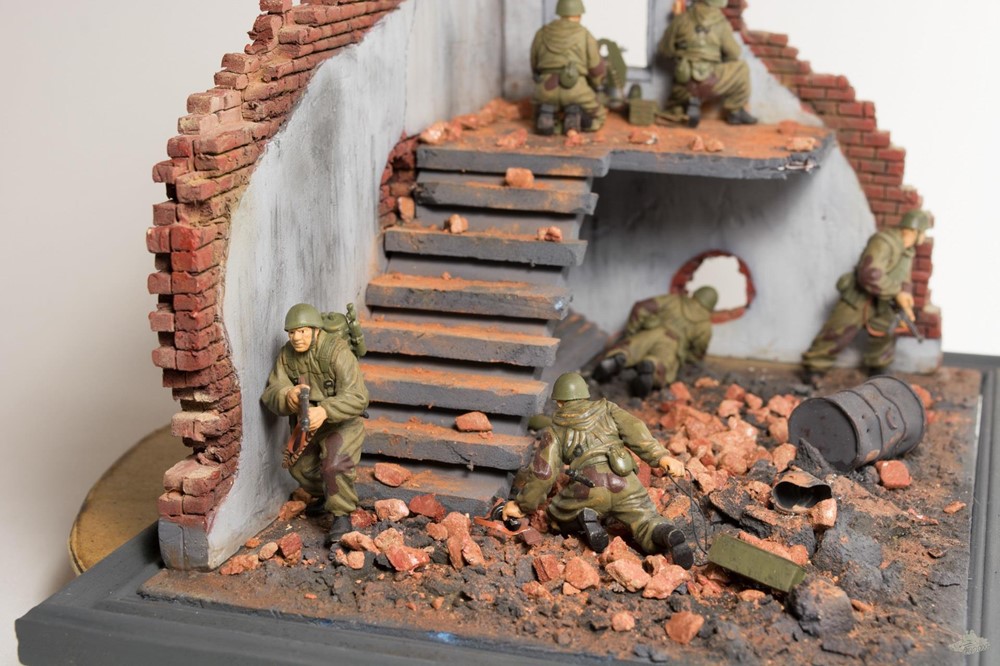
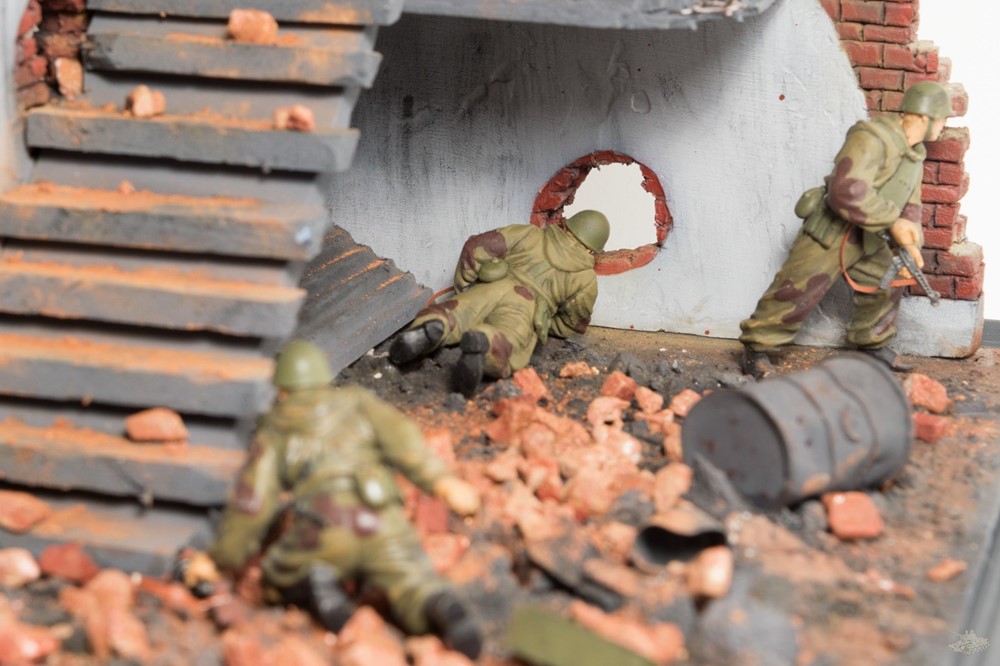
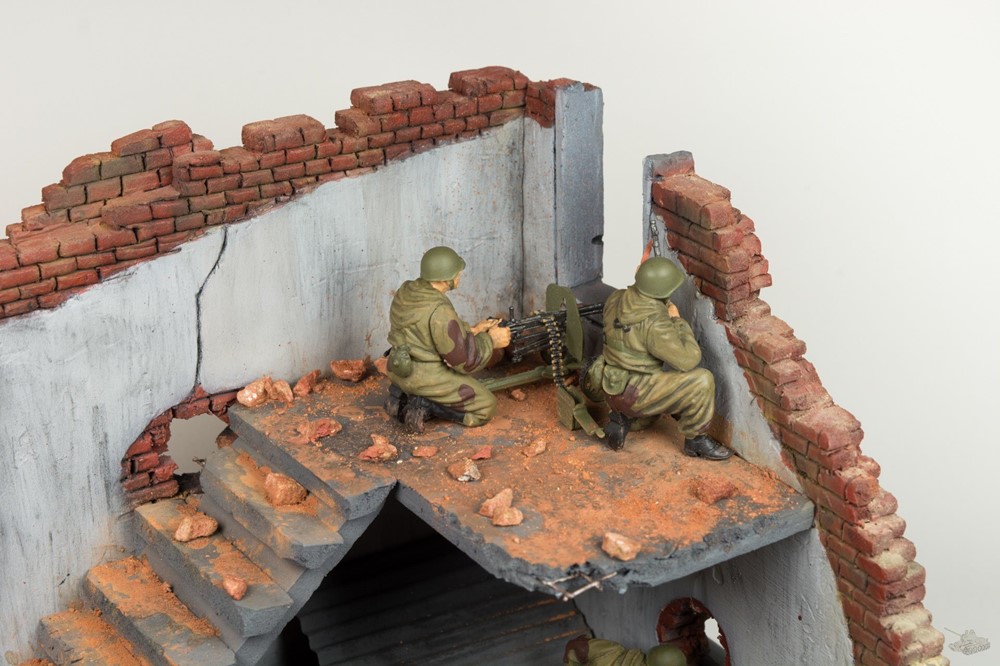
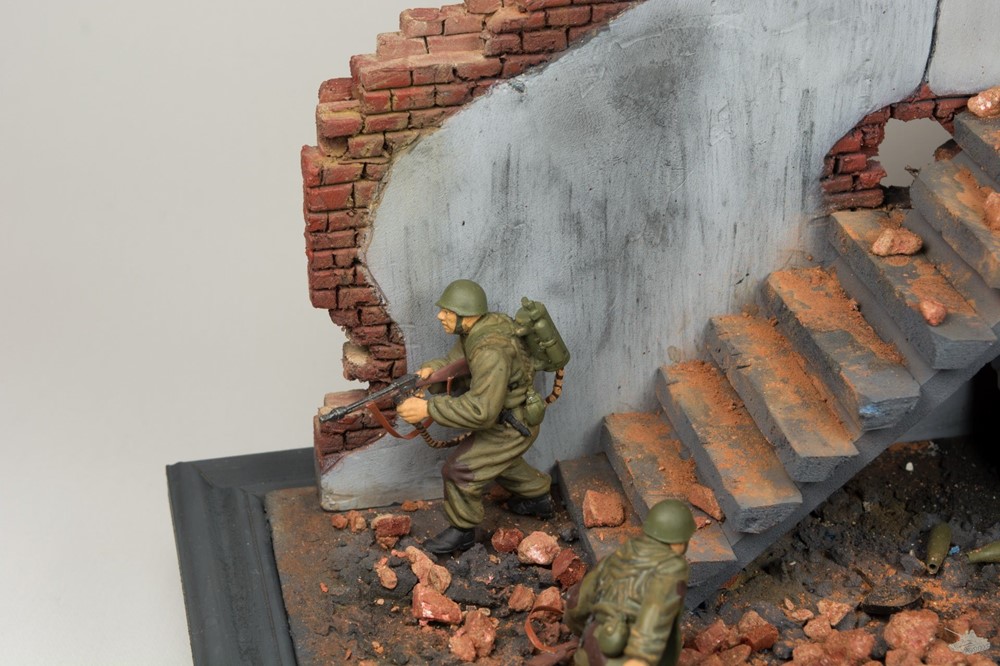
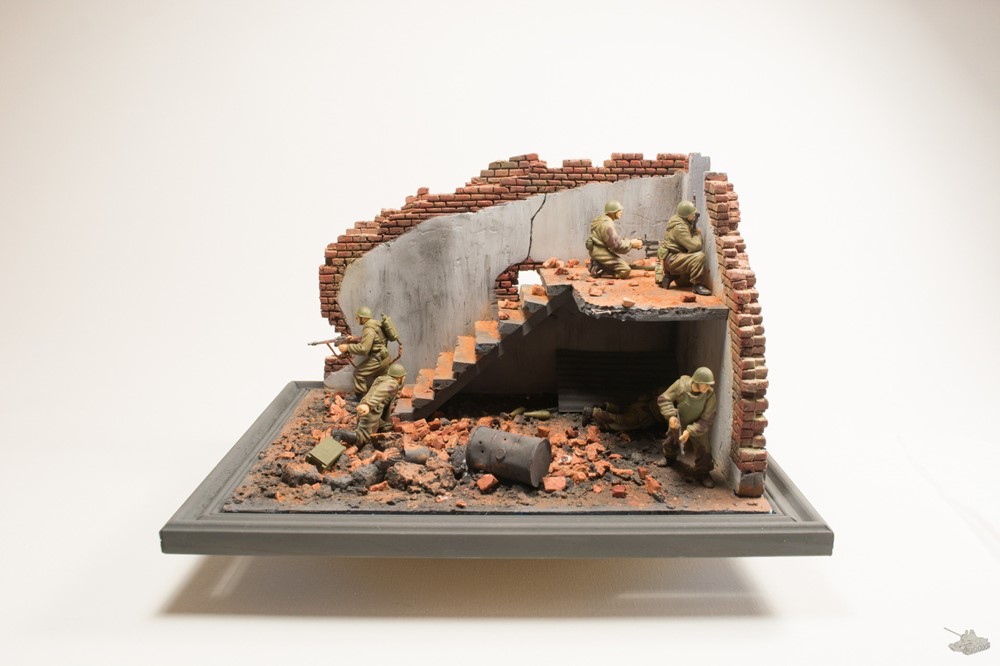
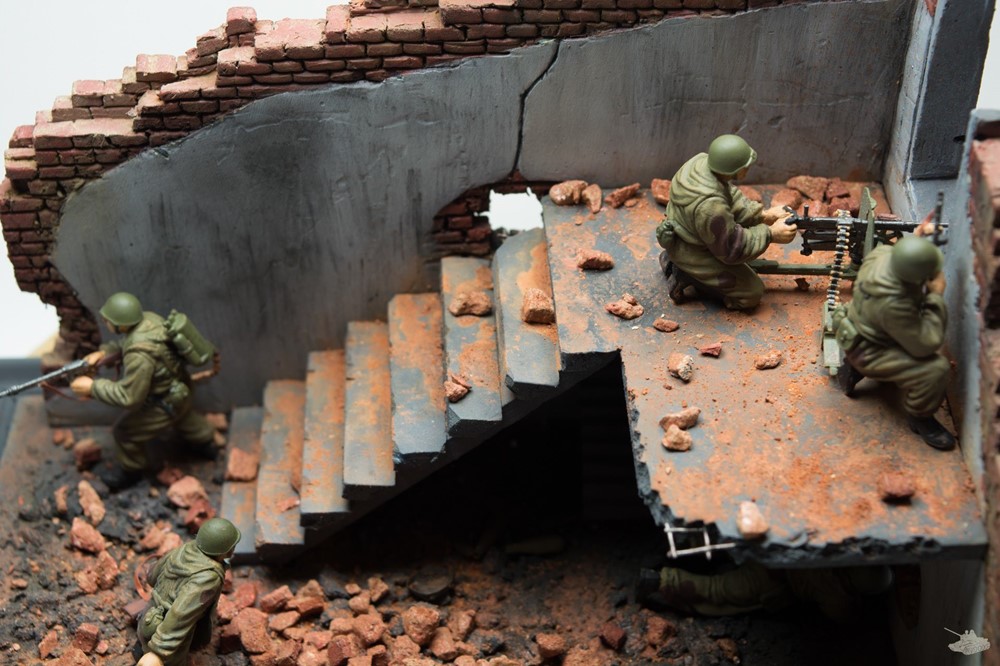
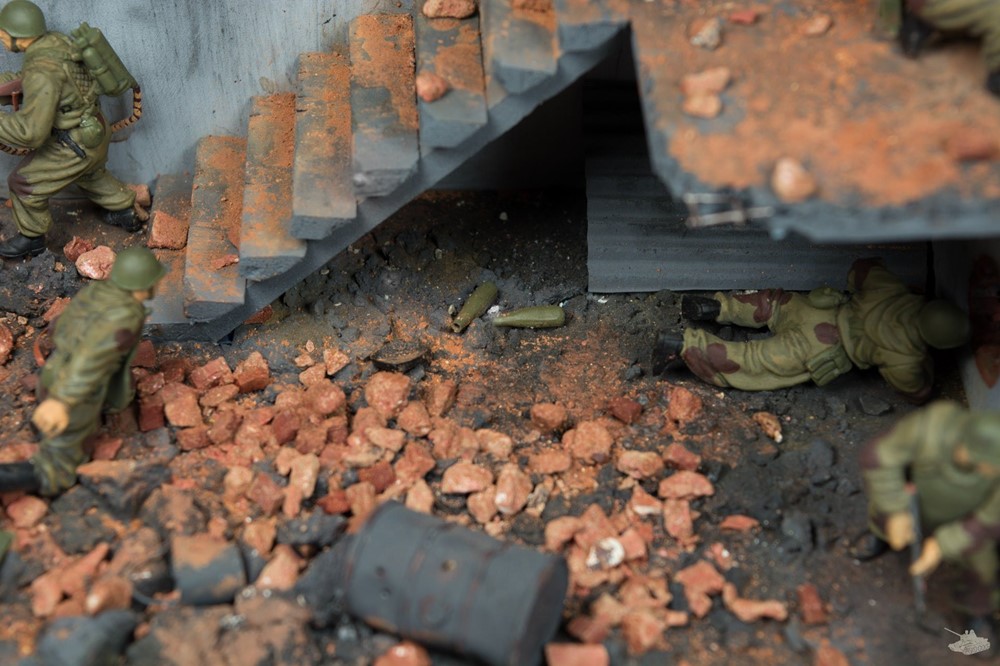
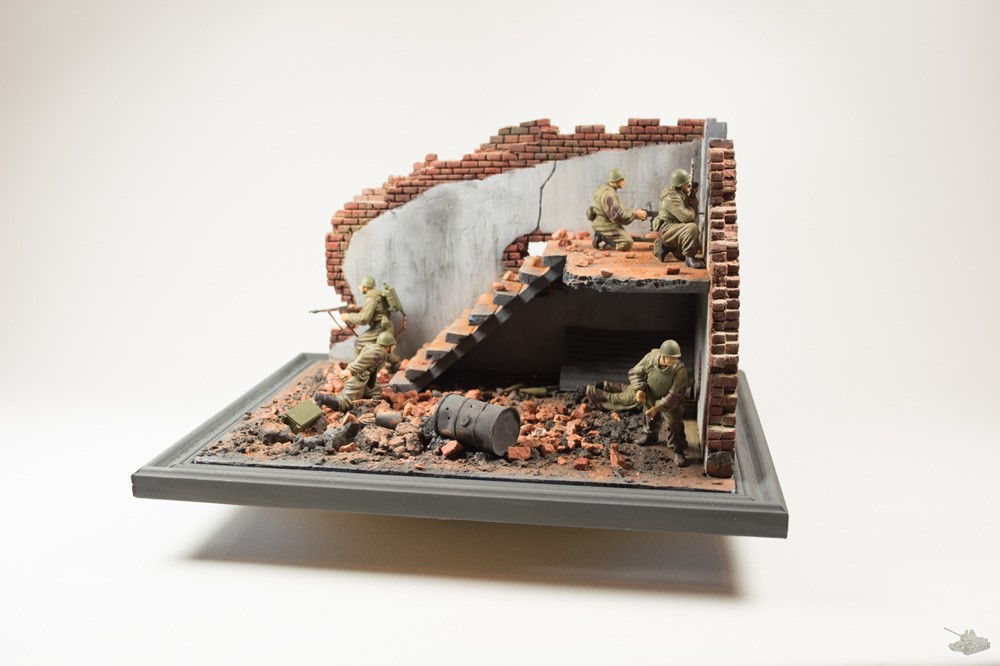
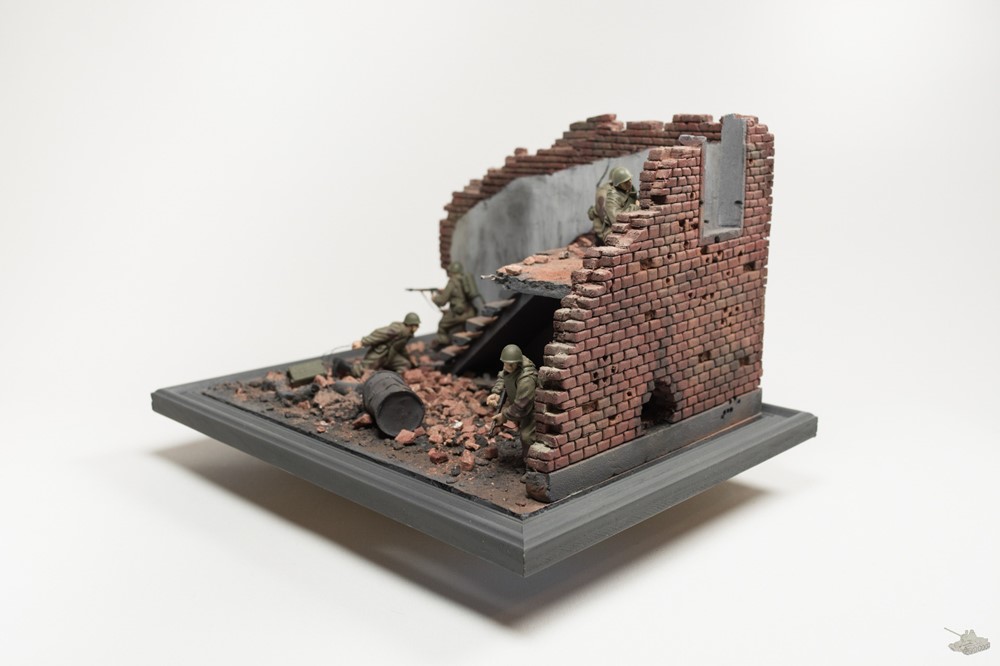
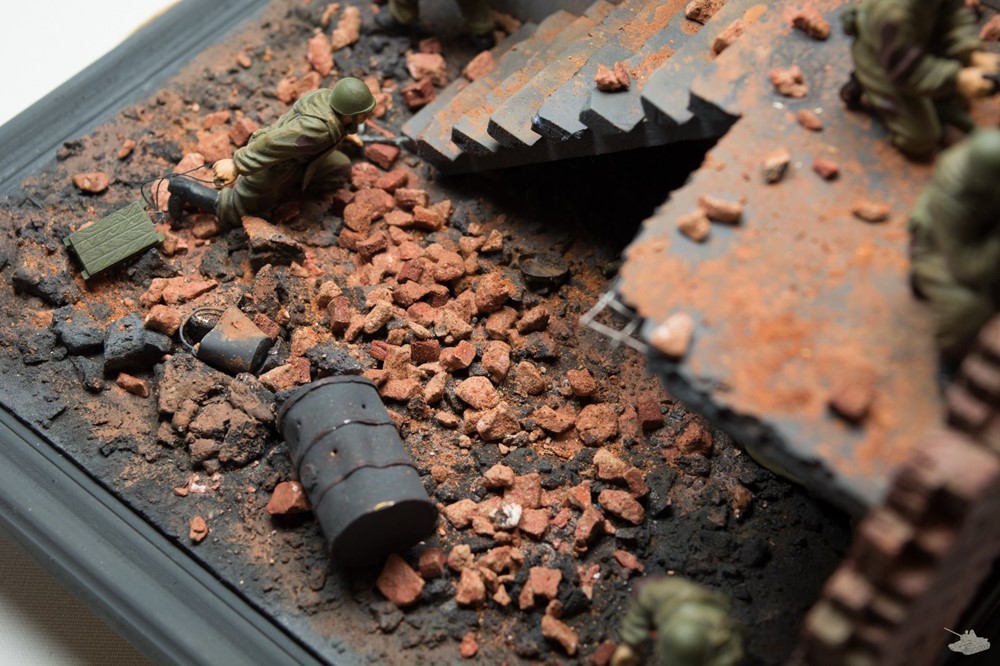
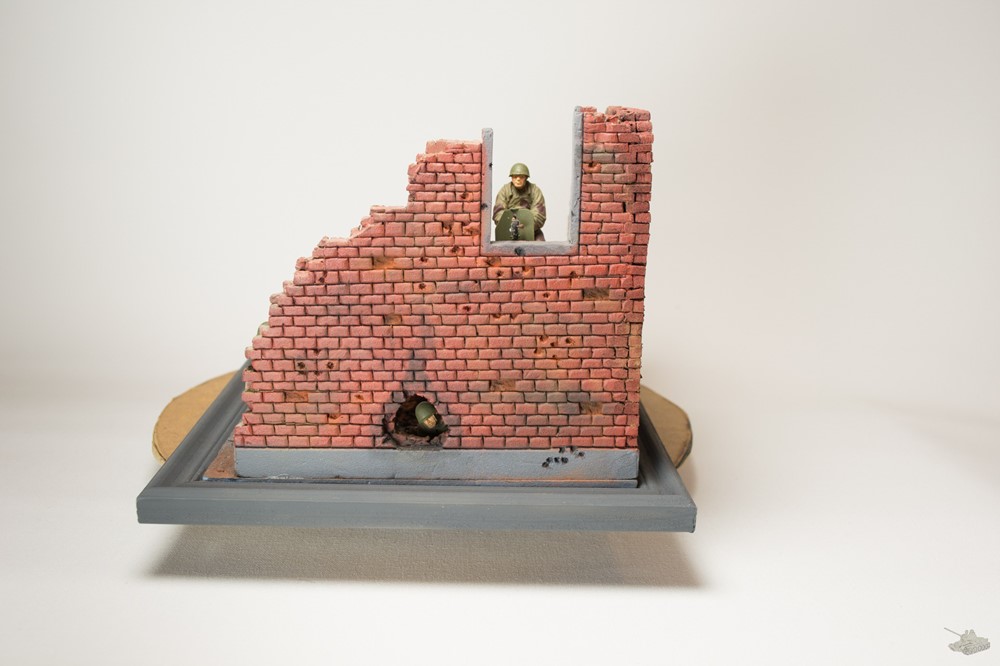
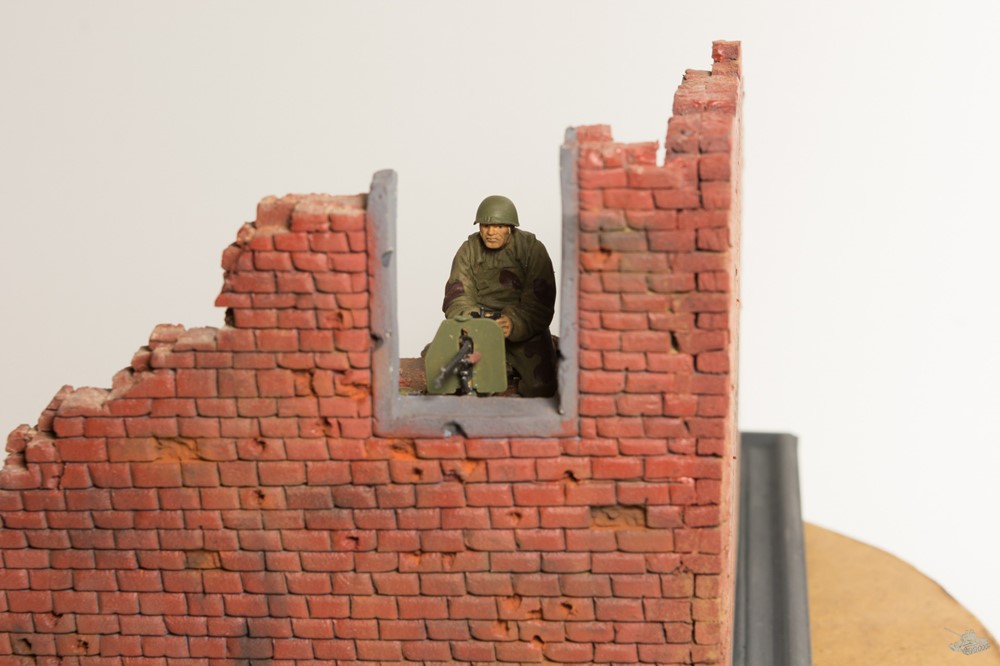
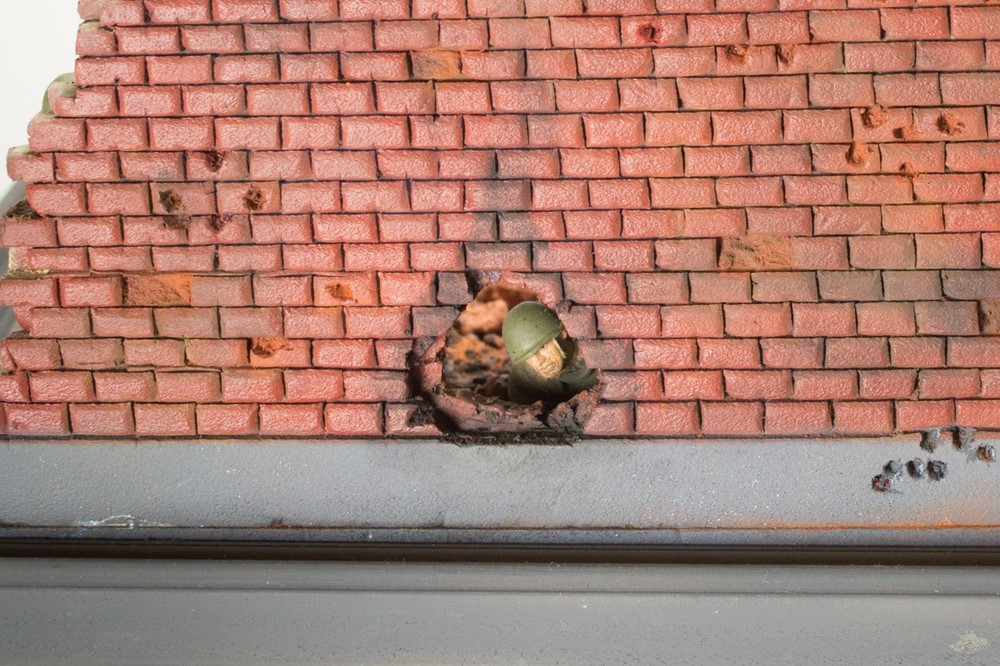
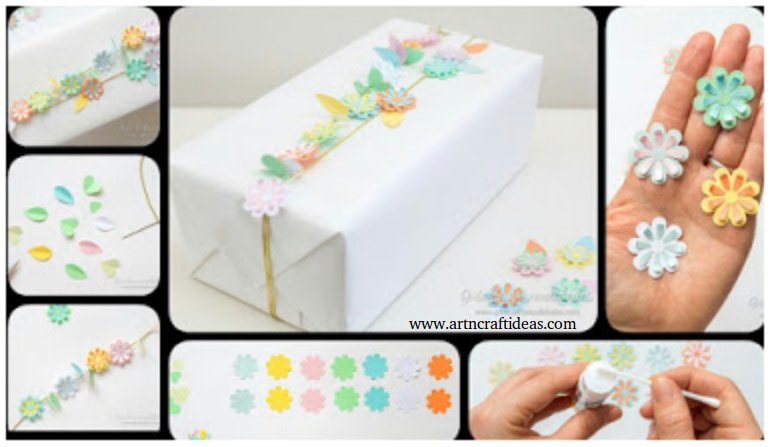
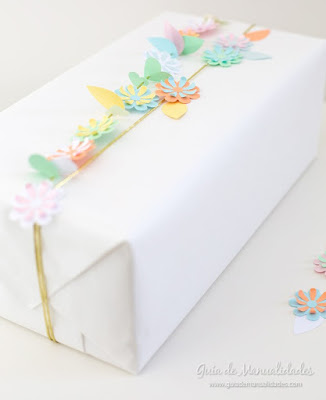
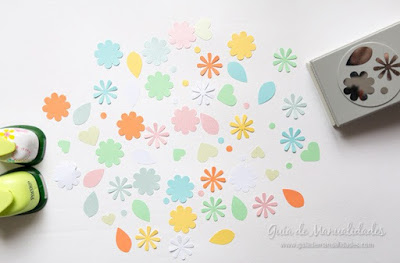
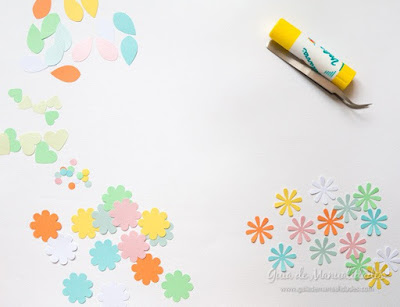
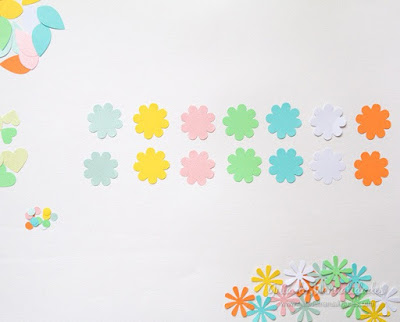
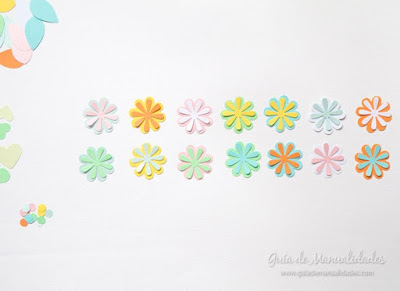
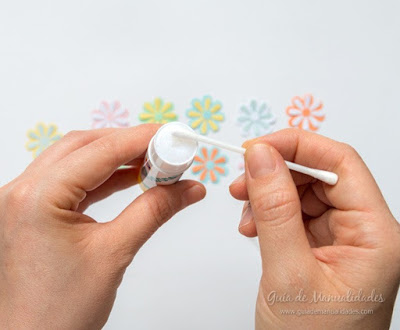
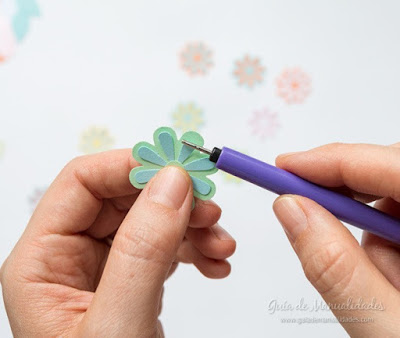
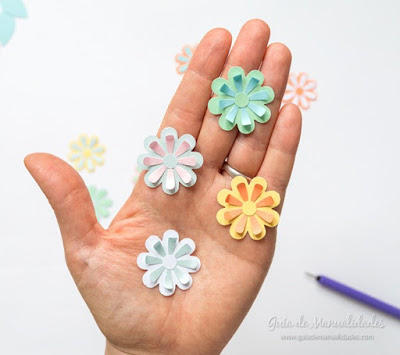
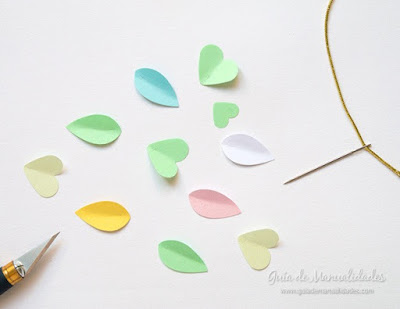
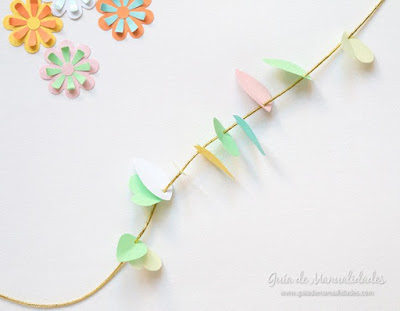
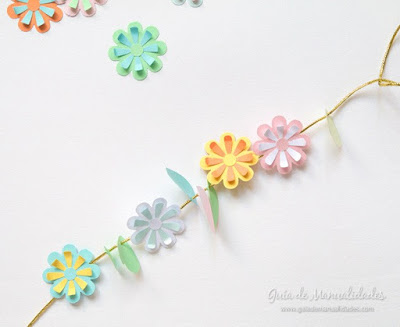
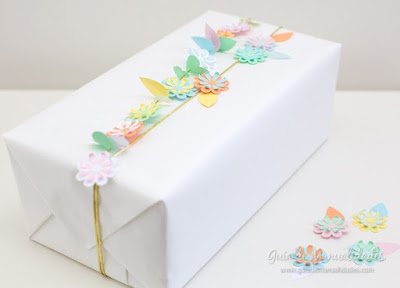
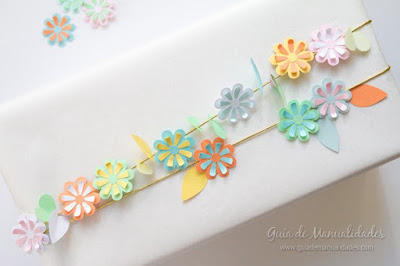
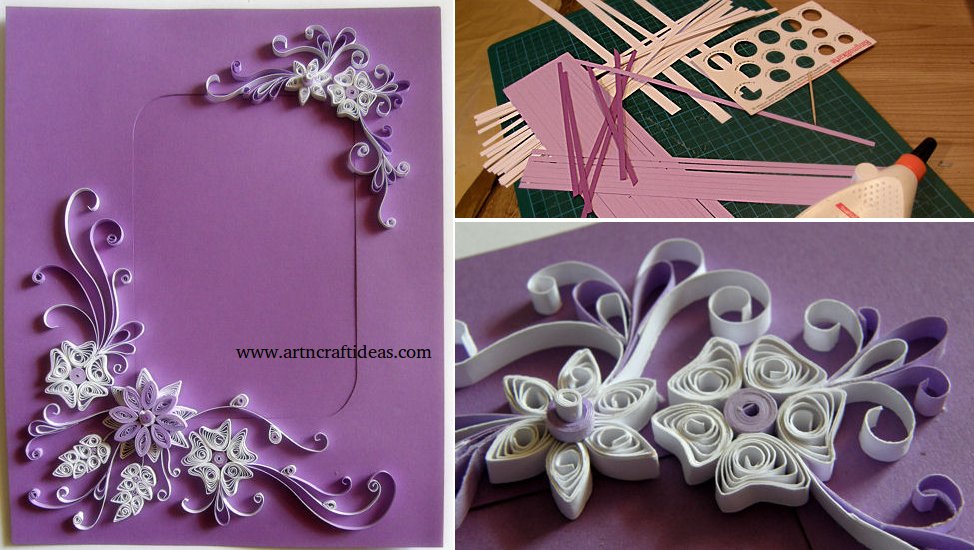
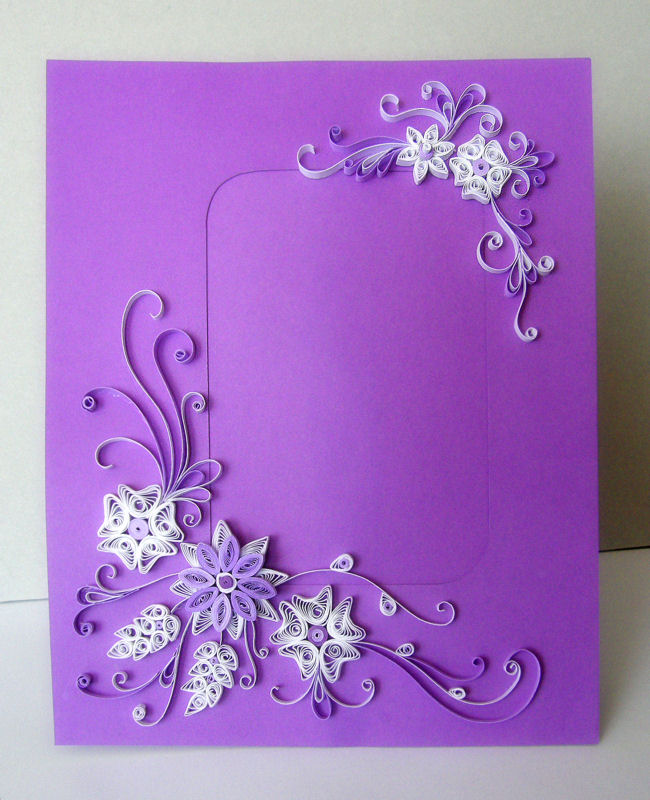
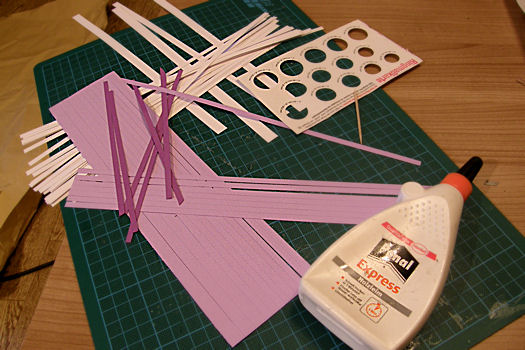
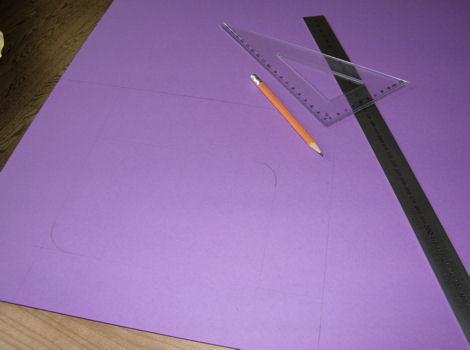
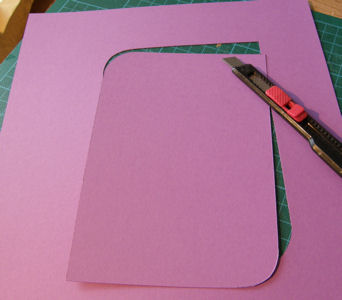
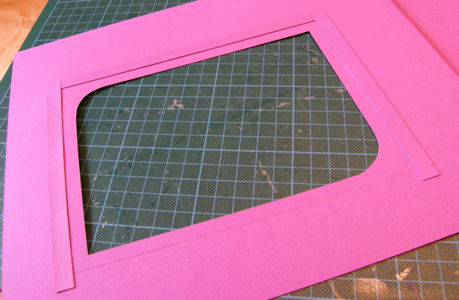
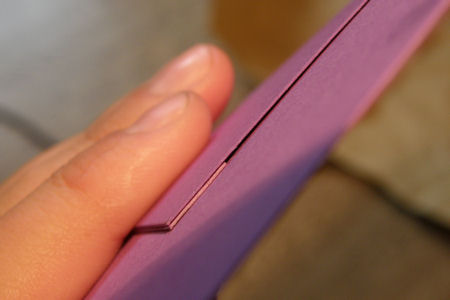
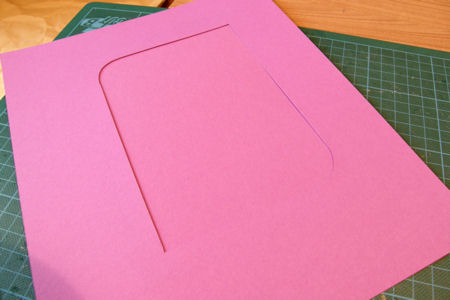

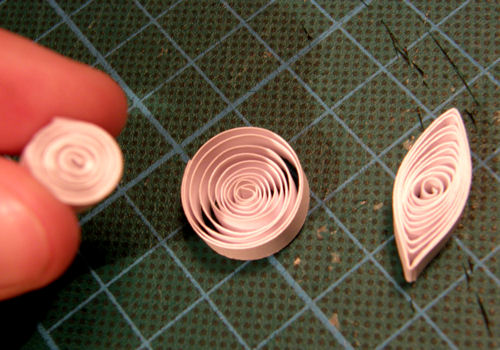
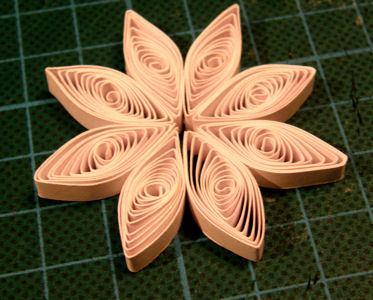

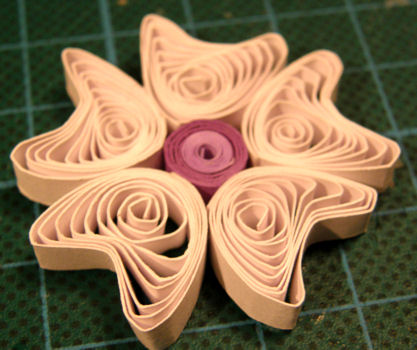
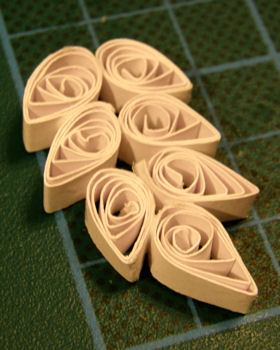
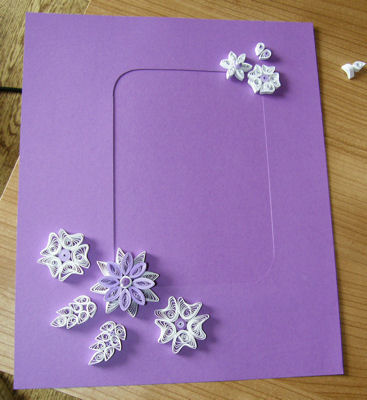
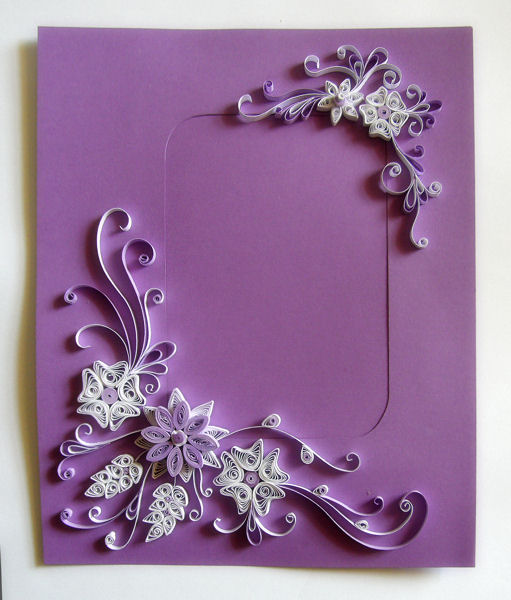
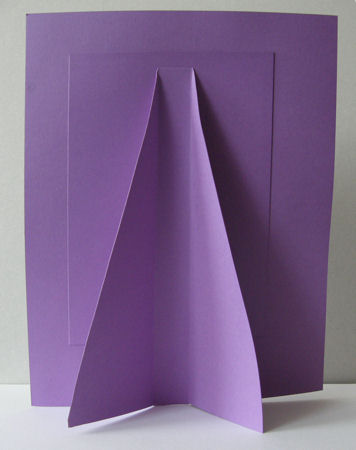
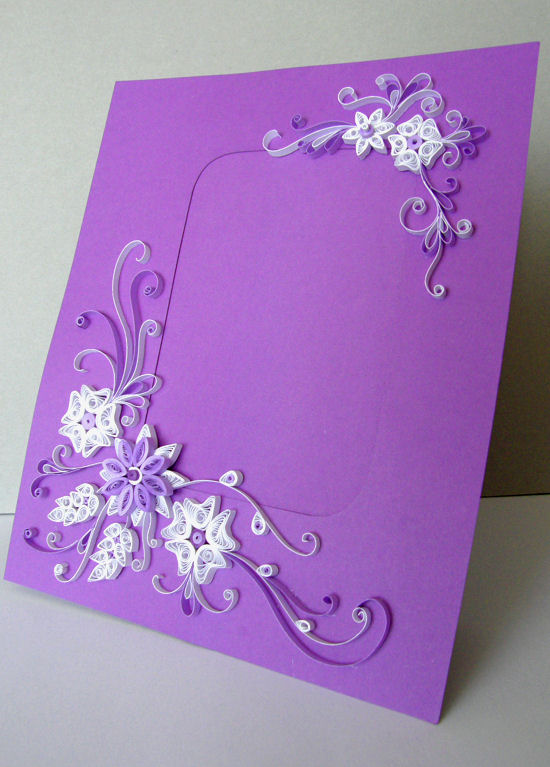

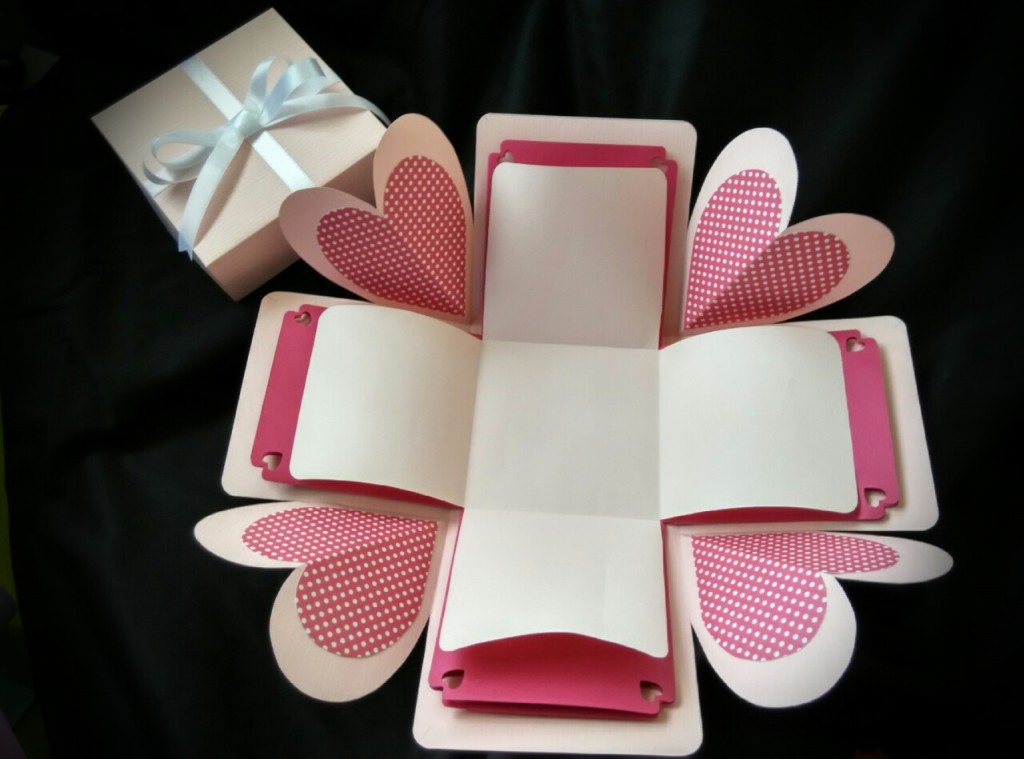
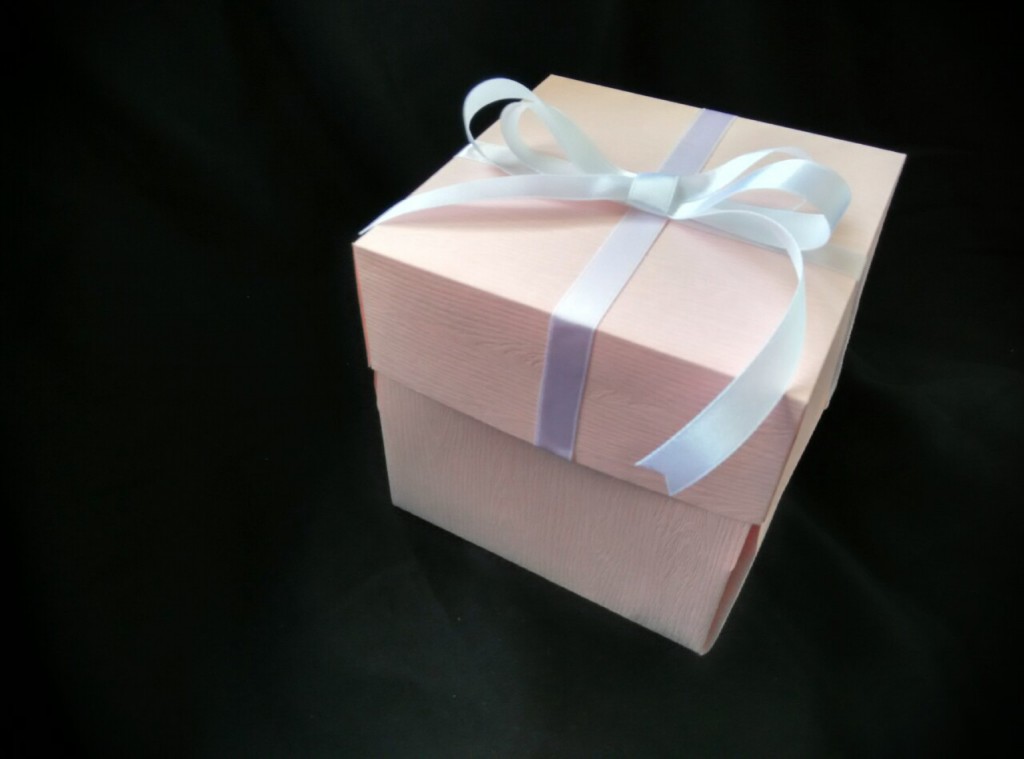
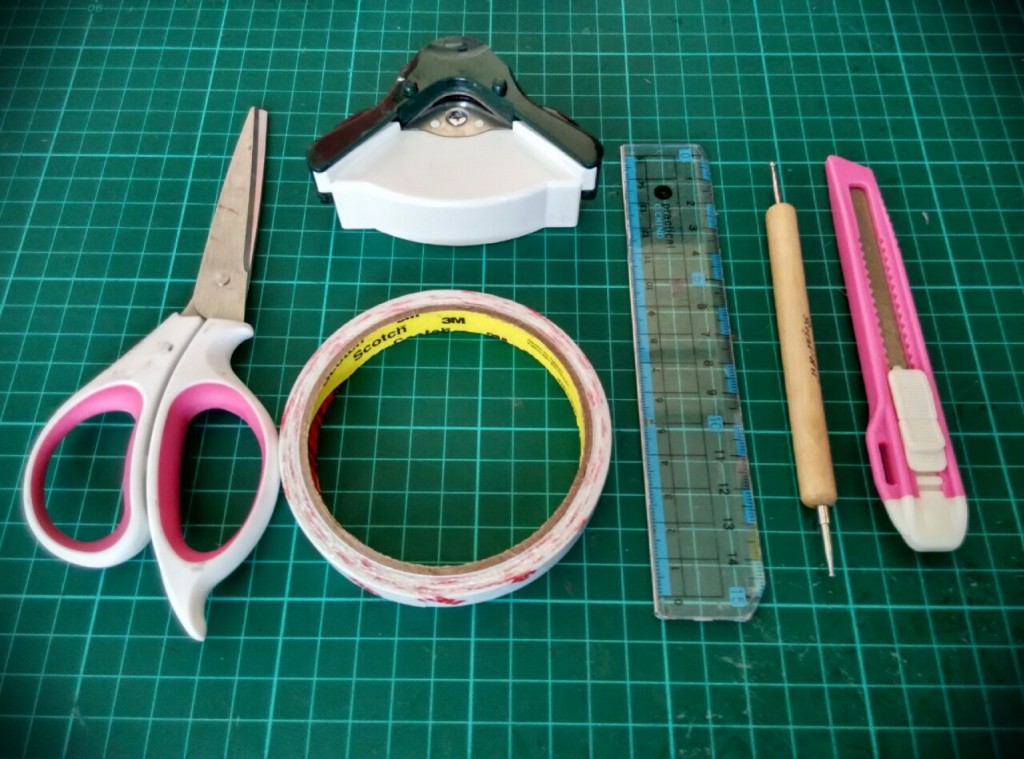
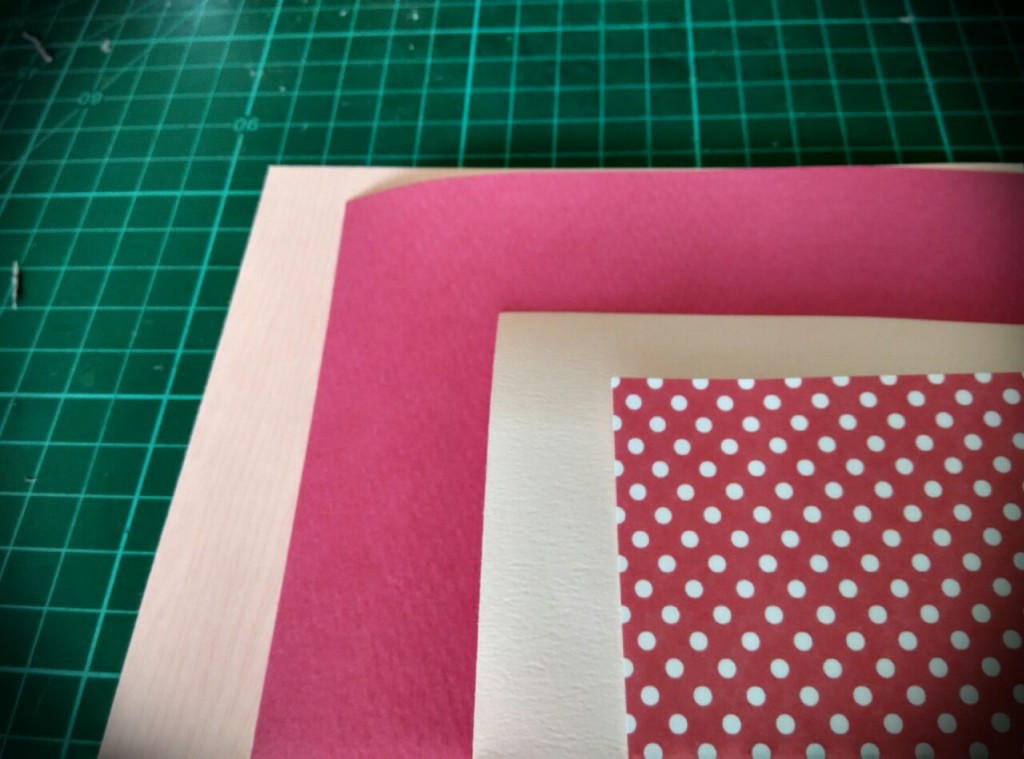 Step1.
Step1.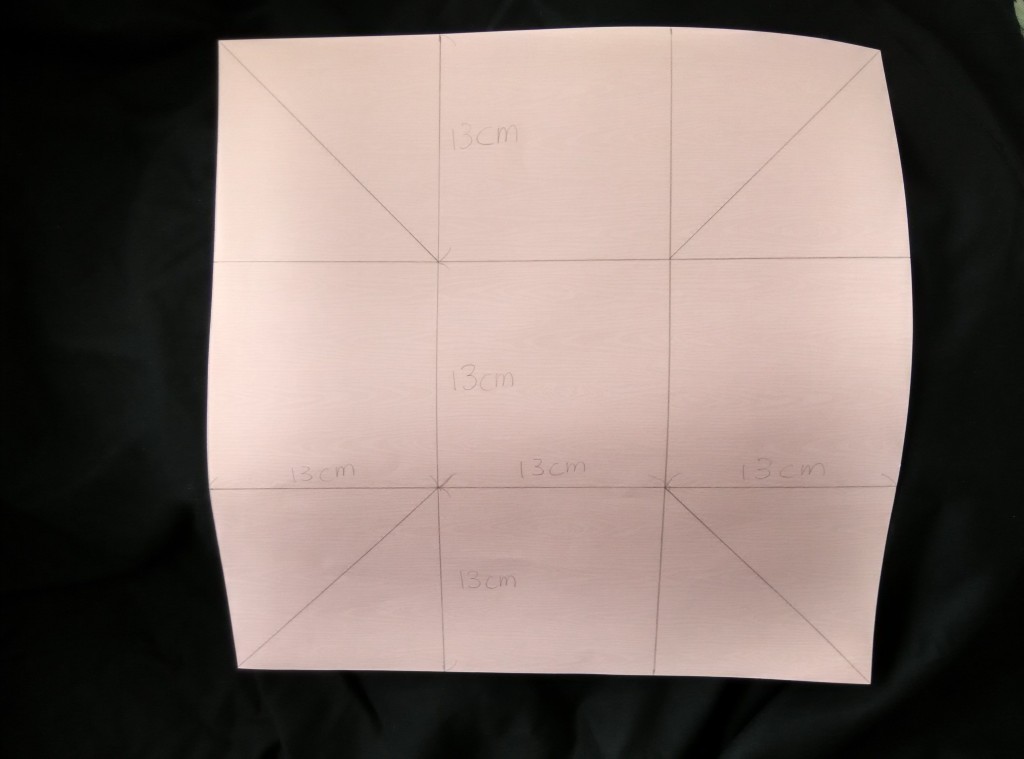 Step2.
Step2.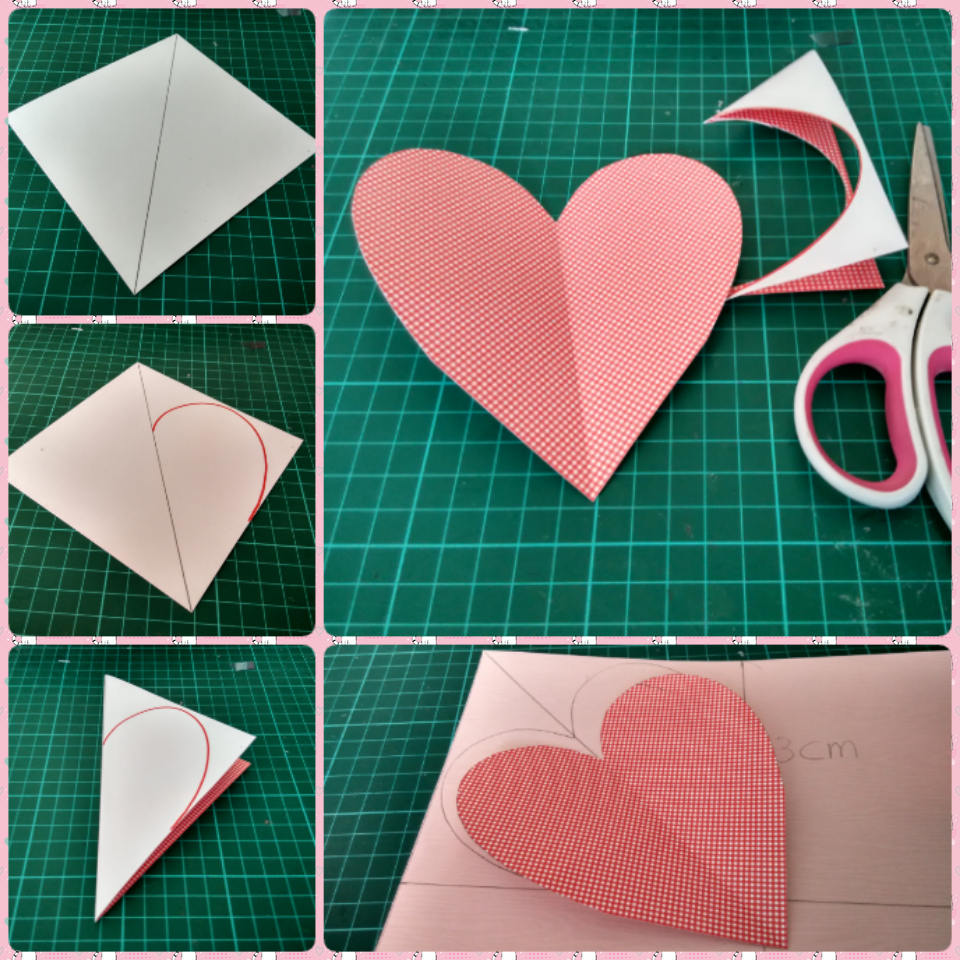
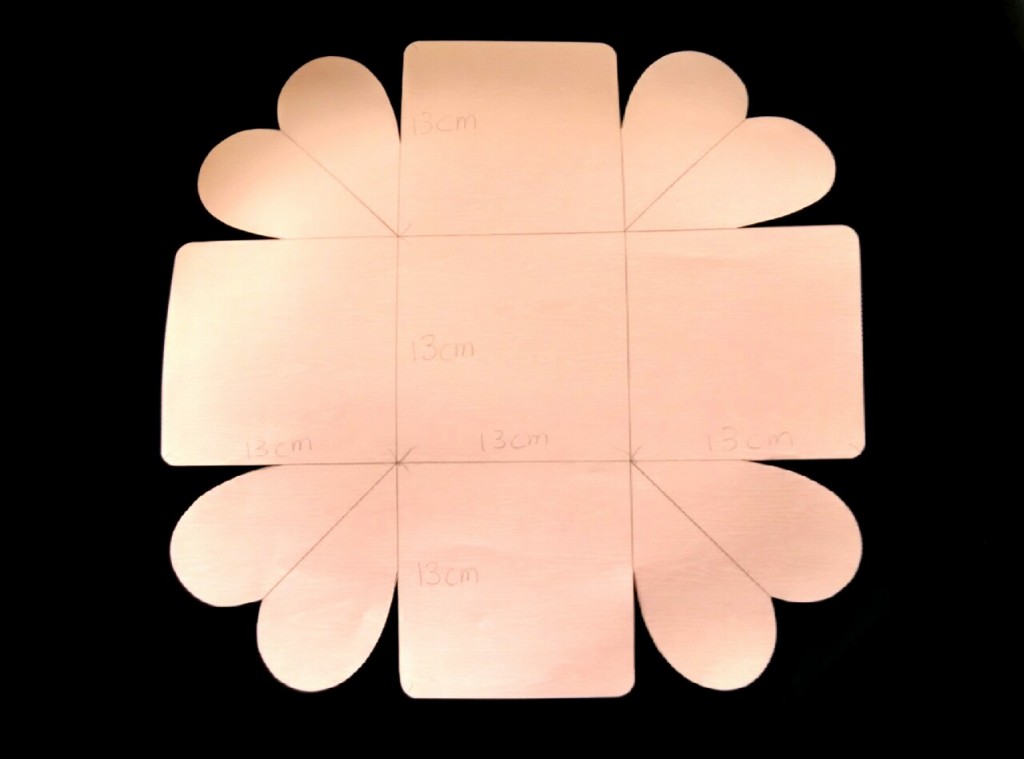
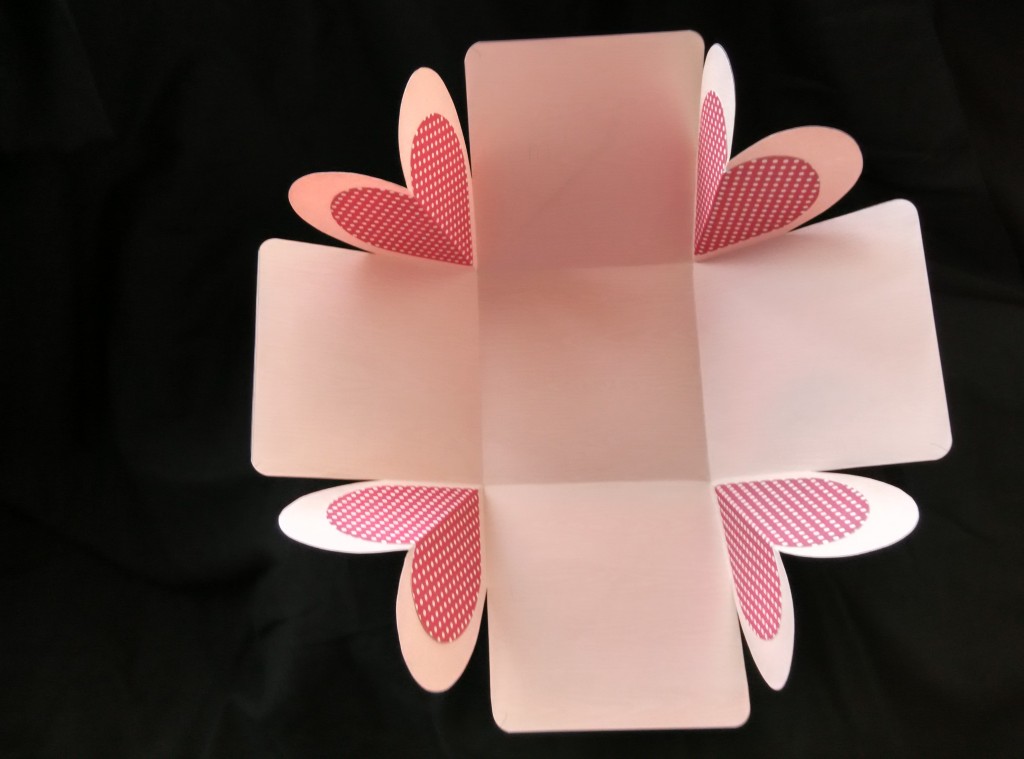 Step3.
Step3.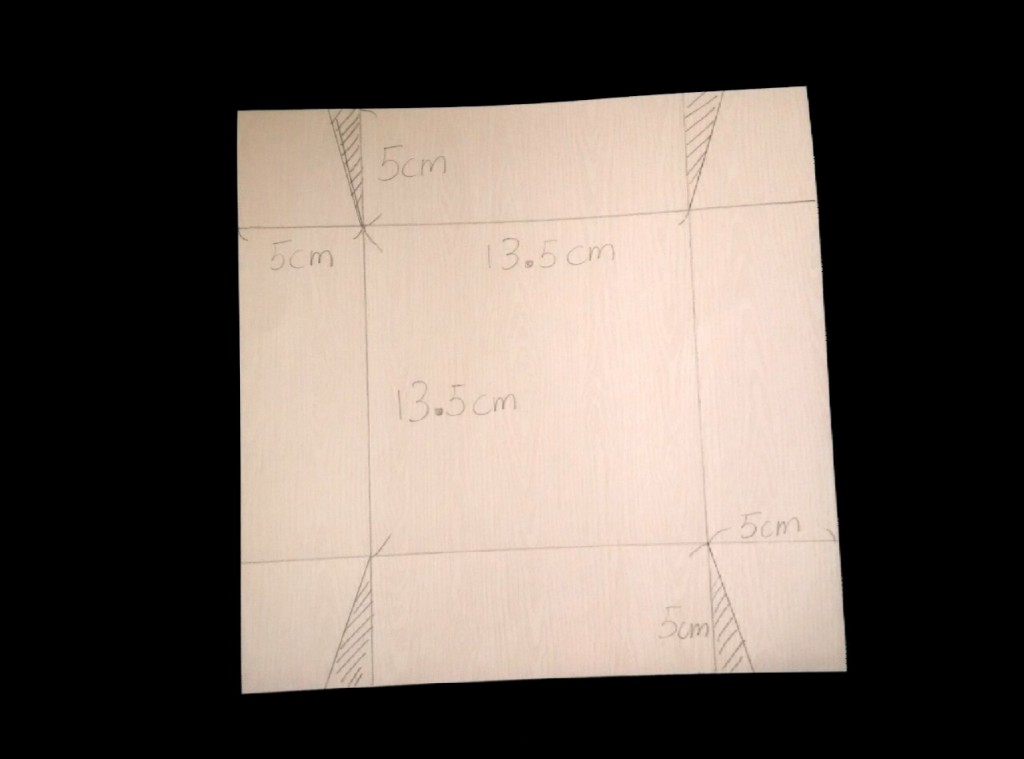
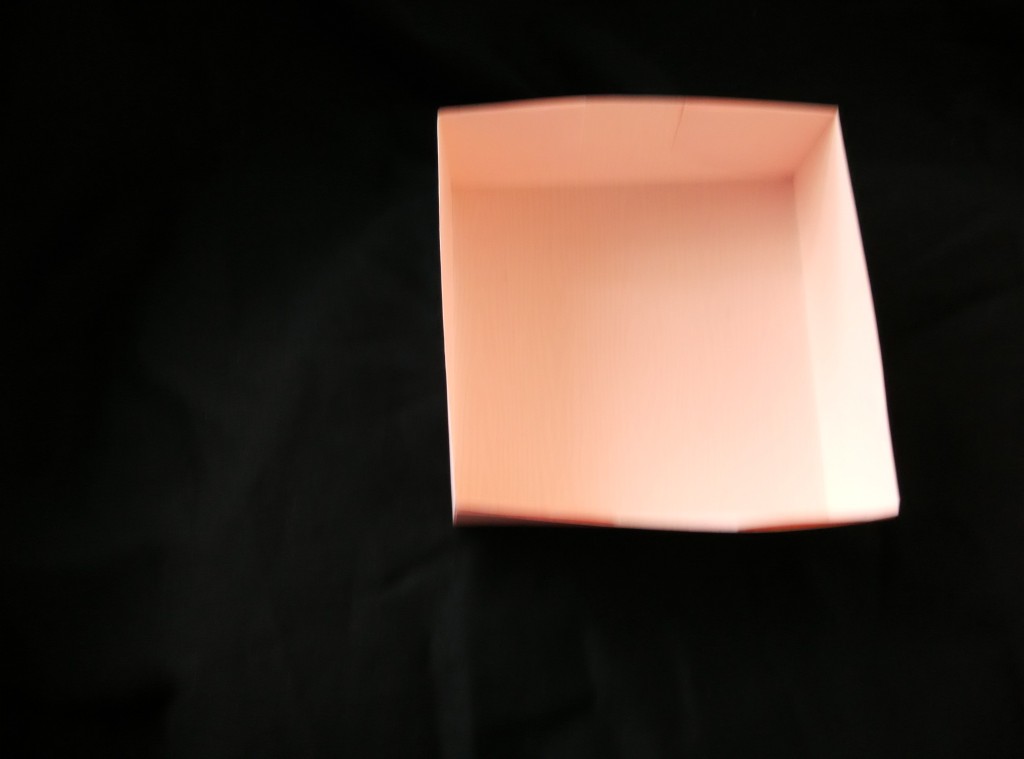 Step4.
Step4.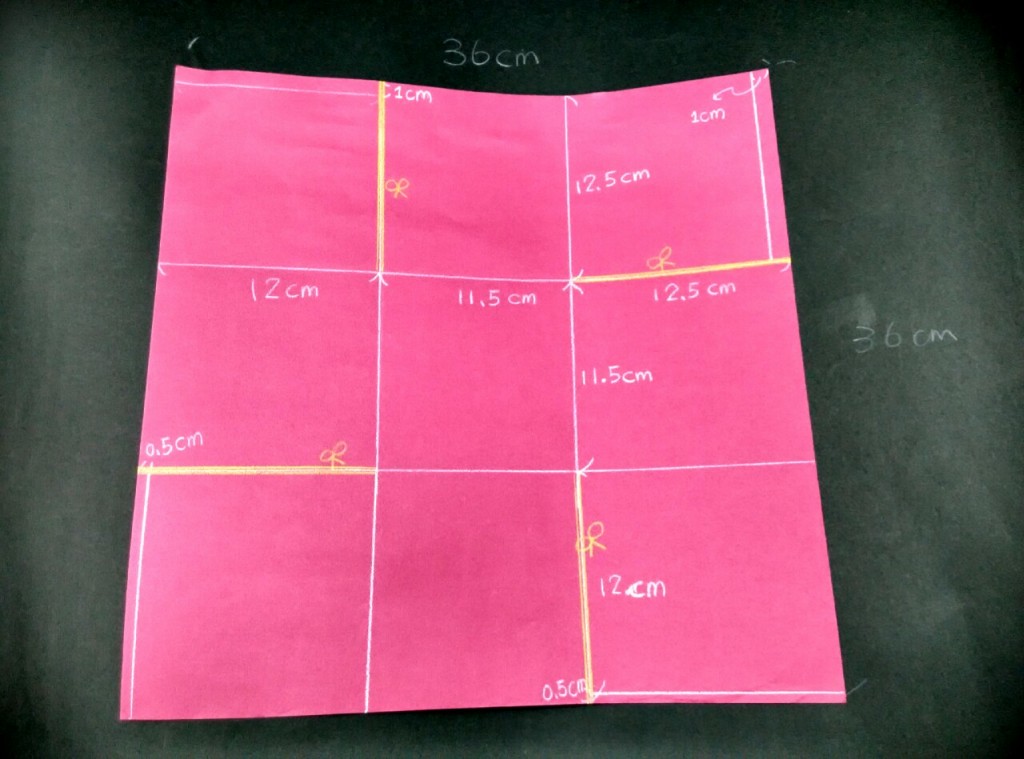
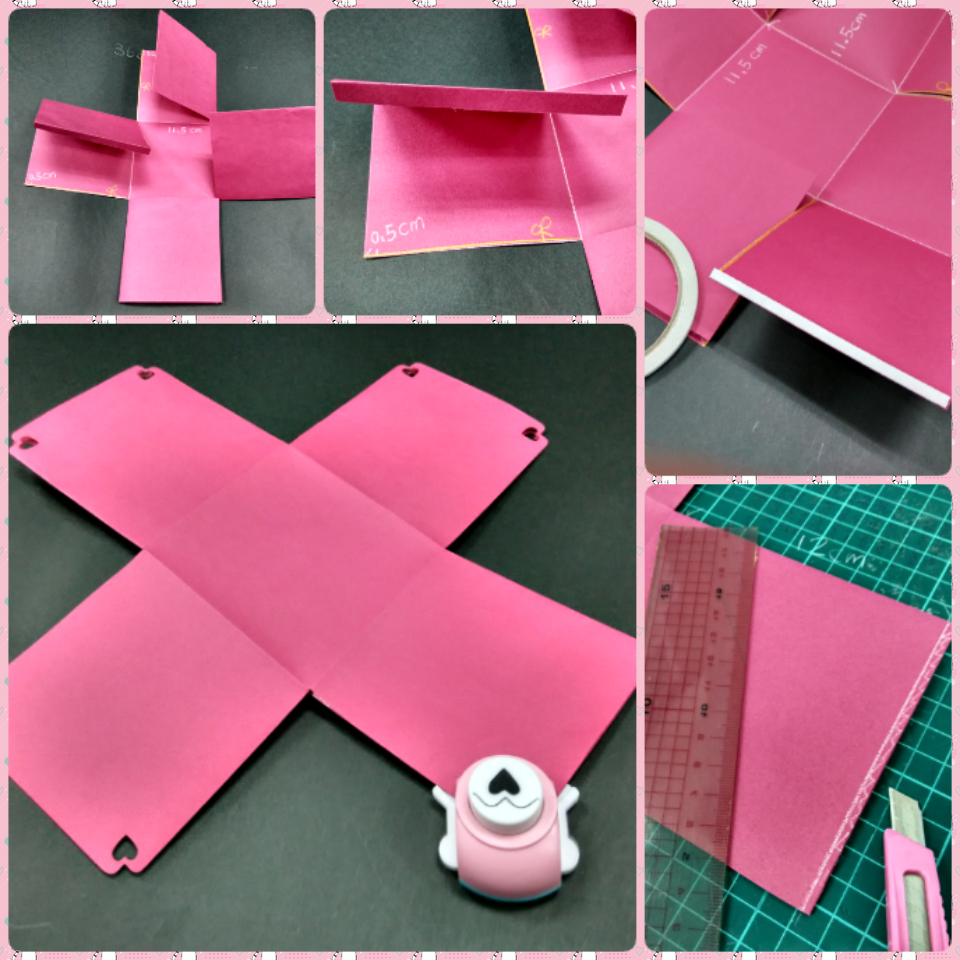
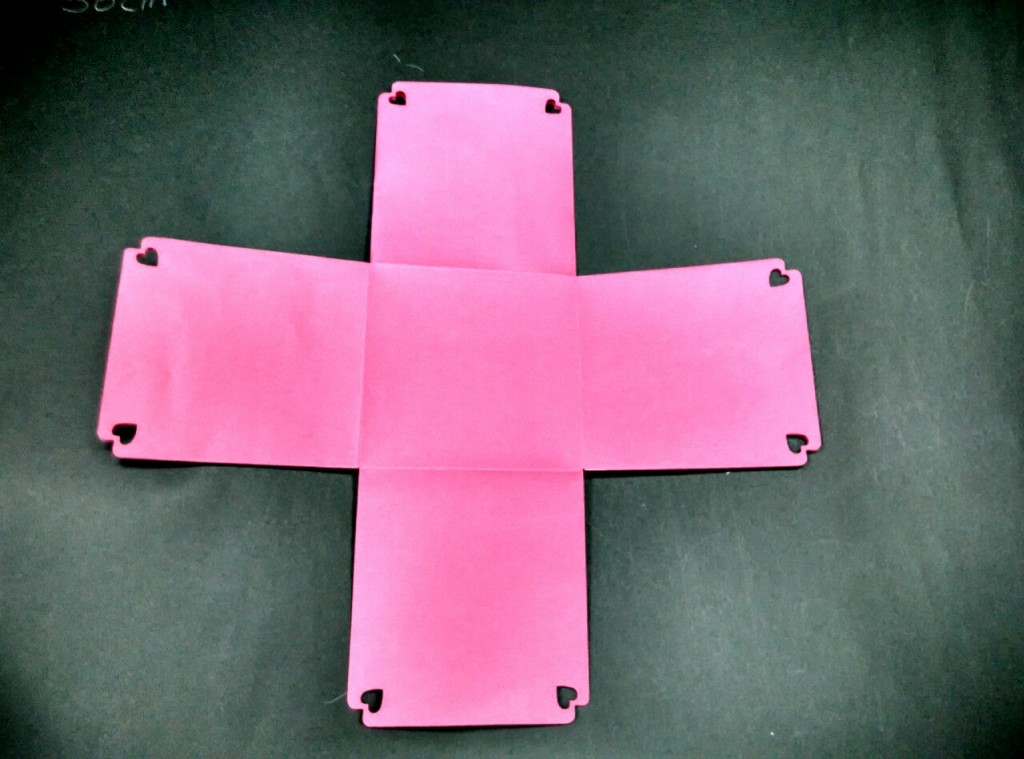 Step 5.
Step 5.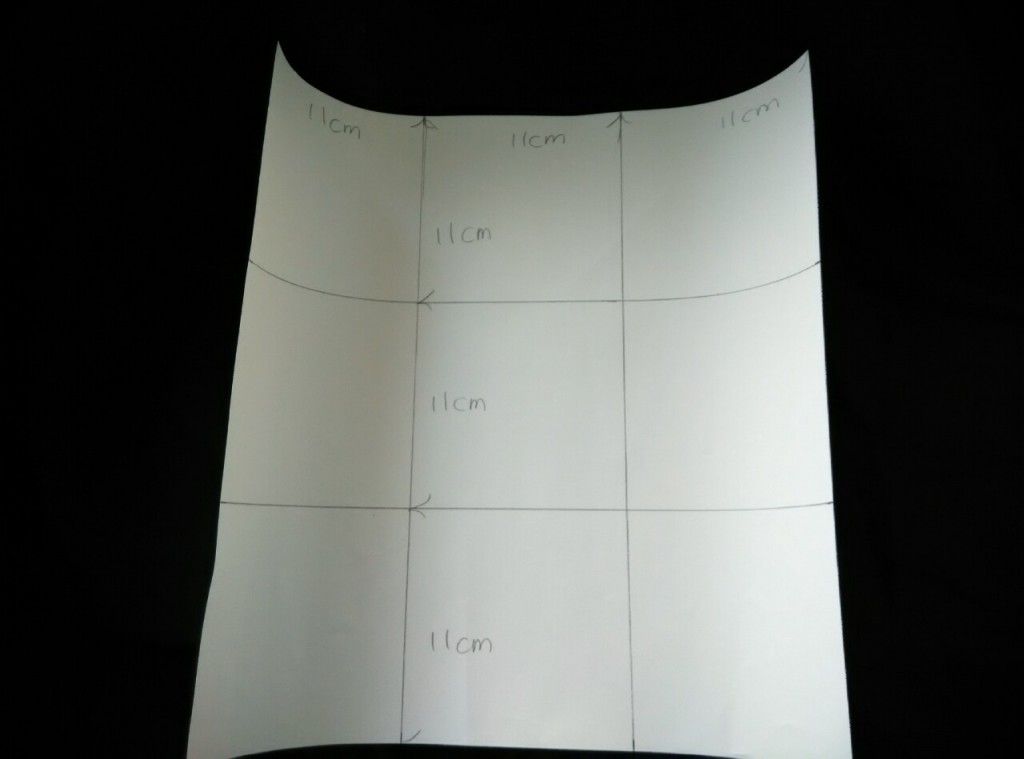
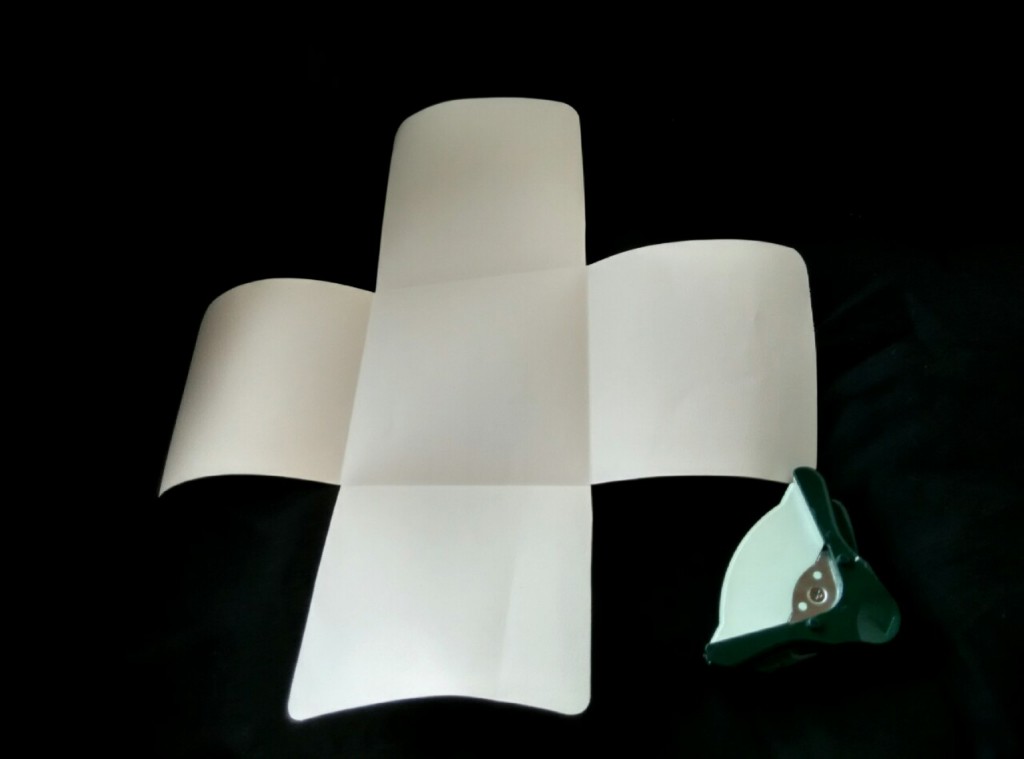
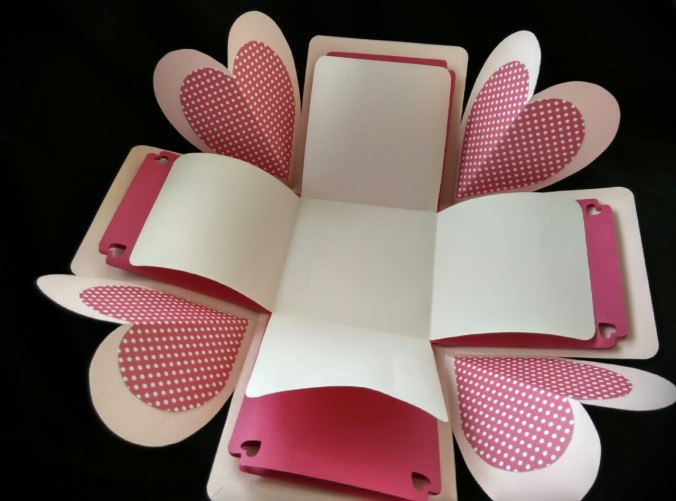
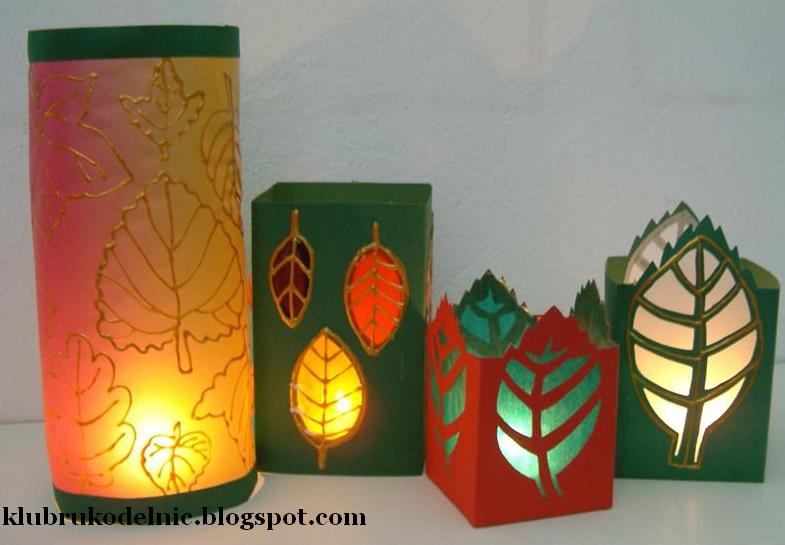
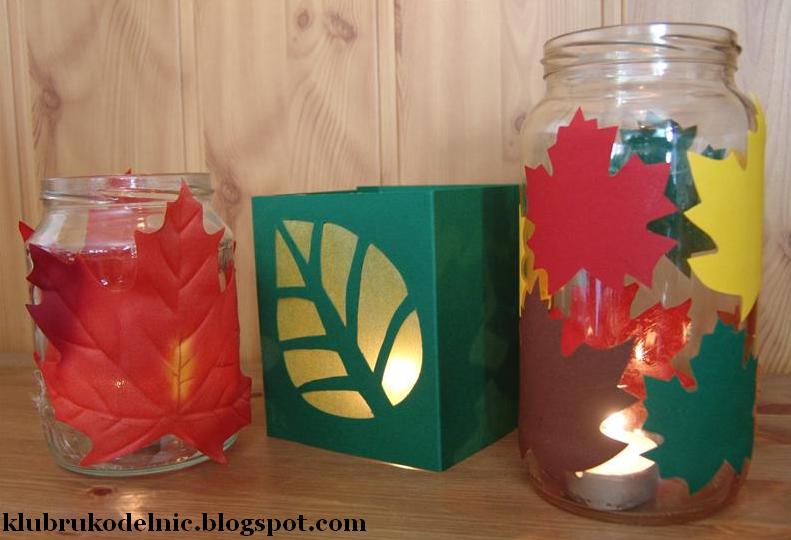
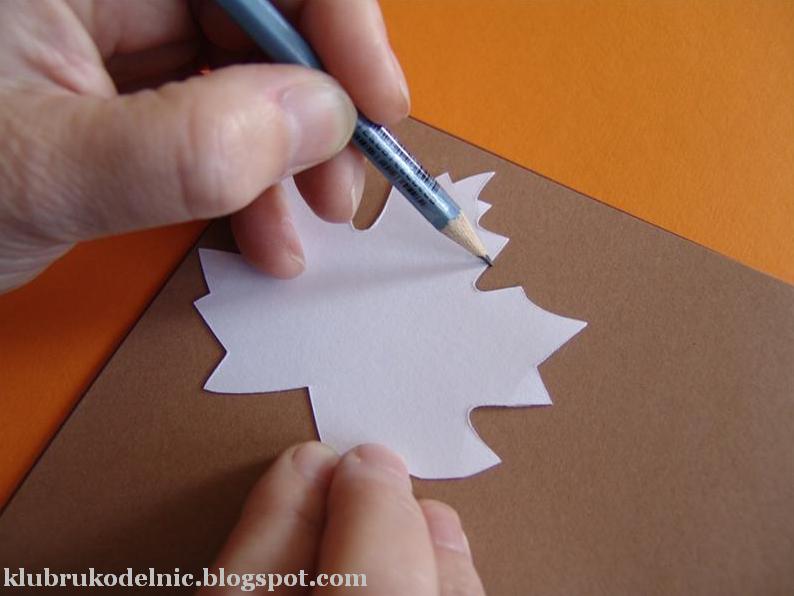 Cut out them.
Cut out them.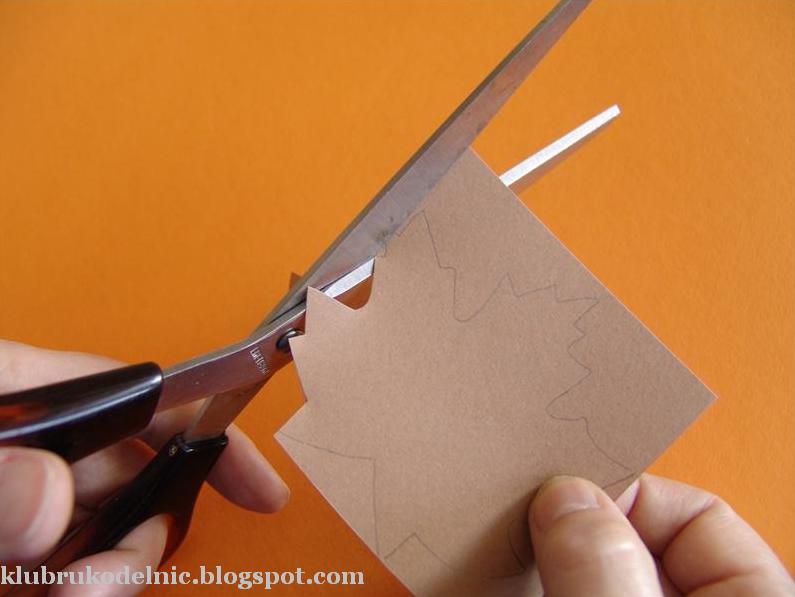 Cut the leaves pasted on the bank.
Cut the leaves pasted on the bank.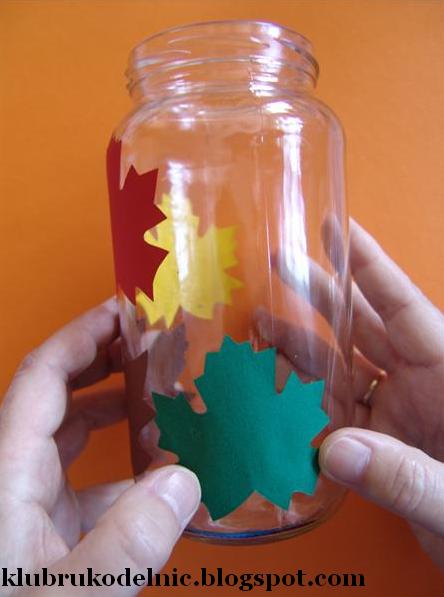 Another flashlight is made from a sheet of solid cardboard the size of 12h41 cm. Pencil-lane divided into four rectangles the size of 12×10 cm, one will see at the end of a seam for bonding the candlestick. On one rectangle draw sheet (sheet a pattern of living). We cut it so as you can see in the photo – a sheet skeleton consisting of veins.
Another flashlight is made from a sheet of solid cardboard the size of 12h41 cm. Pencil-lane divided into four rectangles the size of 12×10 cm, one will see at the end of a seam for bonding the candlestick. On one rectangle draw sheet (sheet a pattern of living). We cut it so as you can see in the photo – a sheet skeleton consisting of veins.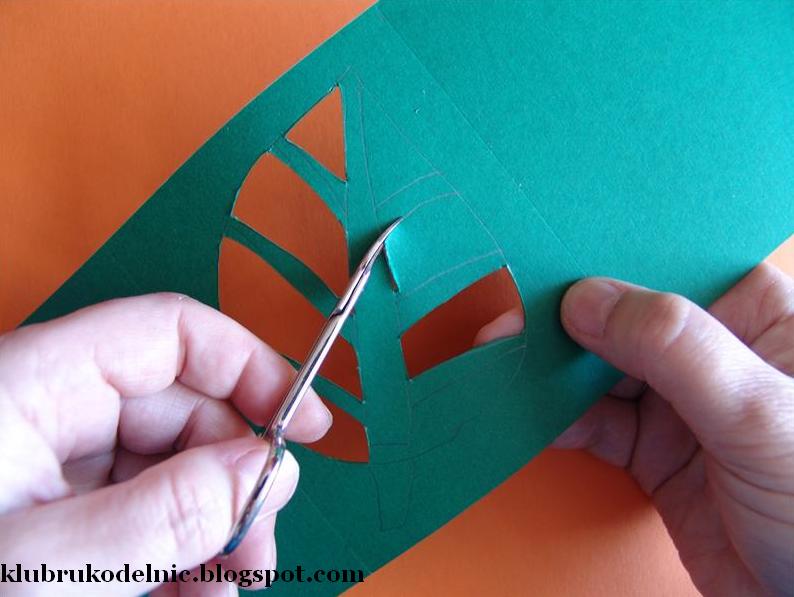 When the sheet is cut, smear “skeleton” of glue …
When the sheet is cut, smear “skeleton” of glue …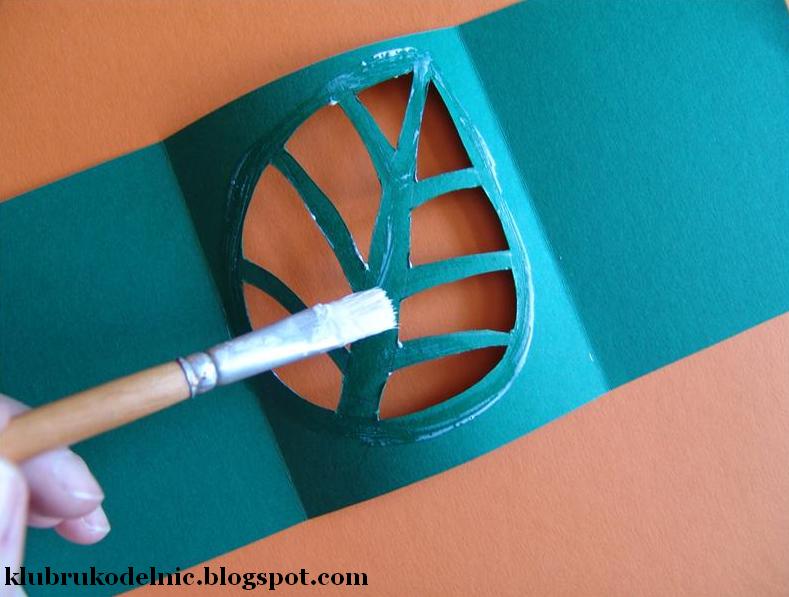 and seal the entire rectangle yellow transparent paper on the inside.
and seal the entire rectangle yellow transparent paper on the inside.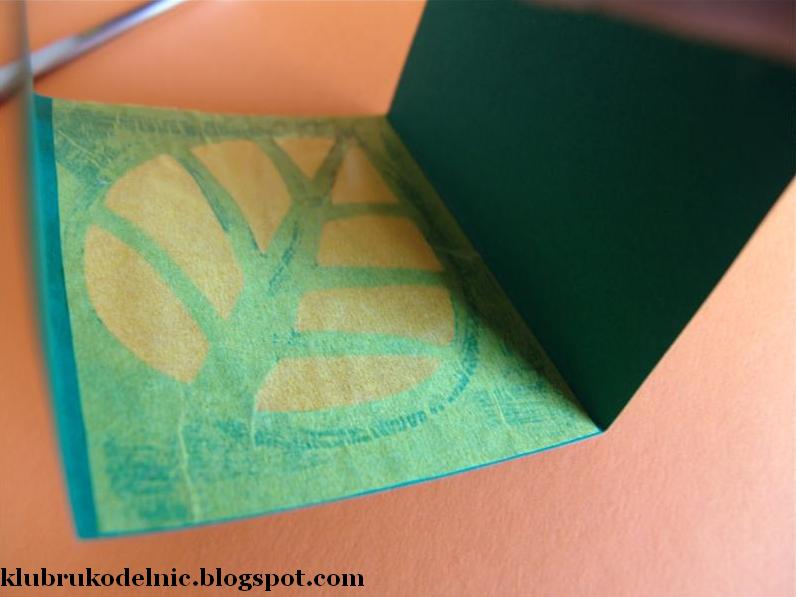 On the sheet of paper, draw coloured transparent outlines various contact collected leaves and draw them gold or silver paint. On the upper and lower edge of the solid stick the strips of coloured cardboard. When the paint is dry, glue the sheet into a cylinder. It will turn the flashlight, which can be inserted with a candle jar. Very nice these lanterns look at the window from the street, set between the panes.
On the sheet of paper, draw coloured transparent outlines various contact collected leaves and draw them gold or silver paint. On the upper and lower edge of the solid stick the strips of coloured cardboard. When the paint is dry, glue the sheet into a cylinder. It will turn the flashlight, which can be inserted with a candle jar. Very nice these lanterns look at the window from the street, set between the panes.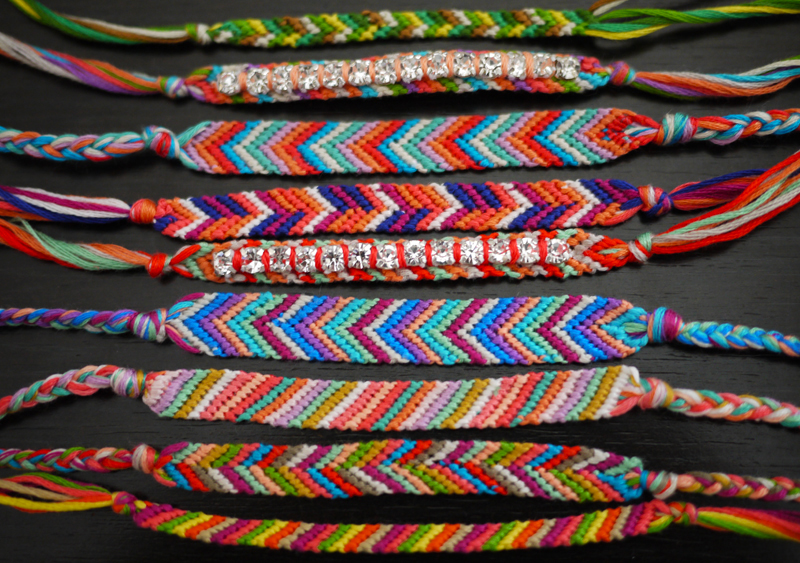
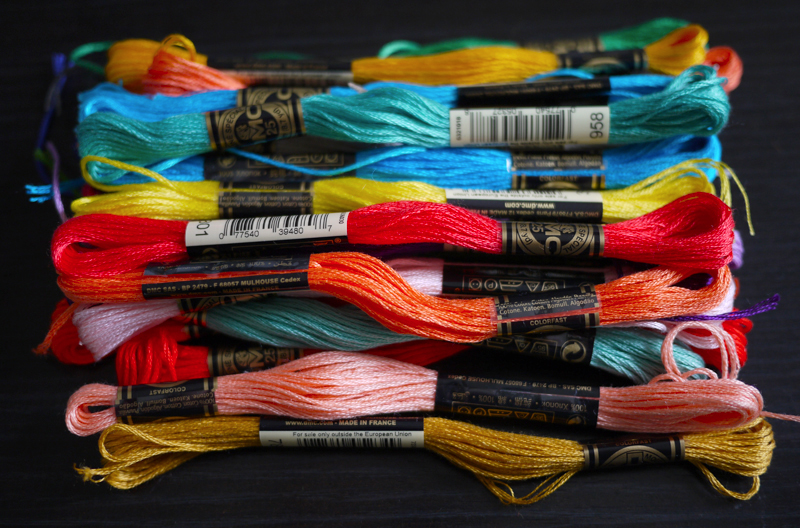 Start by cutting several strands of embroidery thread at about 24 inches each. Make sure there are two sets of each color. Combine the threads and tie a knot, leaving at least 3 inches of slack. Tape it to a flat surface or safety pin it to a pillow. Separate the two sets, arranging the strands in a mirror-image pattern with the outside strands the same color and so on moving inwards.
Start by cutting several strands of embroidery thread at about 24 inches each. Make sure there are two sets of each color. Combine the threads and tie a knot, leaving at least 3 inches of slack. Tape it to a flat surface or safety pin it to a pillow. Separate the two sets, arranging the strands in a mirror-image pattern with the outside strands the same color and so on moving inwards.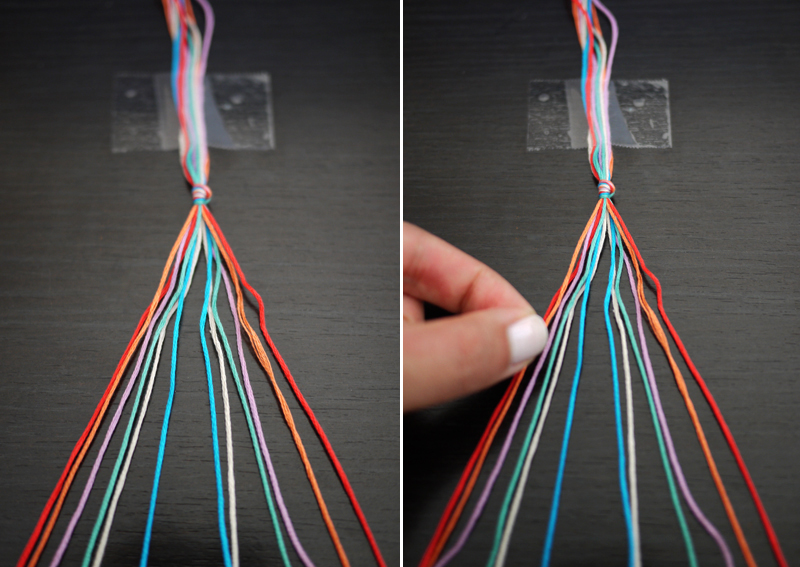 Start on the left side with the outermost color (shown here in red) and make a forward knot by creating a 4-shape over the 2nd color, loop it under and back through the opening.
Start on the left side with the outermost color (shown here in red) and make a forward knot by creating a 4-shape over the 2nd color, loop it under and back through the opening.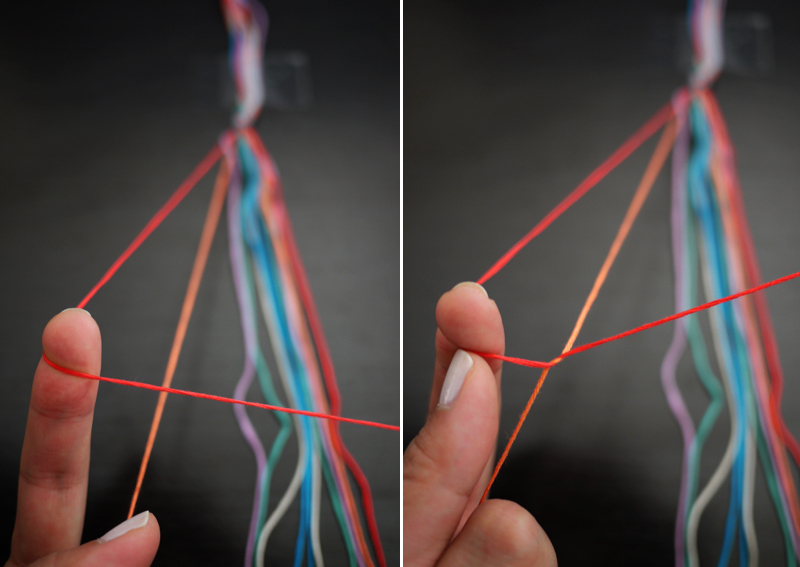 Pull up and to the right to tighten. Make the same knot twice over each color. Continue knotting over each color, towards the right, until the outermost color has carried over to the middle. This is one half of the chevron pattern.
Pull up and to the right to tighten. Make the same knot twice over each color. Continue knotting over each color, towards the right, until the outermost color has carried over to the middle. This is one half of the chevron pattern.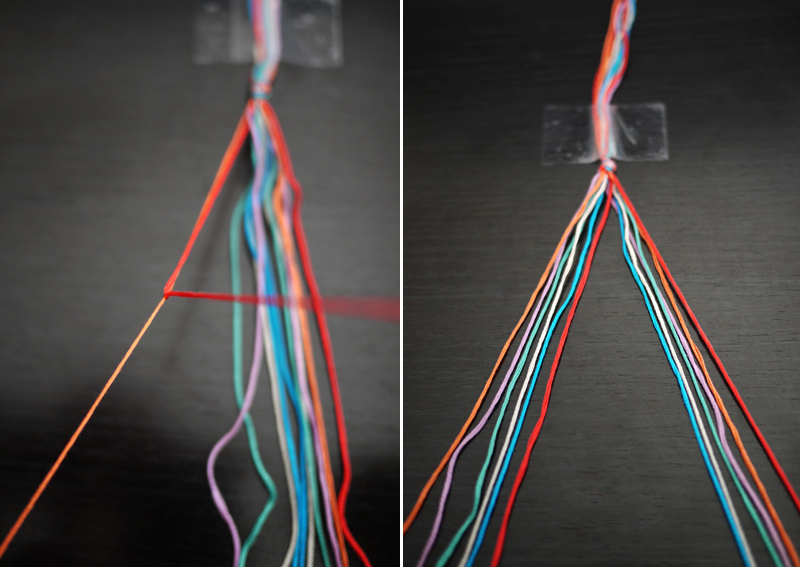 Now pick up the outermost color on the right side (show here in red) and make a backward knot, creating a reverse 4-shape over the 2nd color, loop it under and back through the opening. Pull up and to the left to tighten. Don’t forget to knot twice over each color!
Now pick up the outermost color on the right side (show here in red) and make a backward knot, creating a reverse 4-shape over the 2nd color, loop it under and back through the opening. Pull up and to the left to tighten. Don’t forget to knot twice over each color!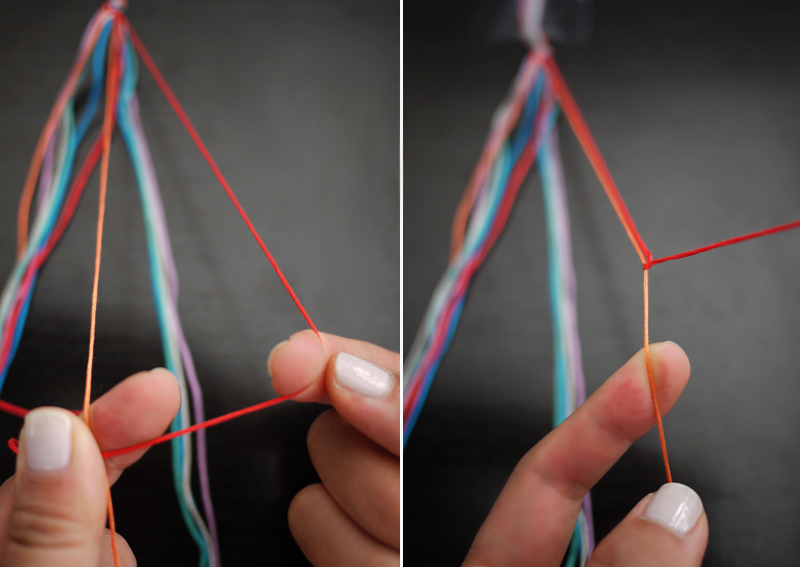 Continue knotting towards the left until the outermost strand reaches the middle. Tie a backwards knot with the two middle strands to connect the two halves. Did you remember to knot twice? The first chevron row is complete! Continue with the the next color, which is now the outermost strand . . .
Continue knotting towards the left until the outermost strand reaches the middle. Tie a backwards knot with the two middle strands to connect the two halves. Did you remember to knot twice? The first chevron row is complete! Continue with the the next color, which is now the outermost strand . . .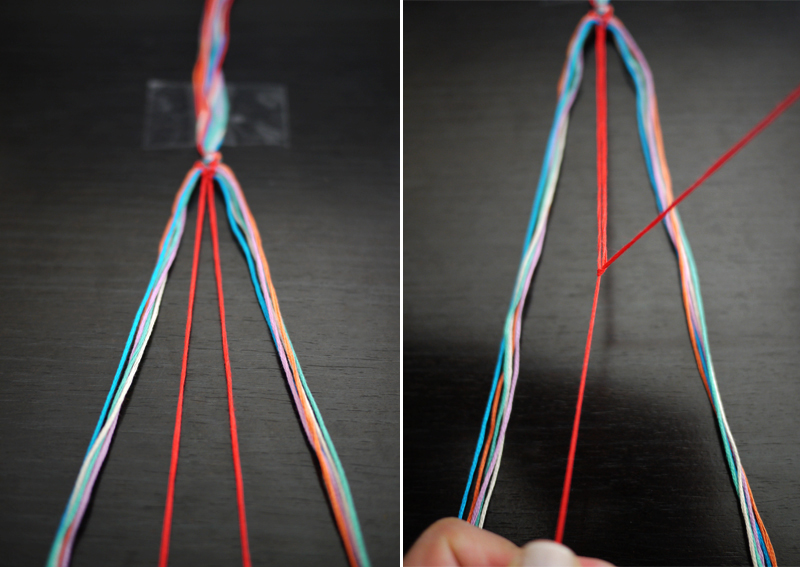 Remembering the color order is important for the first few rows but after the 3rd or 4th row, the strands will fall nicely in place. Finish it with a knot and a braid.
Remembering the color order is important for the first few rows but after the 3rd or 4th row, the strands will fall nicely in place. Finish it with a knot and a braid.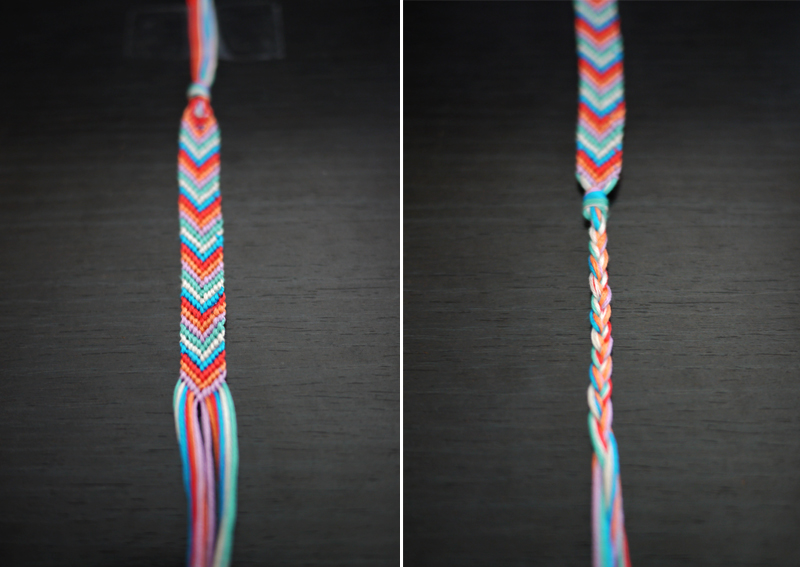 For a striped bracelet, cut one set of colors and simply carry the outermost color all the way through to the right side. For an assymetrical chevron, mix the colors when dividing them into 2 sets. Be sure to count the number of strands so you know when to stop in the middle each time. For an embellished bracelet, take a small piece of rhinestone chain, glue it to the top of the bracelet and stitch embroidery thread between each rhinestone with an embroidery needle.
For a striped bracelet, cut one set of colors and simply carry the outermost color all the way through to the right side. For an assymetrical chevron, mix the colors when dividing them into 2 sets. Be sure to count the number of strands so you know when to stop in the middle each time. For an embellished bracelet, take a small piece of rhinestone chain, glue it to the top of the bracelet and stitch embroidery thread between each rhinestone with an embroidery needle.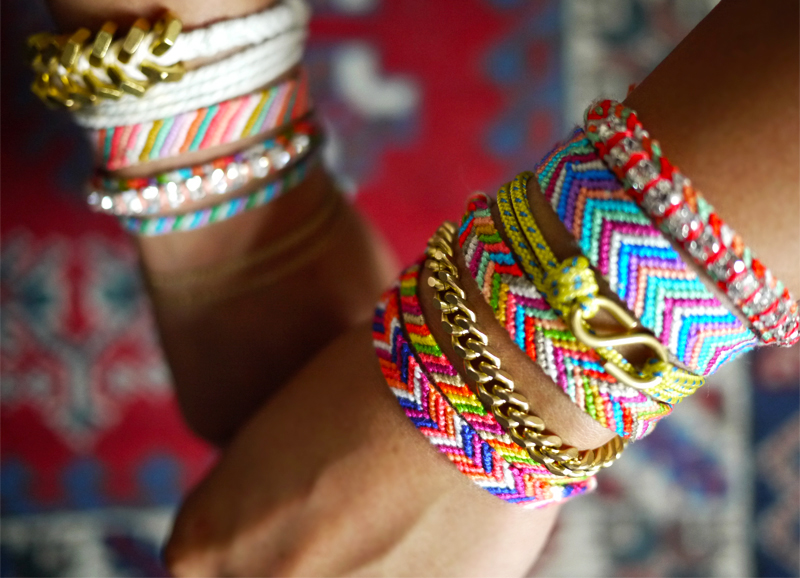

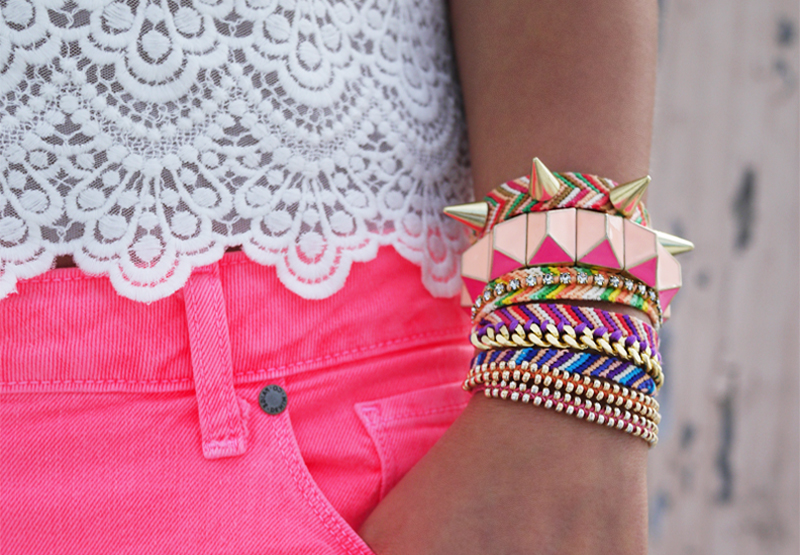
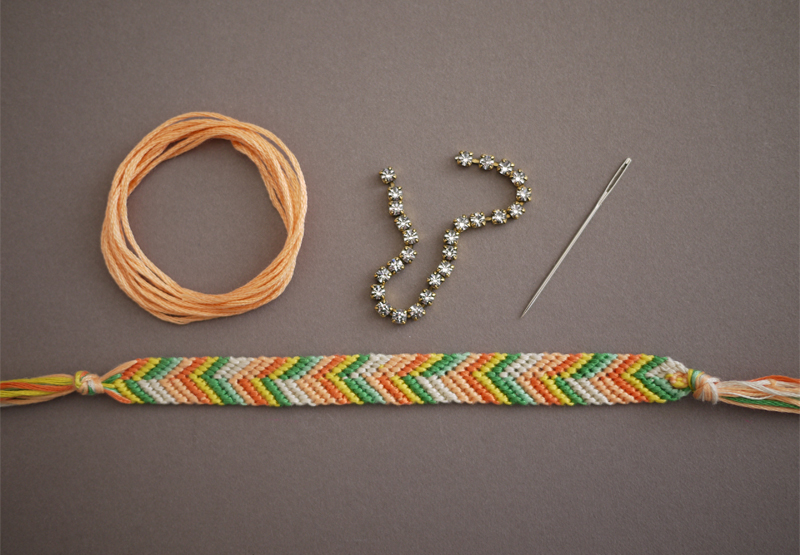 Thread the needle with embroidery floss and tie the end into a double knot. Push the needle through the back of bracelet. Lay the rhinestone chain along the middle of the bracelet, using the chevron pattern as a guide.
Thread the needle with embroidery floss and tie the end into a double knot. Push the needle through the back of bracelet. Lay the rhinestone chain along the middle of the bracelet, using the chevron pattern as a guide.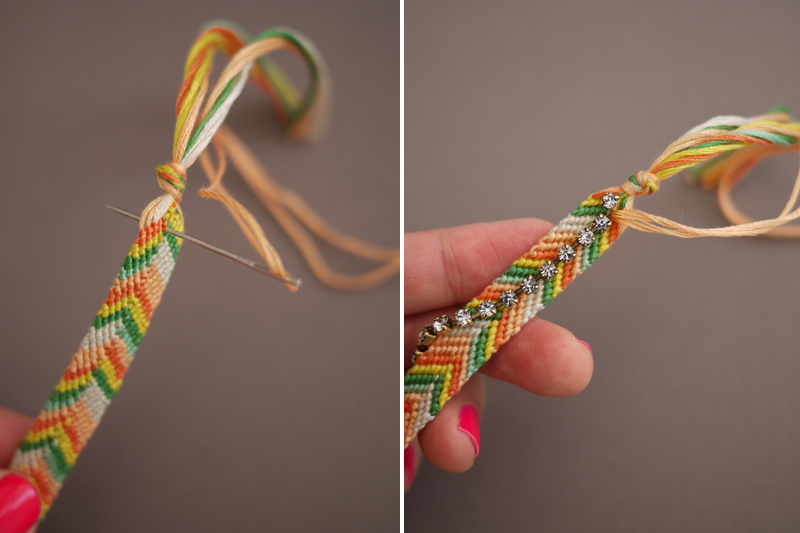 Stitch the floss between the first two rhinestone links, pushing needle out the middle of the bracelet. Bring the needle back through the middle, this time further down between the second and third links.
Stitch the floss between the first two rhinestone links, pushing needle out the middle of the bracelet. Bring the needle back through the middle, this time further down between the second and third links.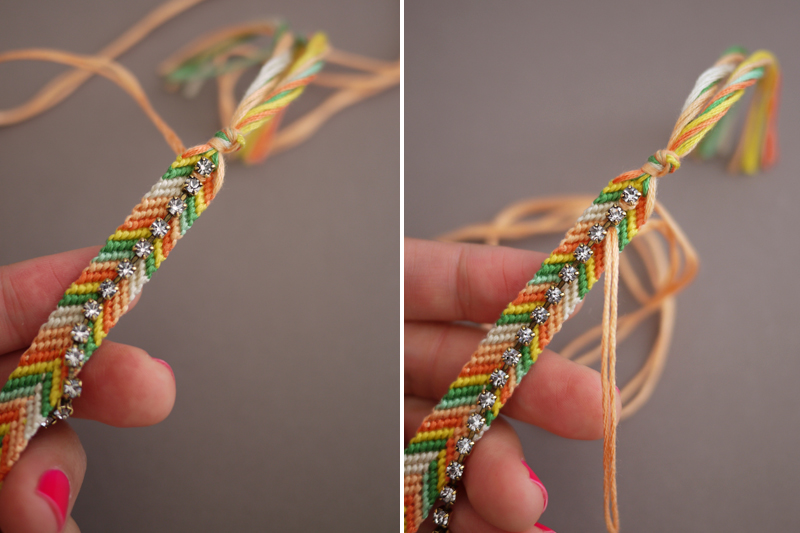 Continue stitching between the rhinestone links. After the very last stitch, tie a double knot on the backside and trim the ends.
Continue stitching between the rhinestone links. After the very last stitch, tie a double knot on the backside and trim the ends.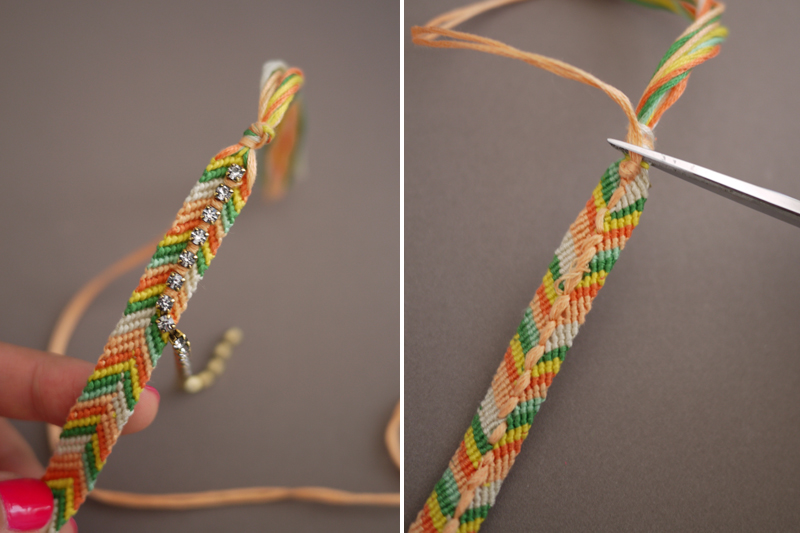 Your friendship bracelet is sparkling and finished!
Your friendship bracelet is sparkling and finished!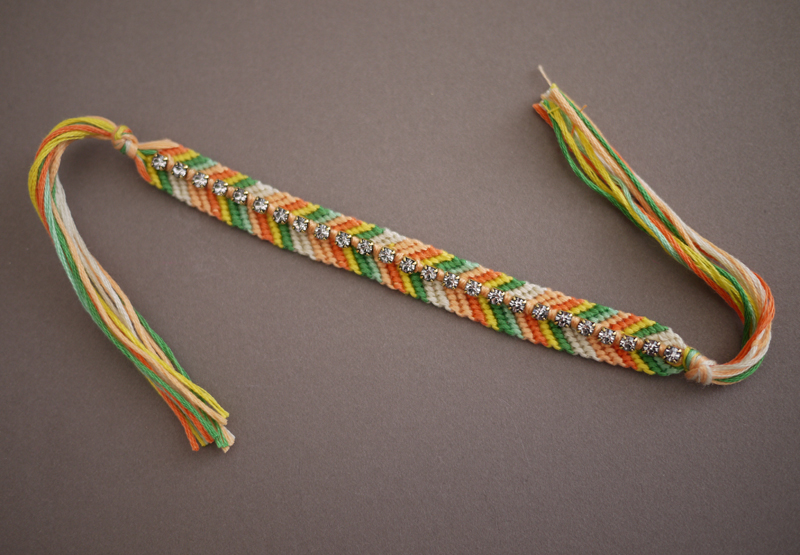
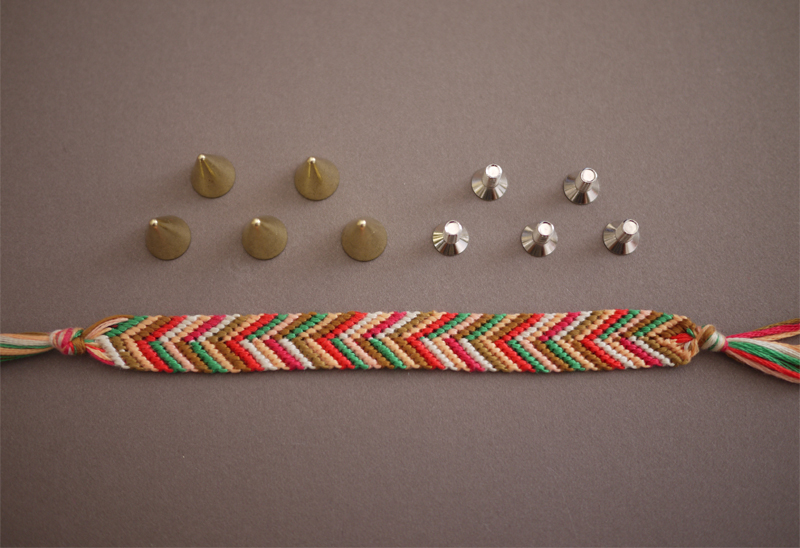 Use a Sharpie or marker to make 5 evenly spaced marks along the middle of the friendship bracelet. From the backside, push the point of the scissors through the mark to create a hole.
Use a Sharpie or marker to make 5 evenly spaced marks along the middle of the friendship bracelet. From the backside, push the point of the scissors through the mark to create a hole.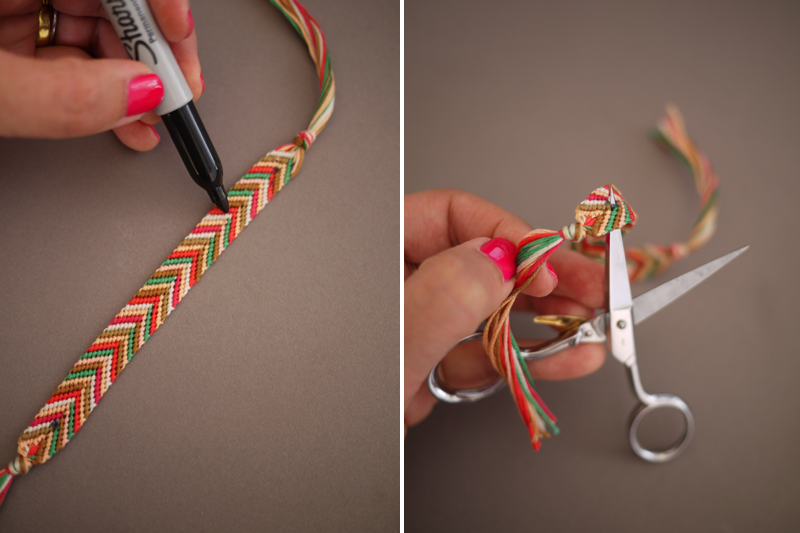 Push a screw through the hole. Twist the coned spike onto the screw and use a screwdriver to tighten.
Push a screw through the hole. Twist the coned spike onto the screw and use a screwdriver to tighten.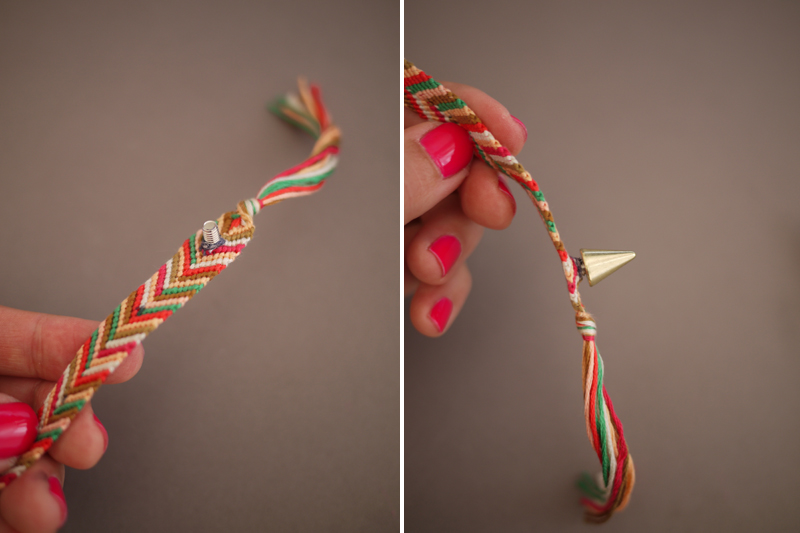 Repeat the steps with the rest of the spikes. Voila! Your friendship bracelet has a spiked spine.
Repeat the steps with the rest of the spikes. Voila! Your friendship bracelet has a spiked spine.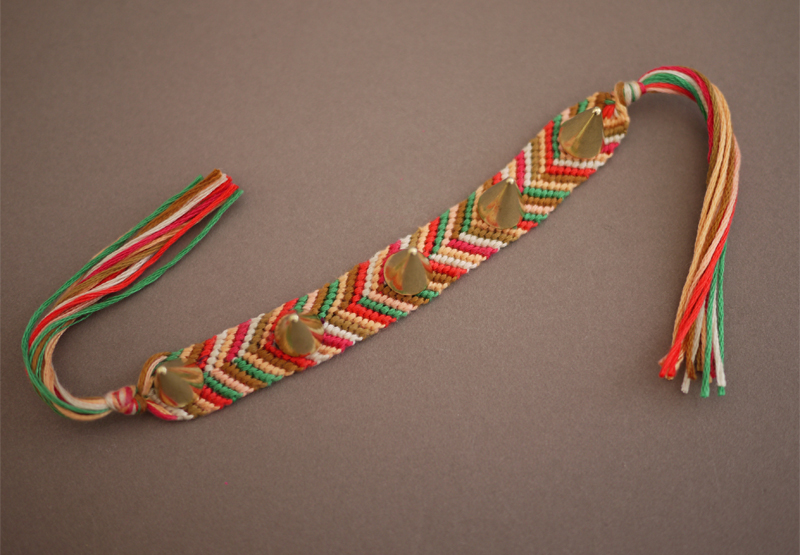
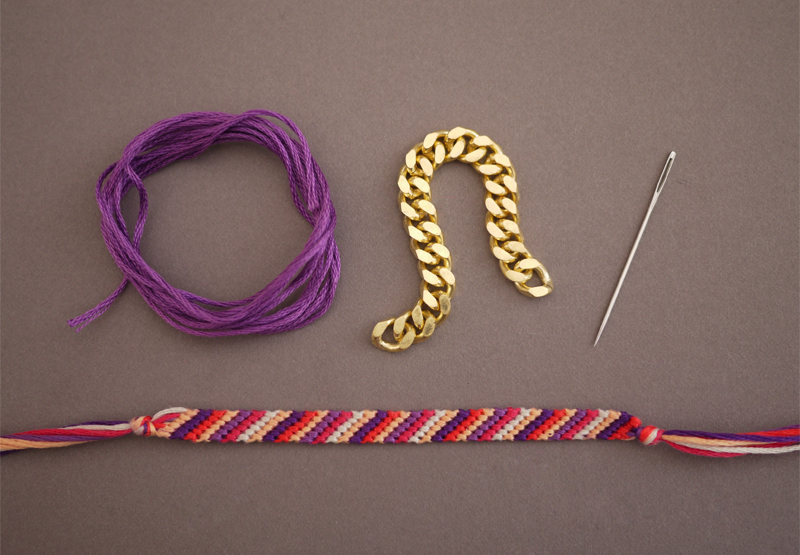 Thread the needle with embroidery floss. Untie one end of the friendship bracelet and re-knot it with the tail of the threaded embroidery floss. Push the needle through the outer edge of the backside of the bracelet.
Thread the needle with embroidery floss. Untie one end of the friendship bracelet and re-knot it with the tail of the threaded embroidery floss. Push the needle through the outer edge of the backside of the bracelet.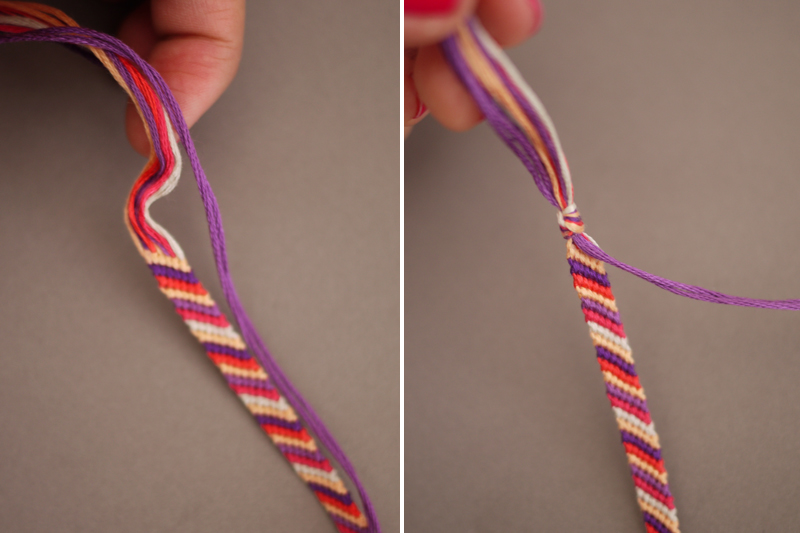 Lay the chain flat, against the edge of the bracelet. Thread the needle over and through the first link. Push the needle though the backside about two rows down. Depending on the width of each link, the row count may vary.
Lay the chain flat, against the edge of the bracelet. Thread the needle over and through the first link. Push the needle though the backside about two rows down. Depending on the width of each link, the row count may vary.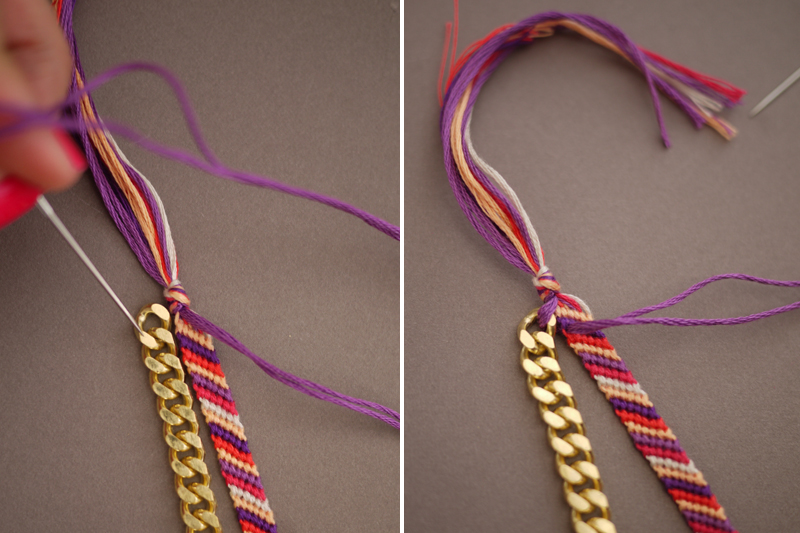 Keep stitching. Make two stitches around the last link, untie the knot and re-knot with the last of the floss. Trim away any excess.
Keep stitching. Make two stitches around the last link, untie the knot and re-knot with the last of the floss. Trim away any excess.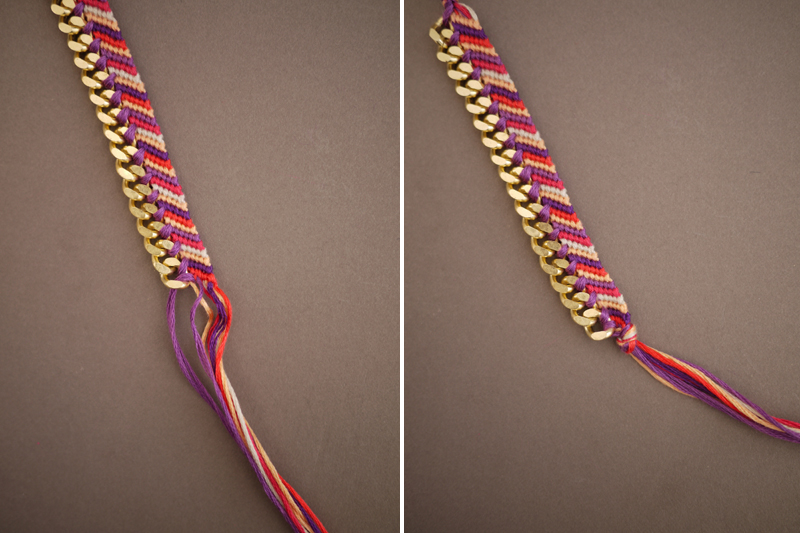 Your chain trimmed friendship bracelet now has an edge – how simple was that?
Your chain trimmed friendship bracelet now has an edge – how simple was that?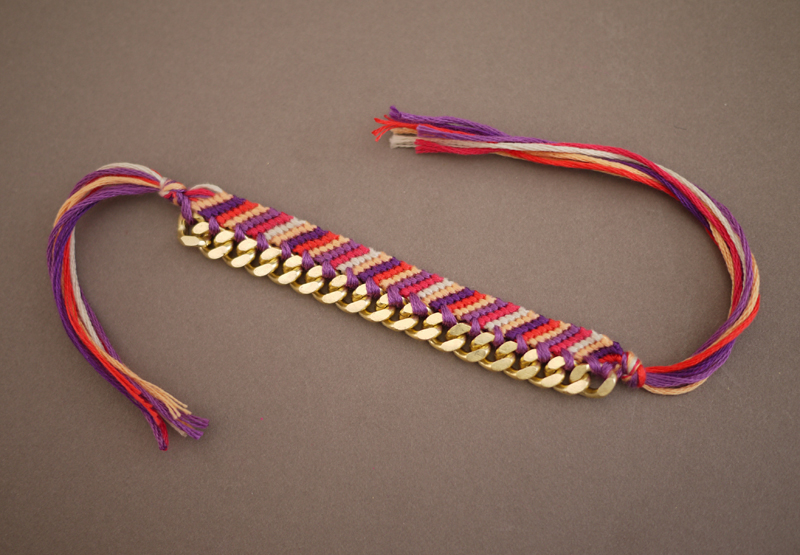 Stack ’em, give ’em away and you’re officially ready for summer.
Stack ’em, give ’em away and you’re officially ready for summer.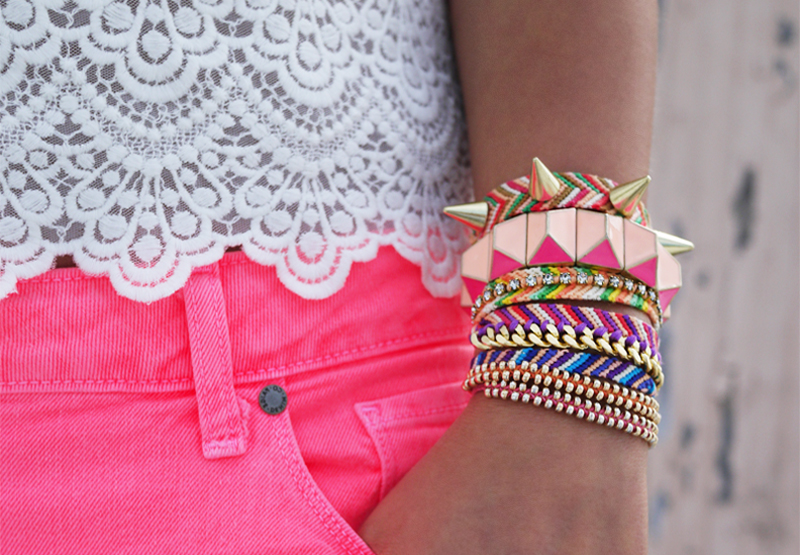

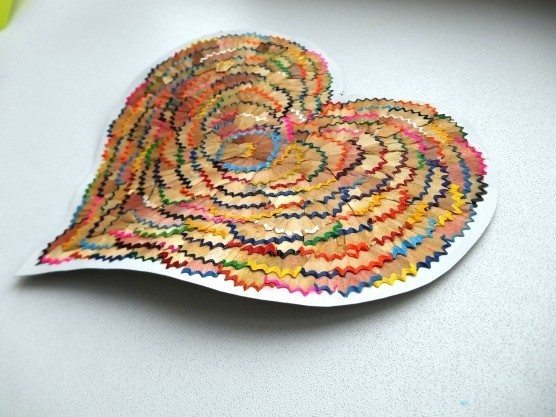
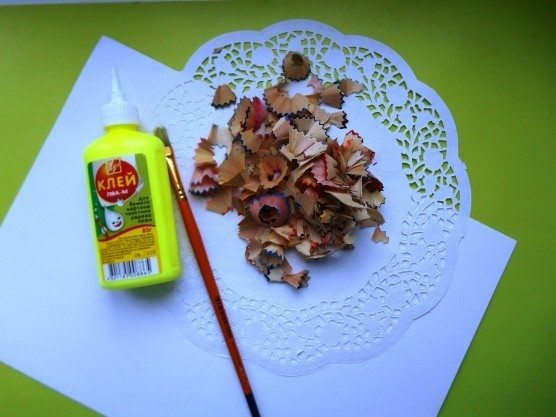
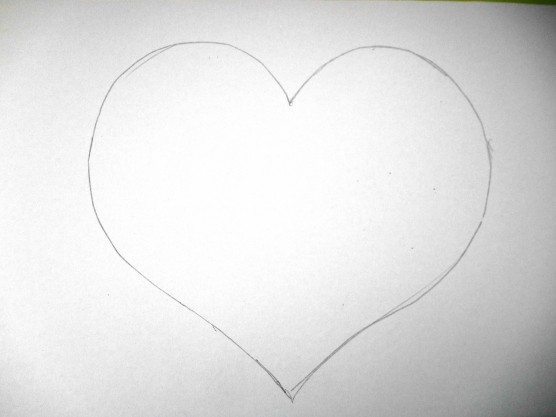 Apply glue along the edge of the small area and place the chips from pencils teeth outward, alternating by color.
Apply glue along the edge of the small area and place the chips from pencils teeth outward, alternating by color.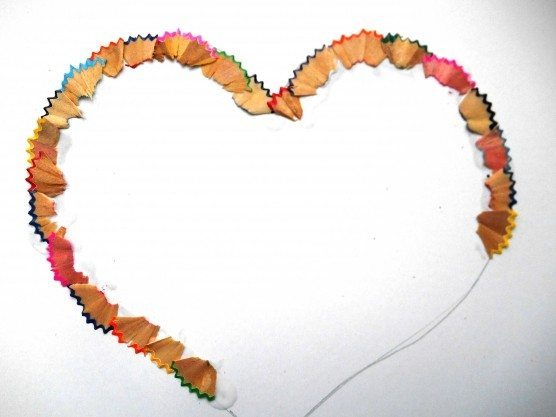 When the first row is laid, we proceed to gluing the second,
When the first row is laid, we proceed to gluing the second,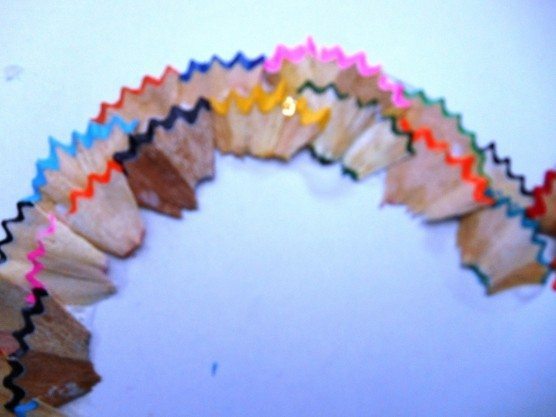 Then the third.
Then the third.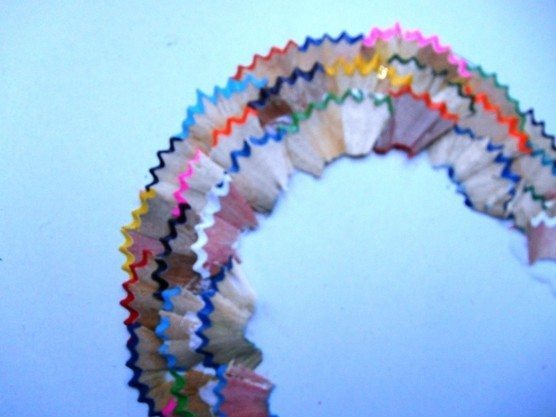
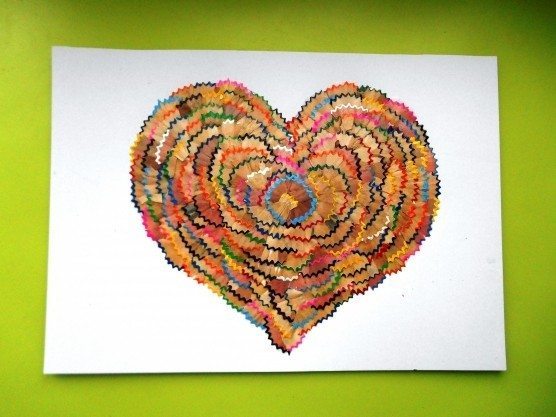
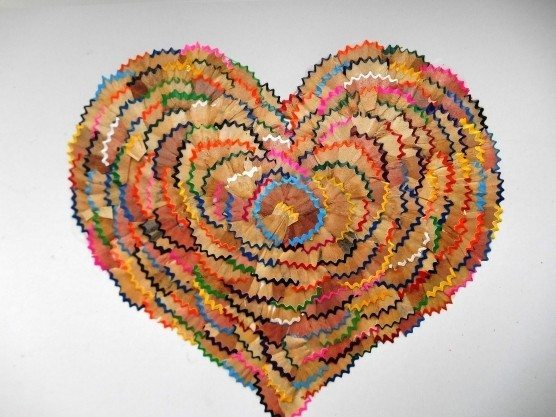
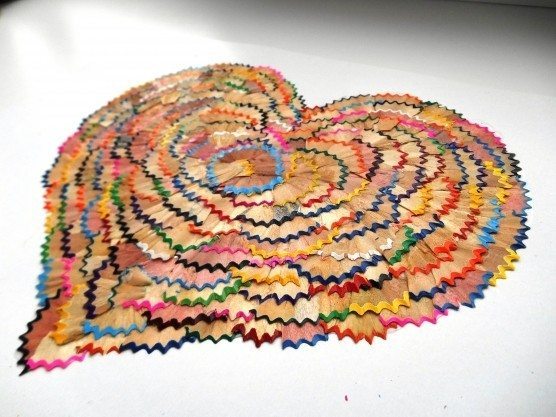 You can cut it, step back a little from the edge.
You can cut it, step back a little from the edge.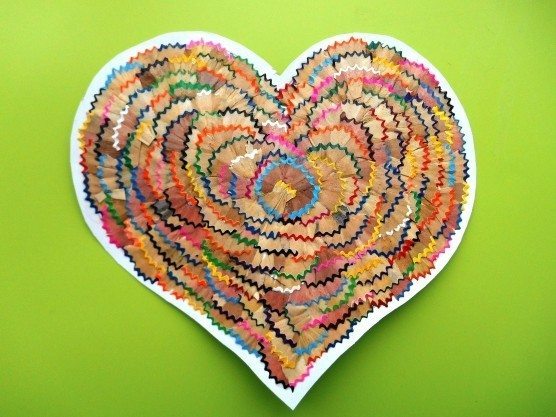
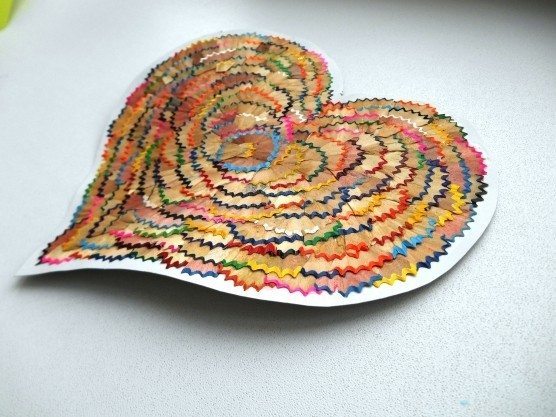 Thank you for attention.
Thank you for attention.